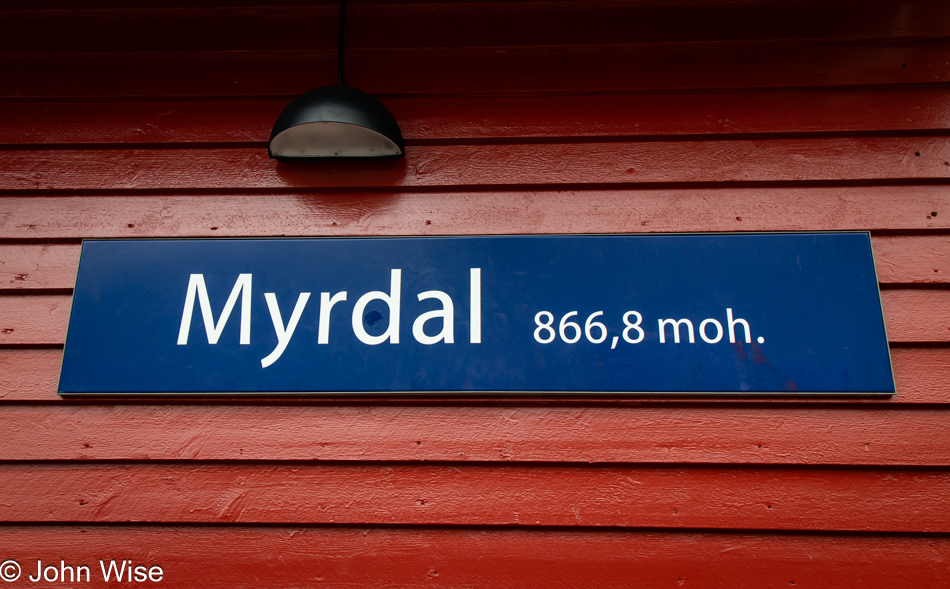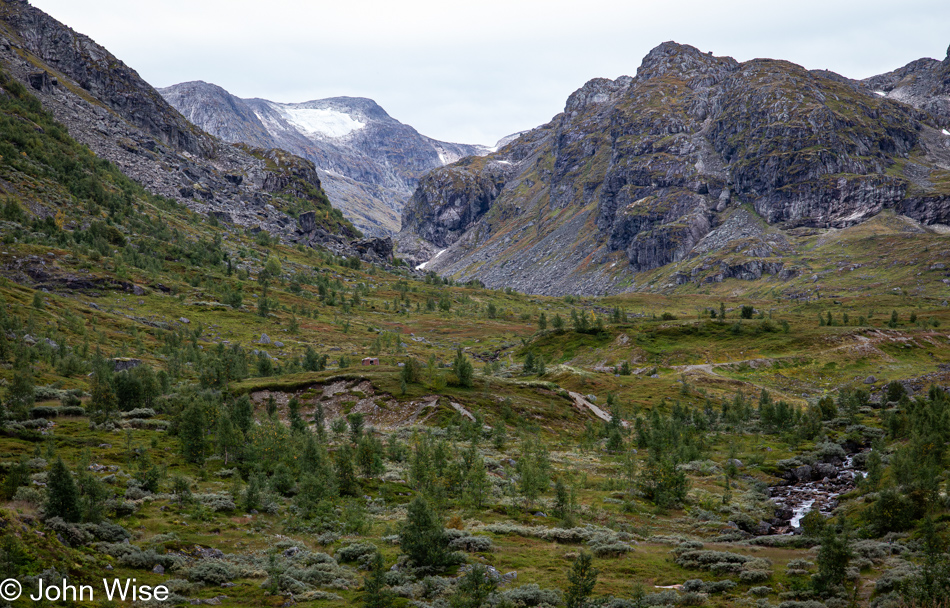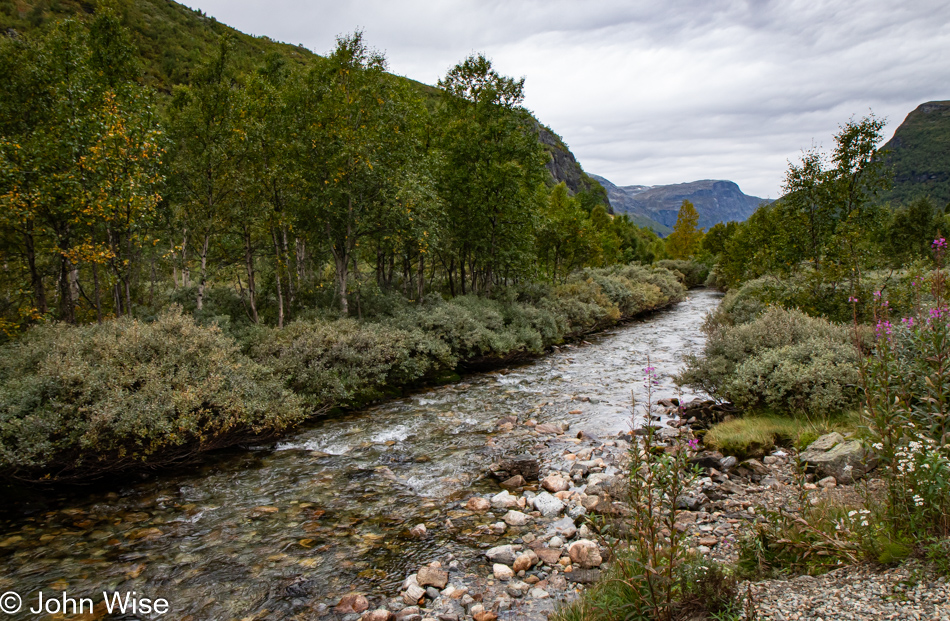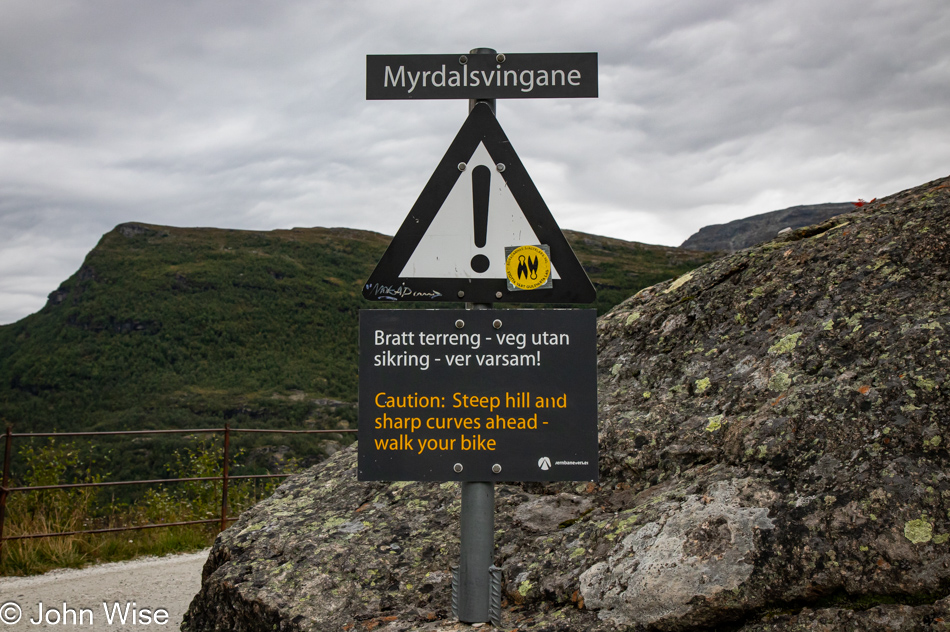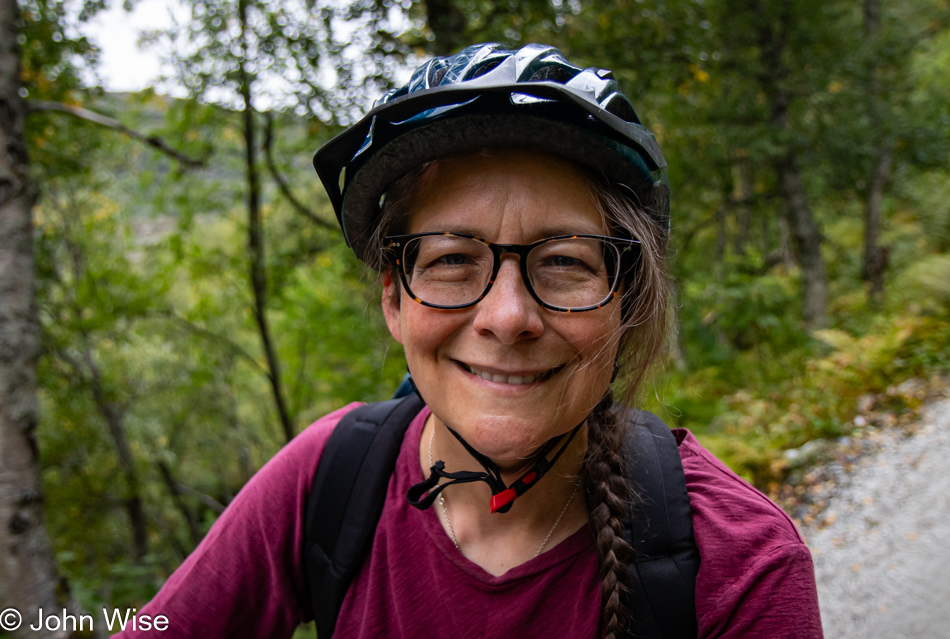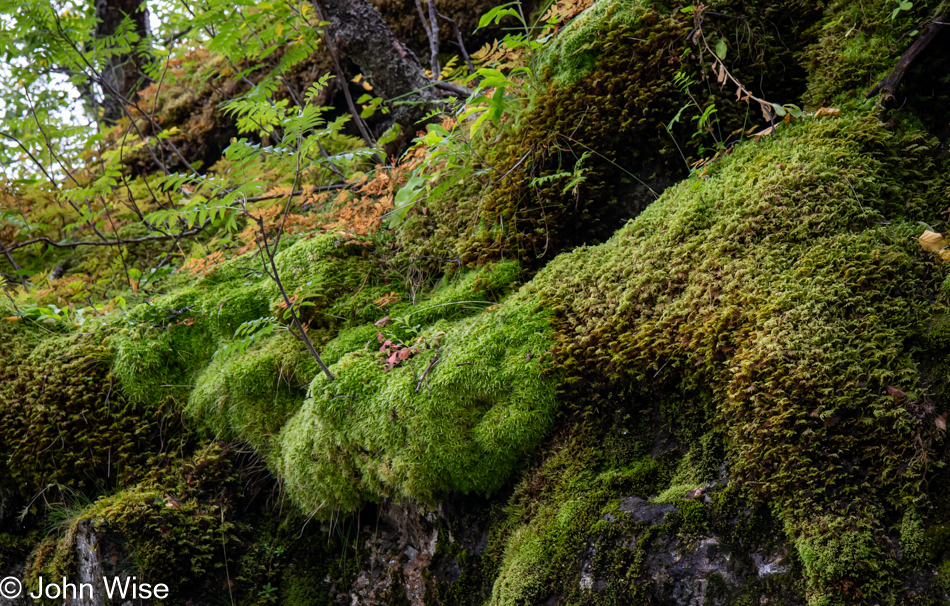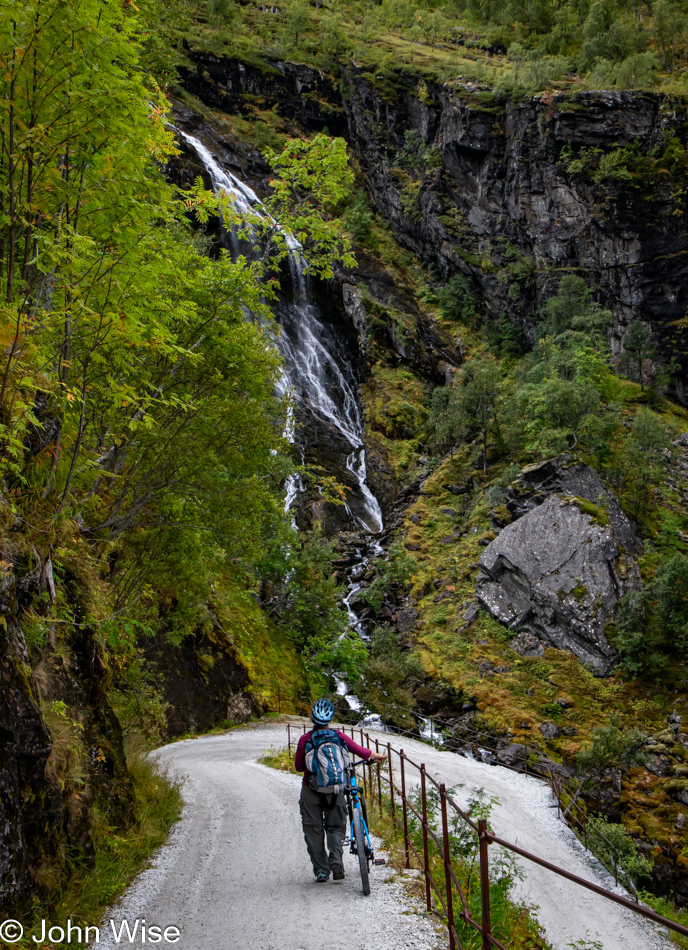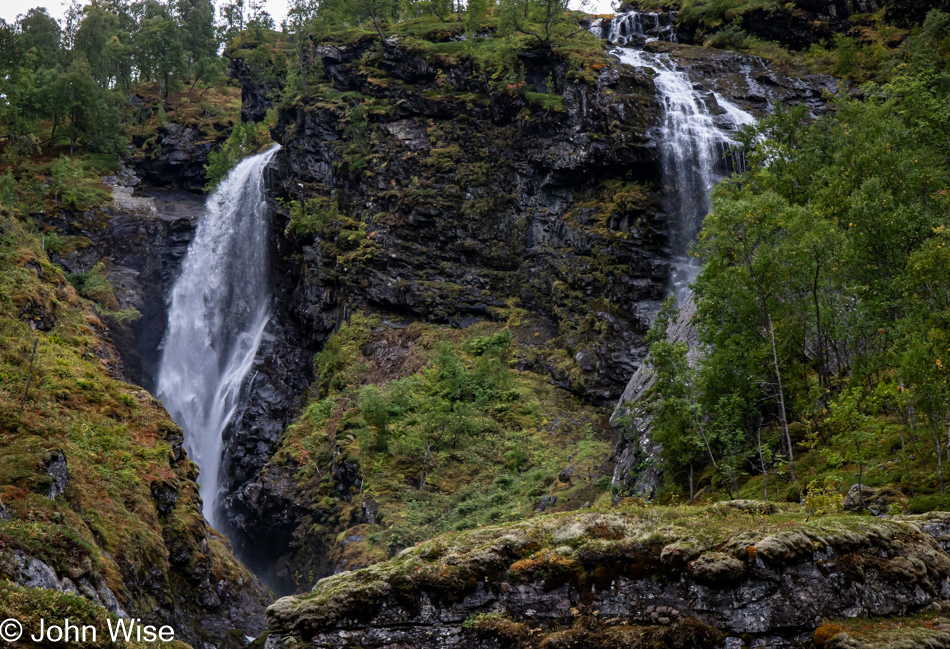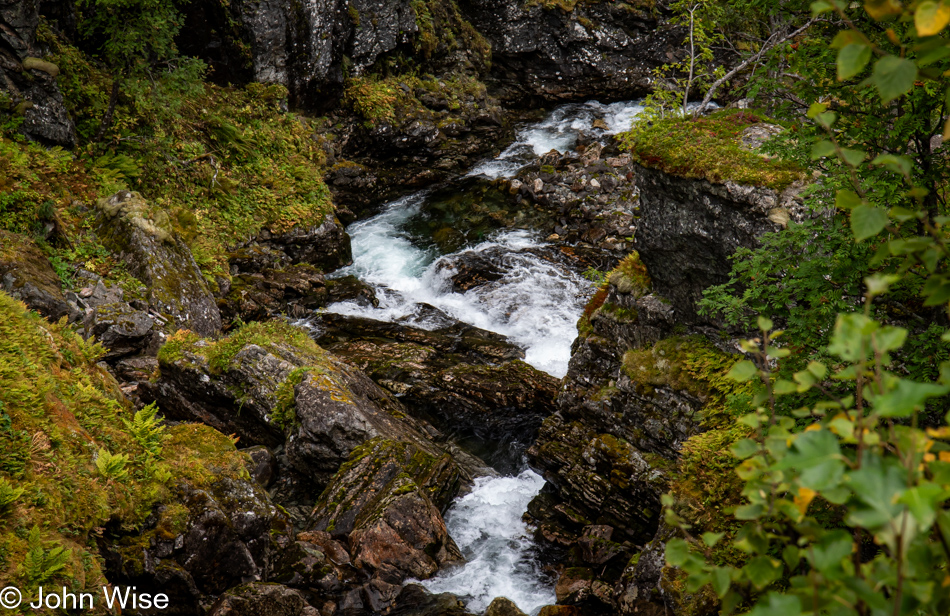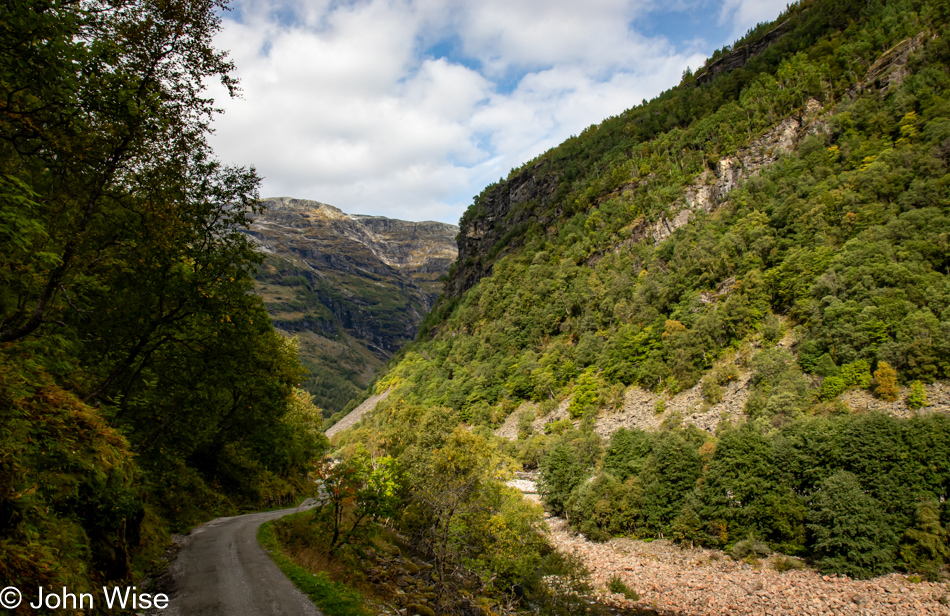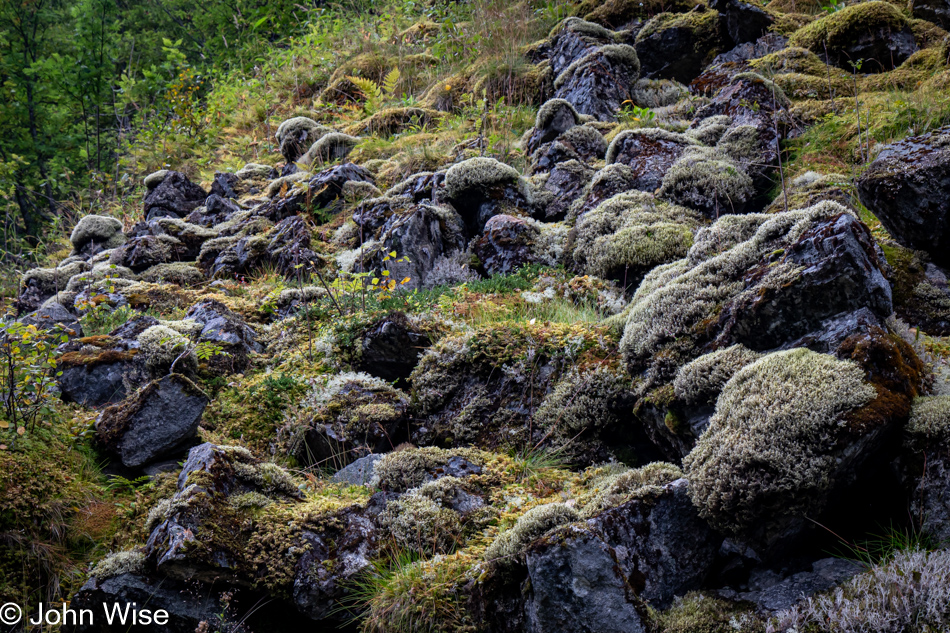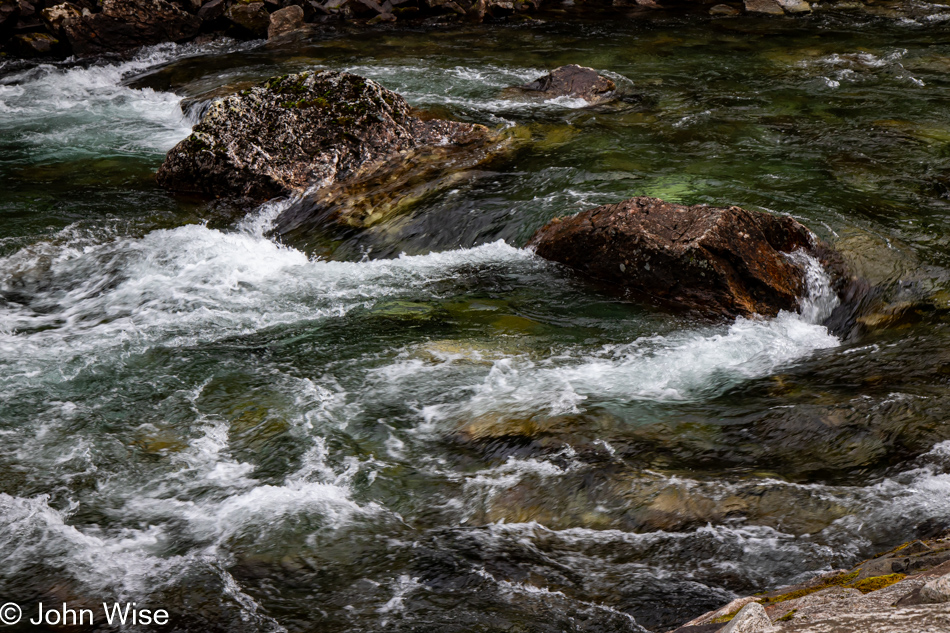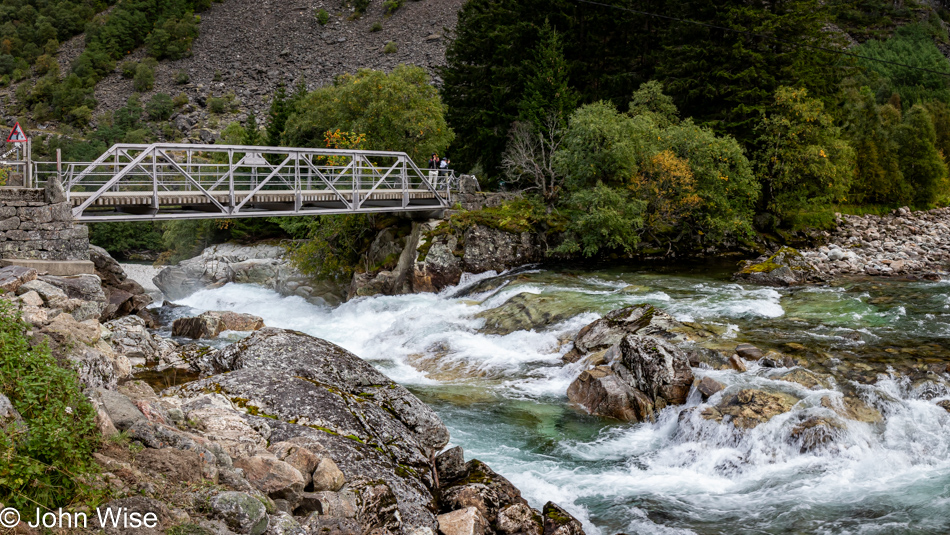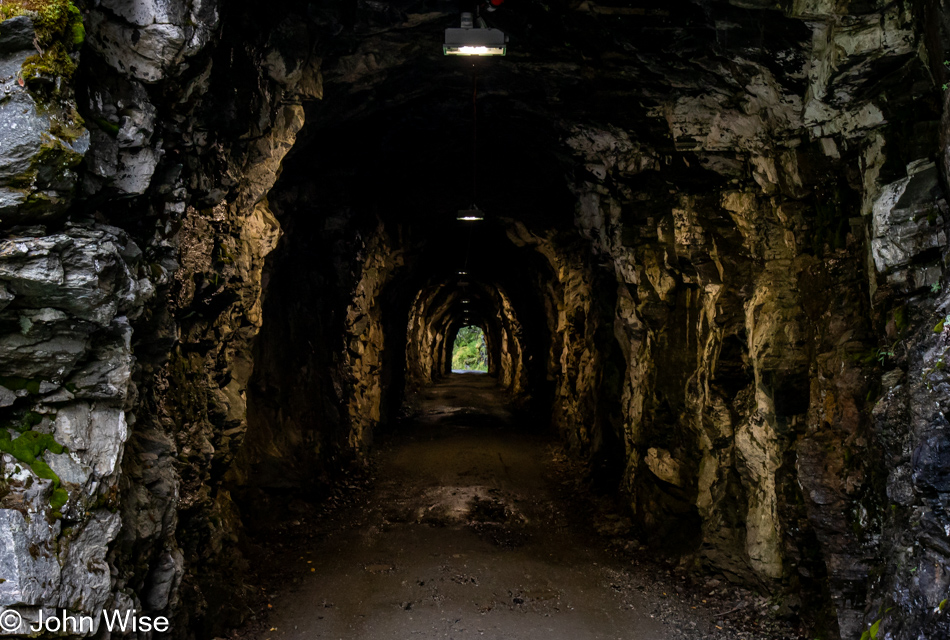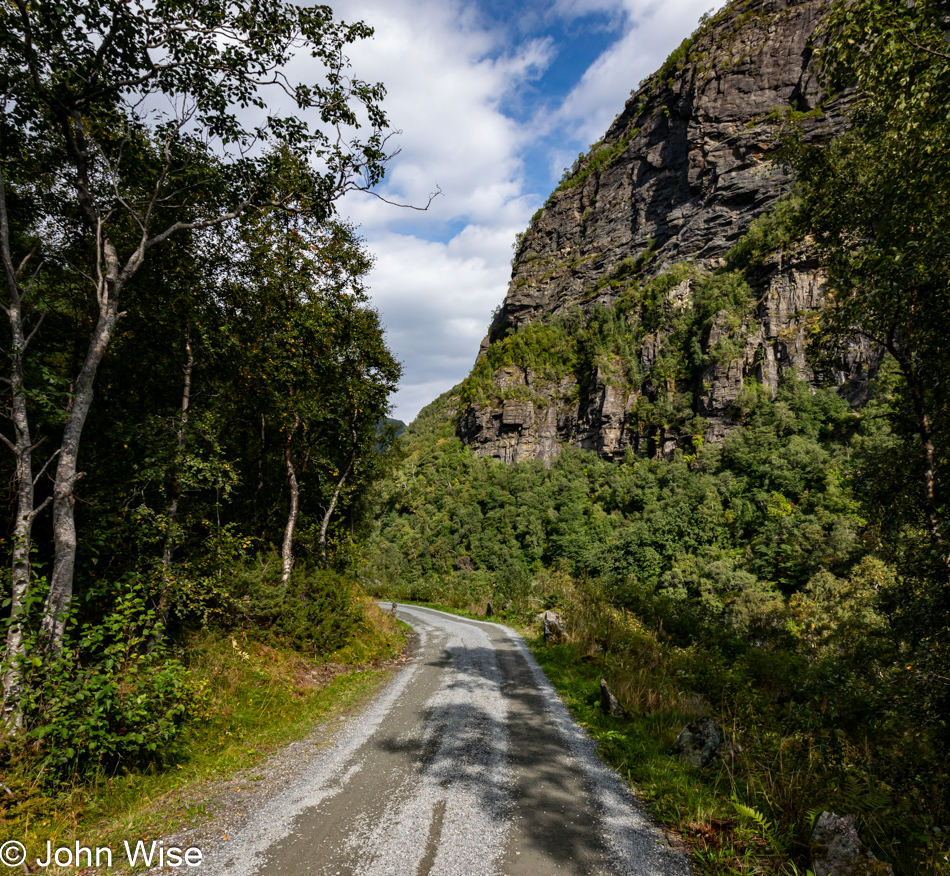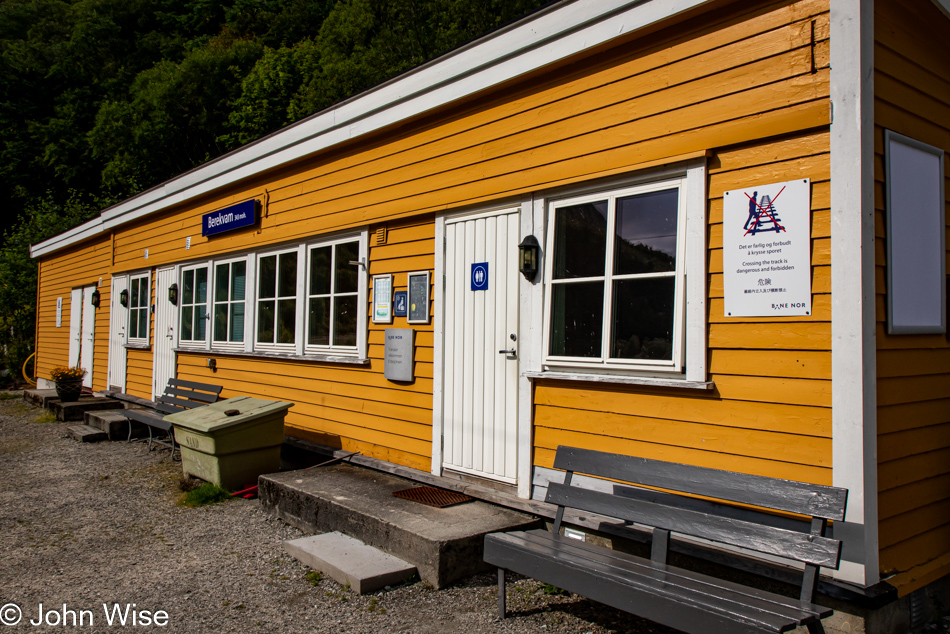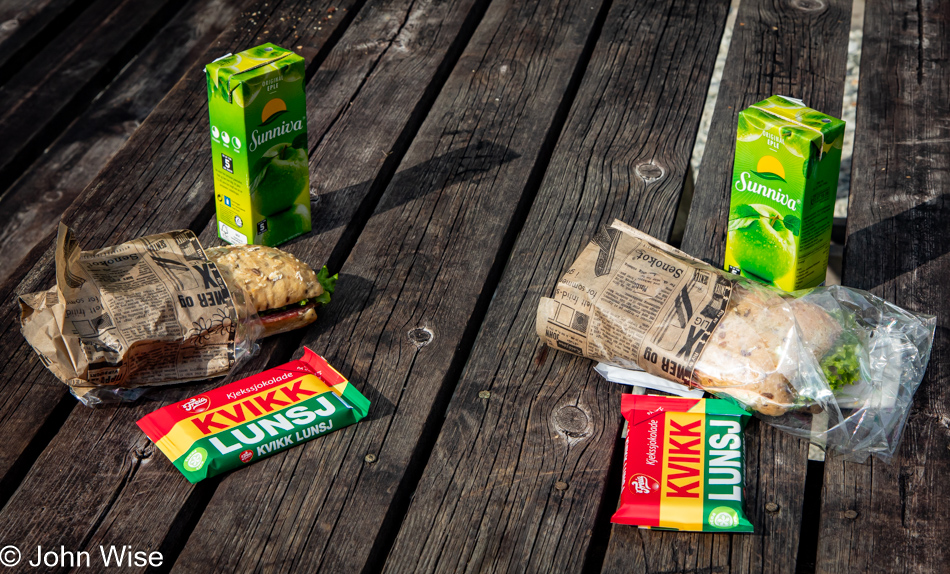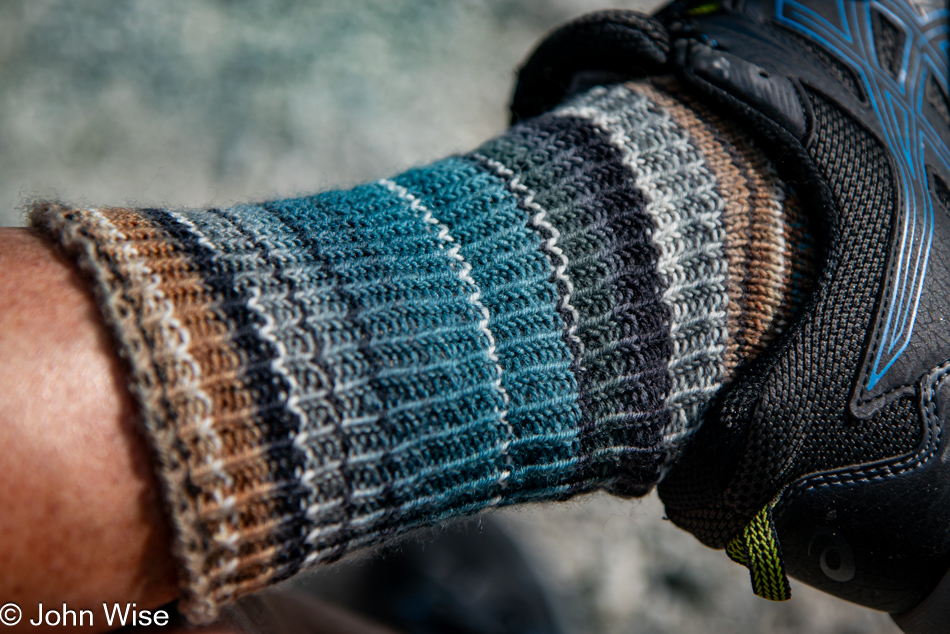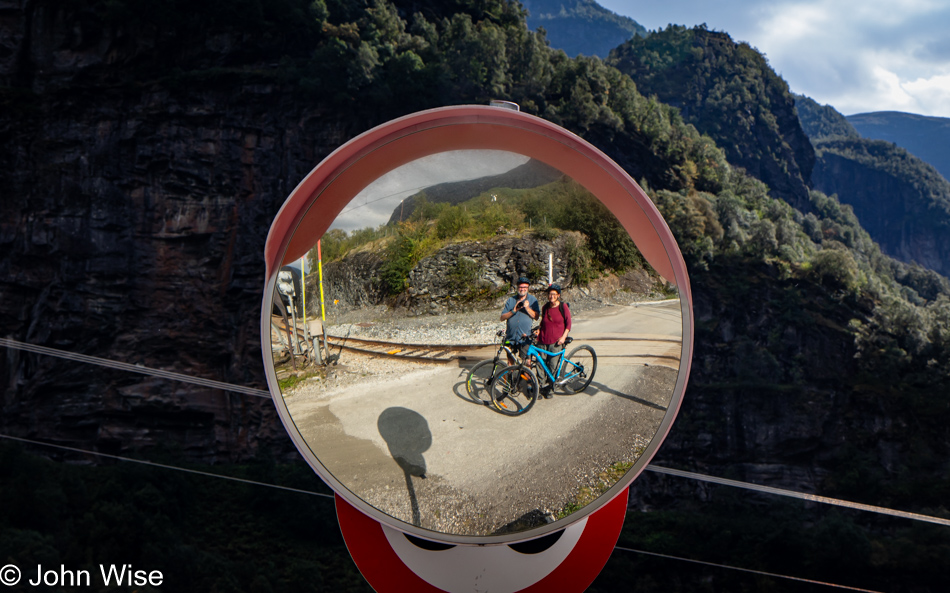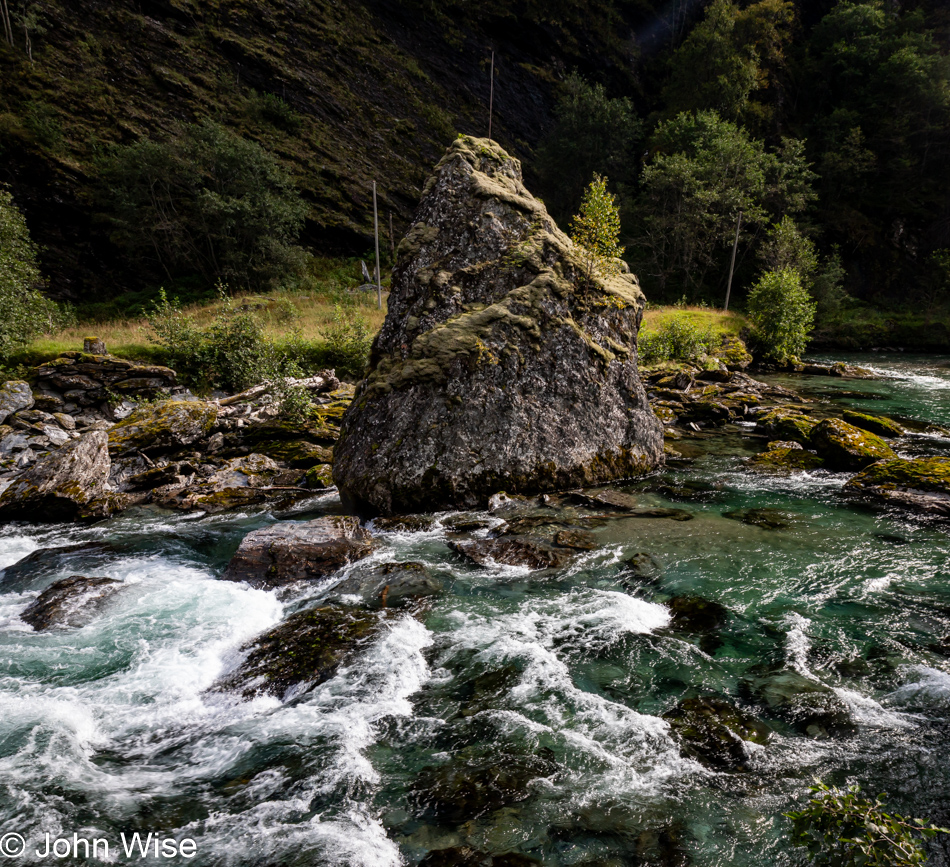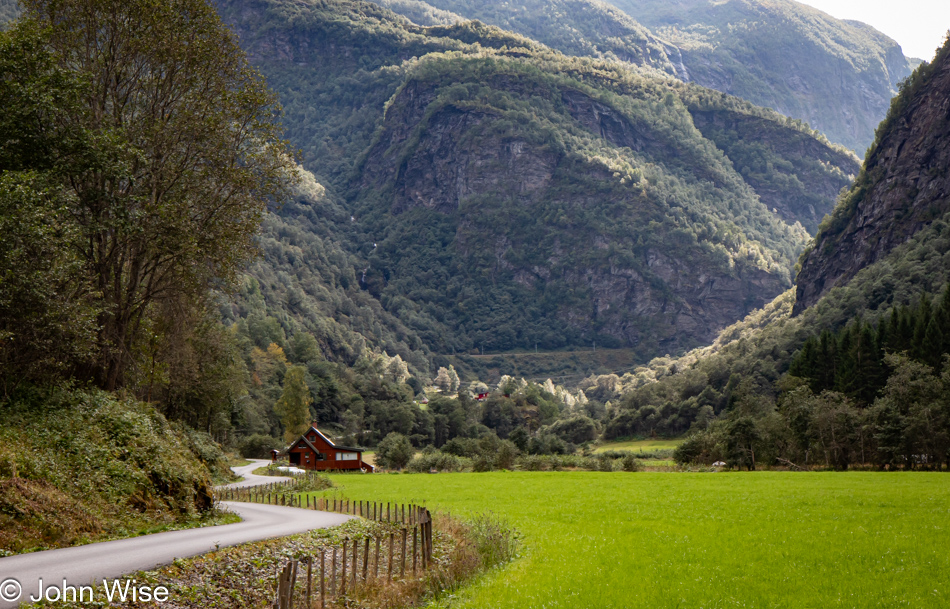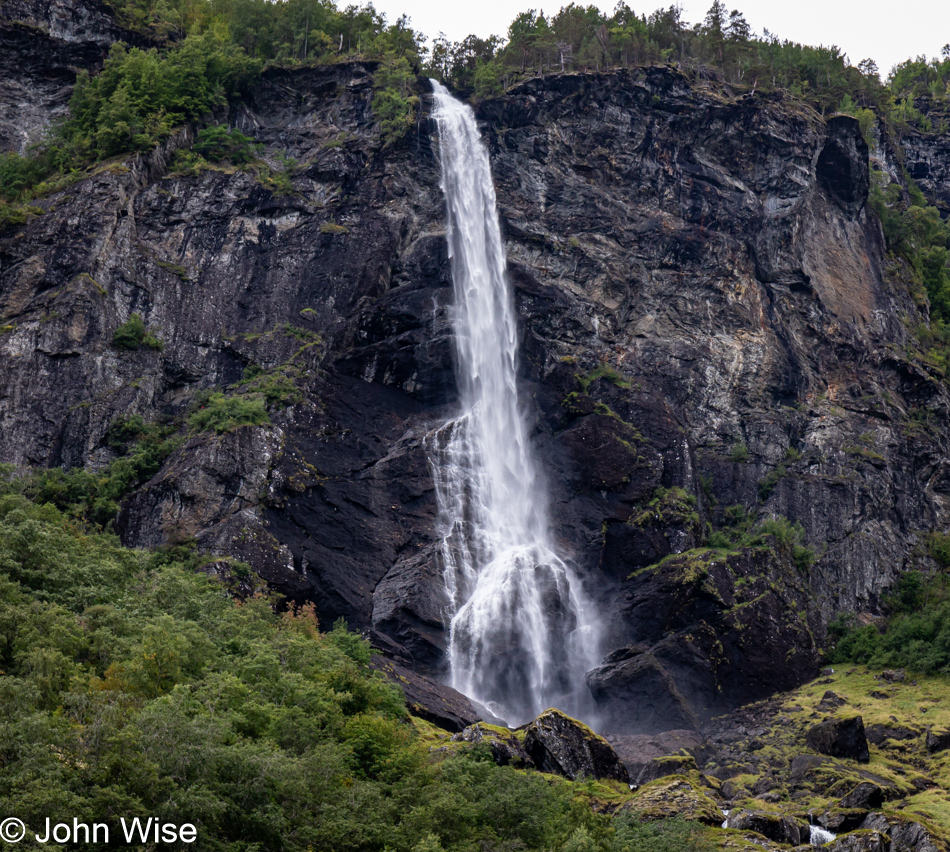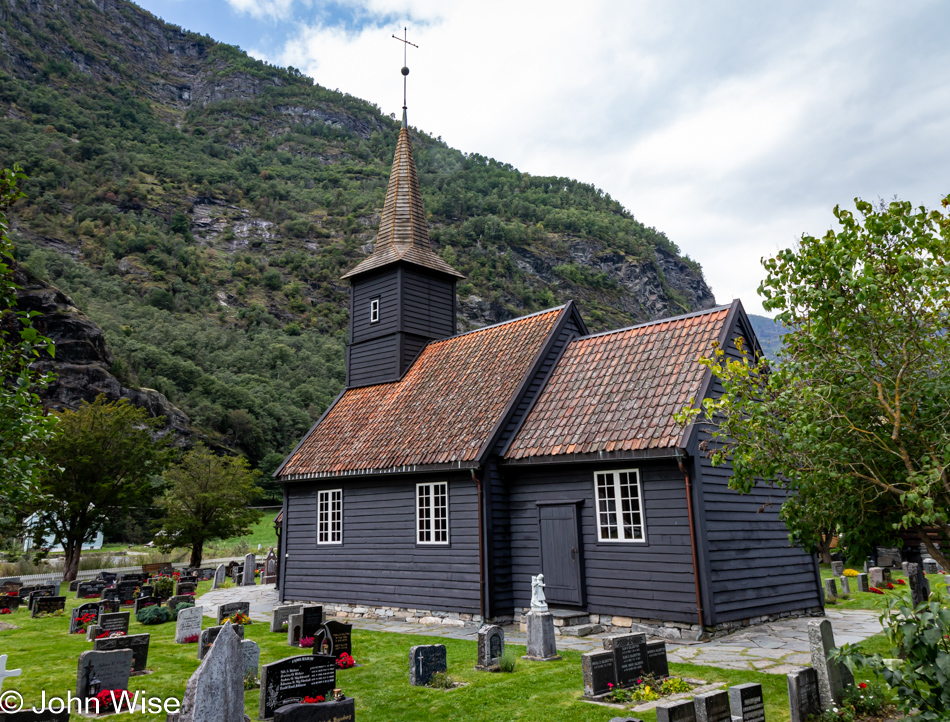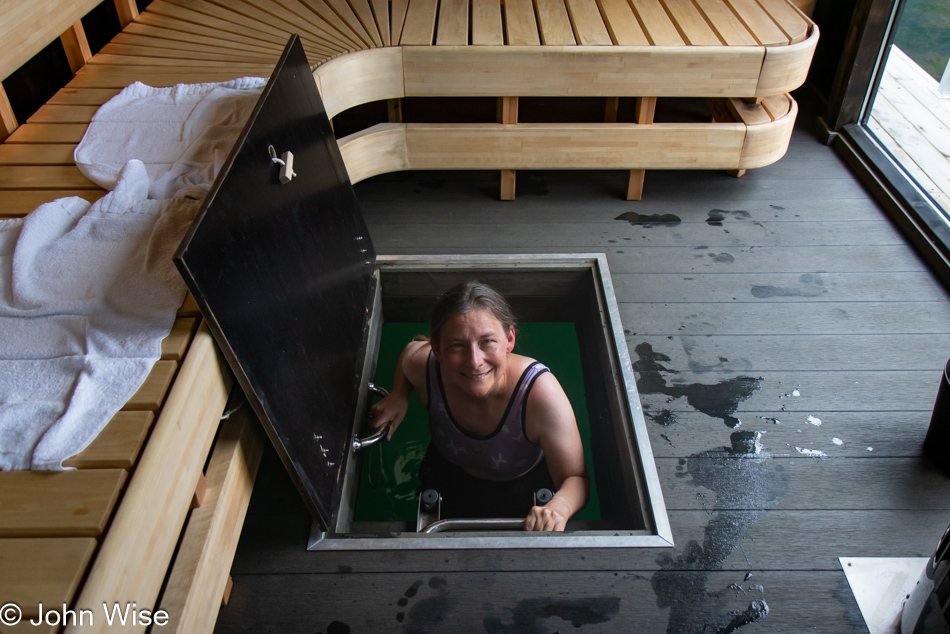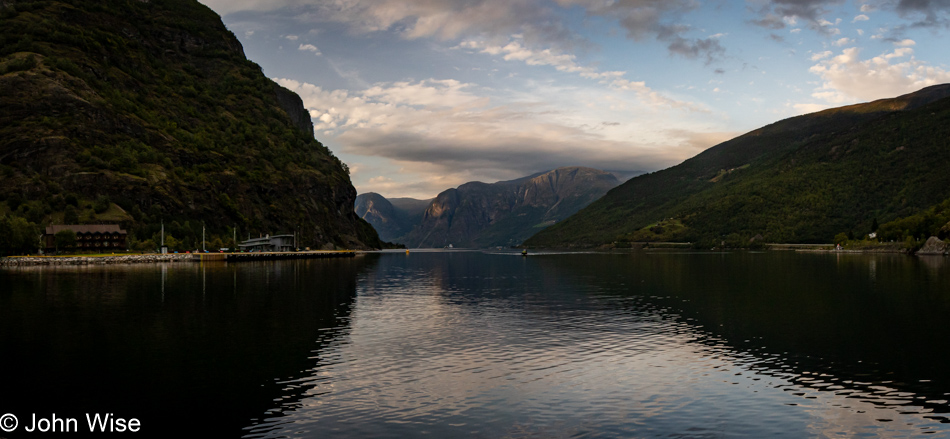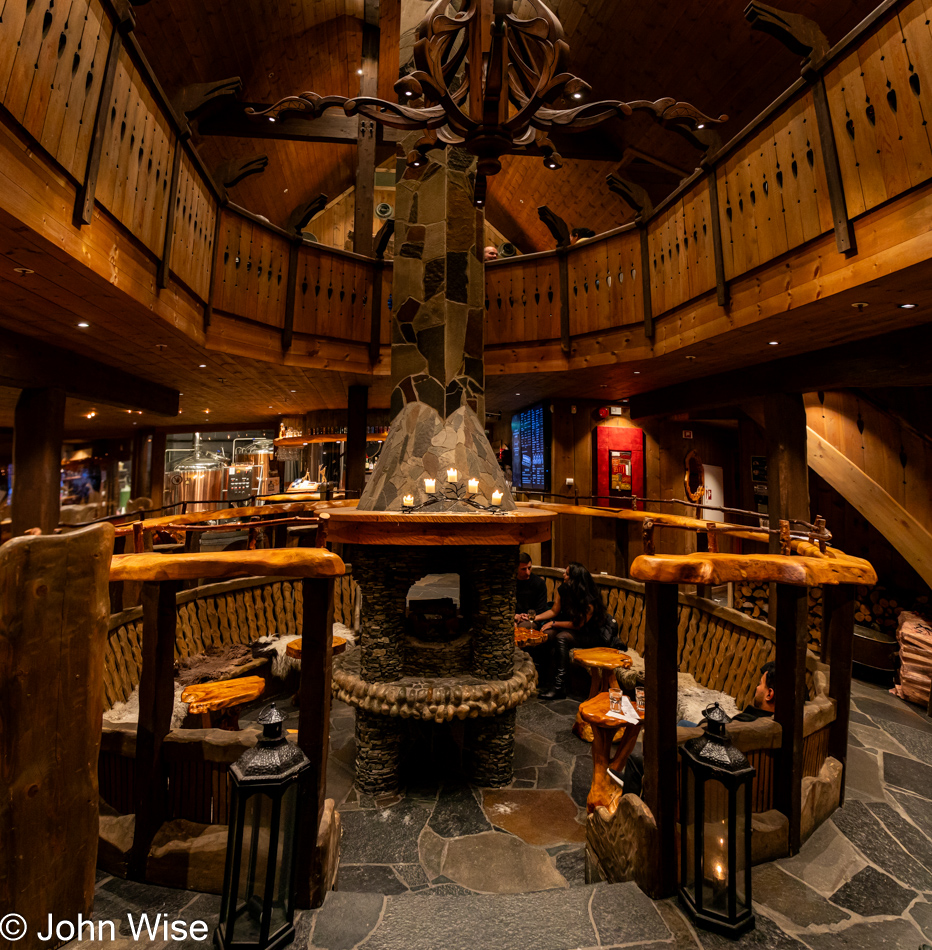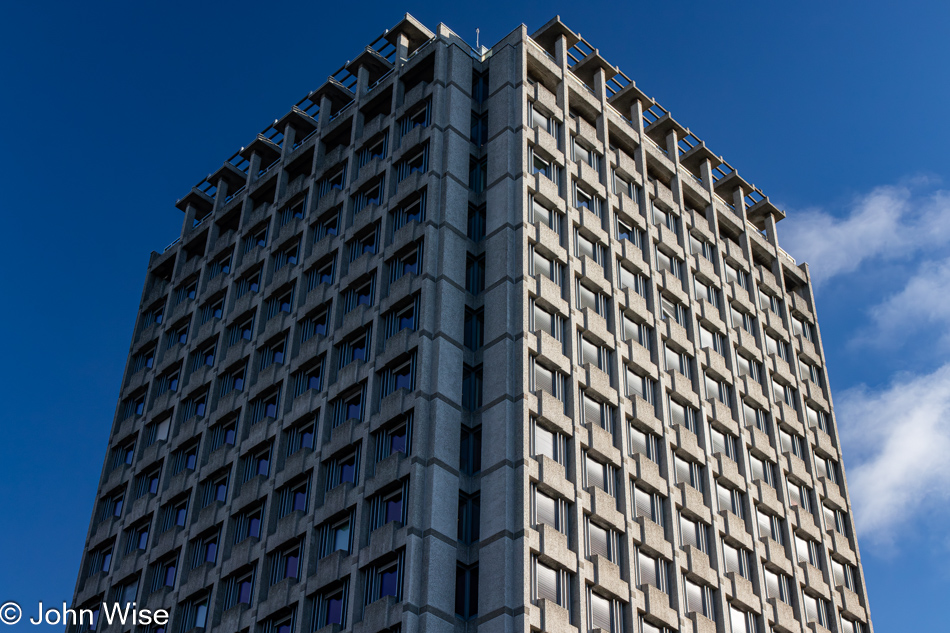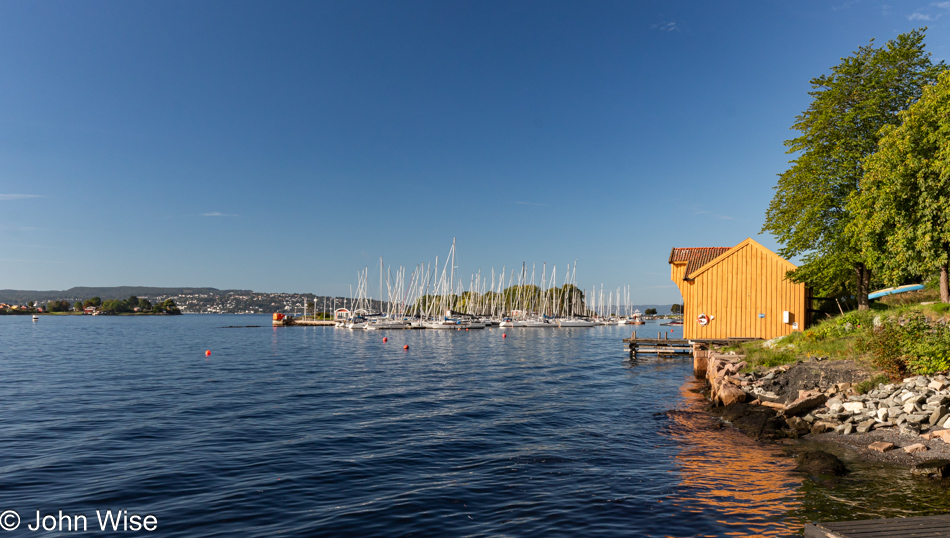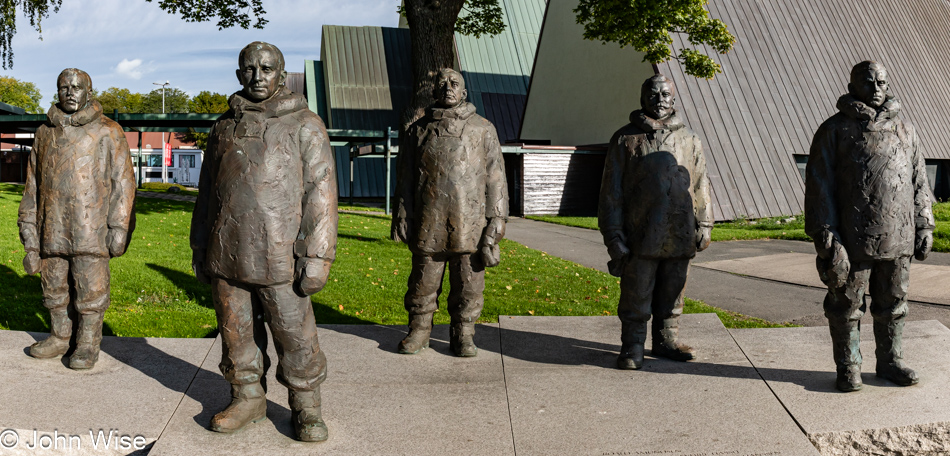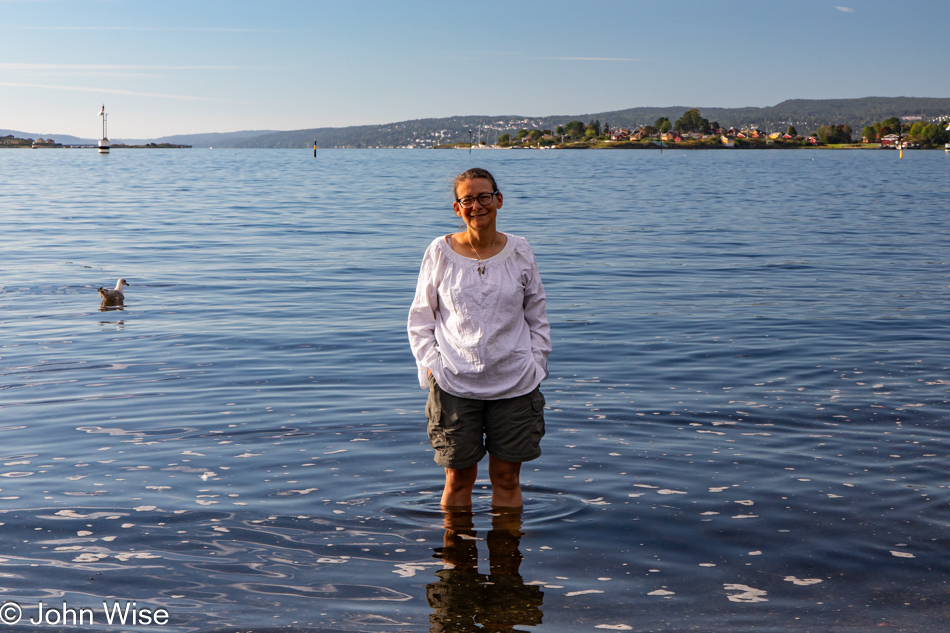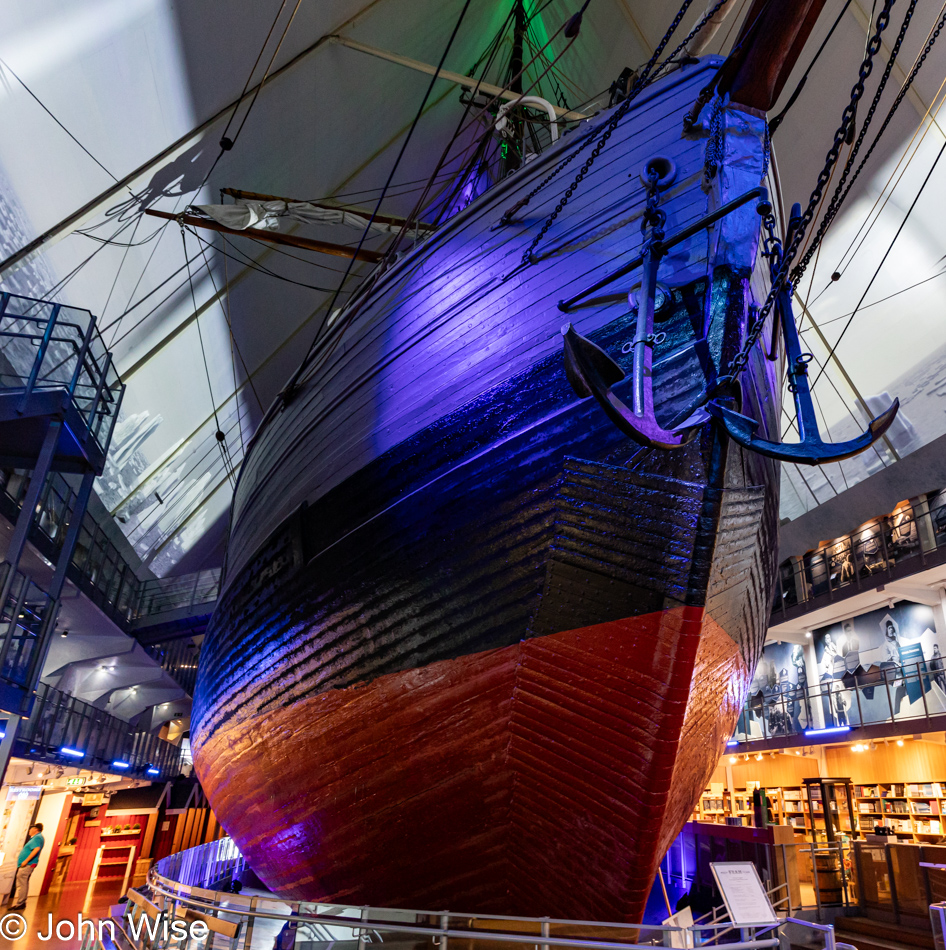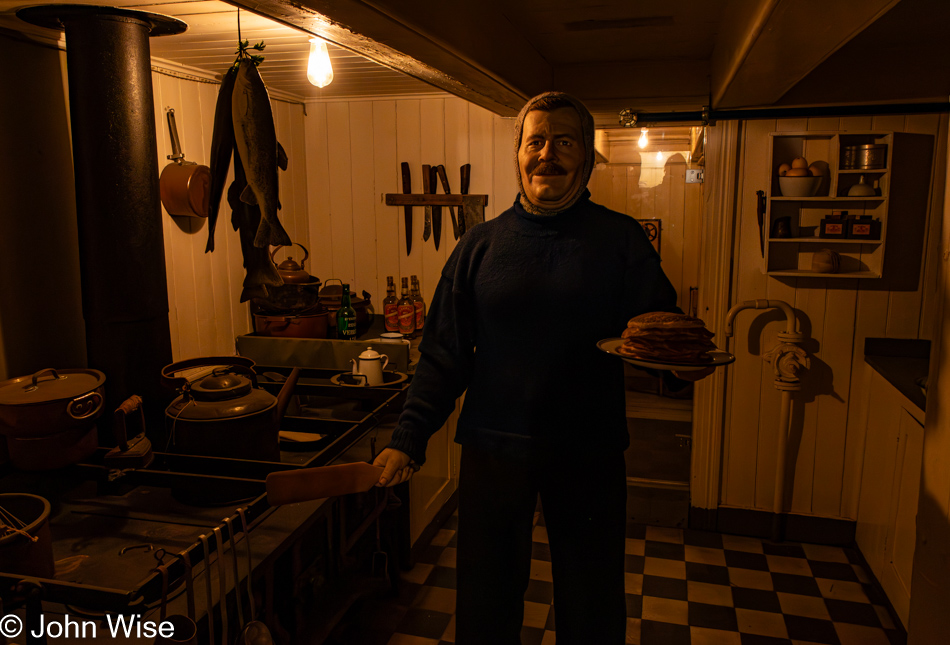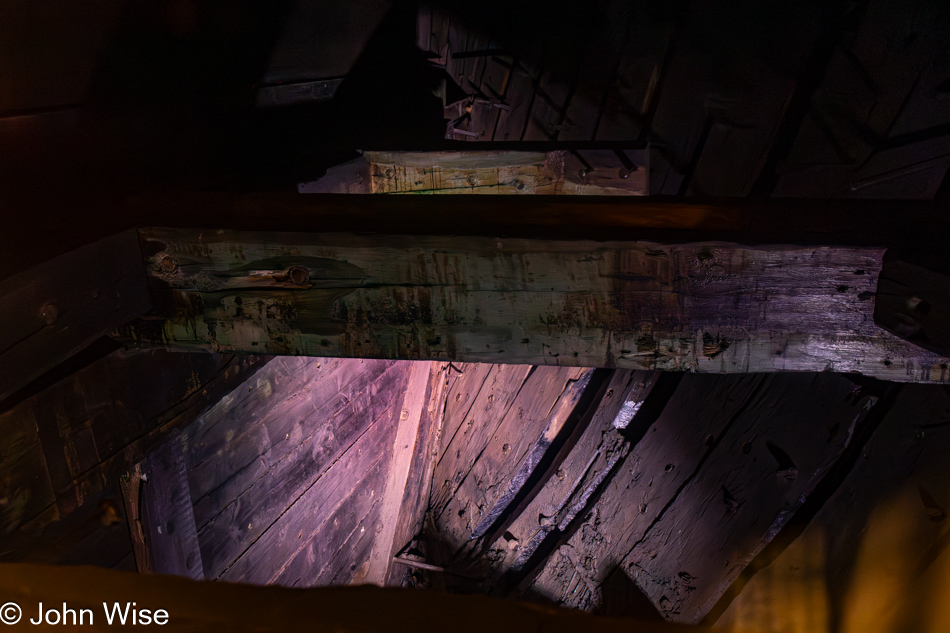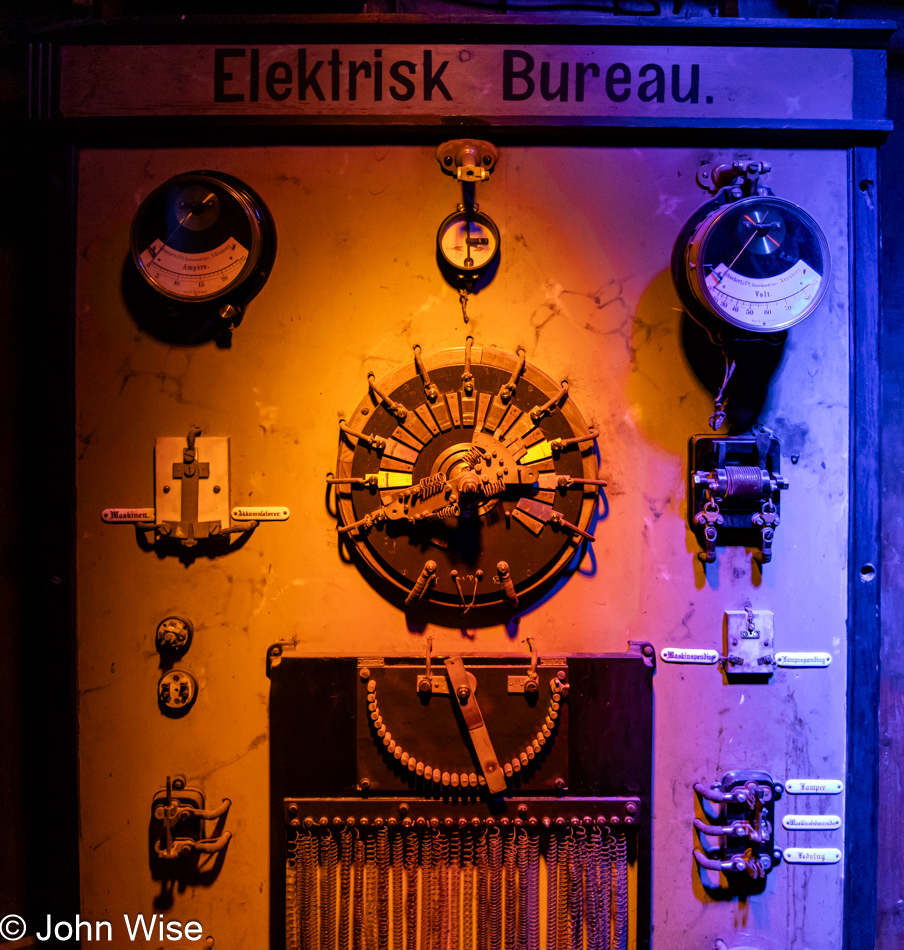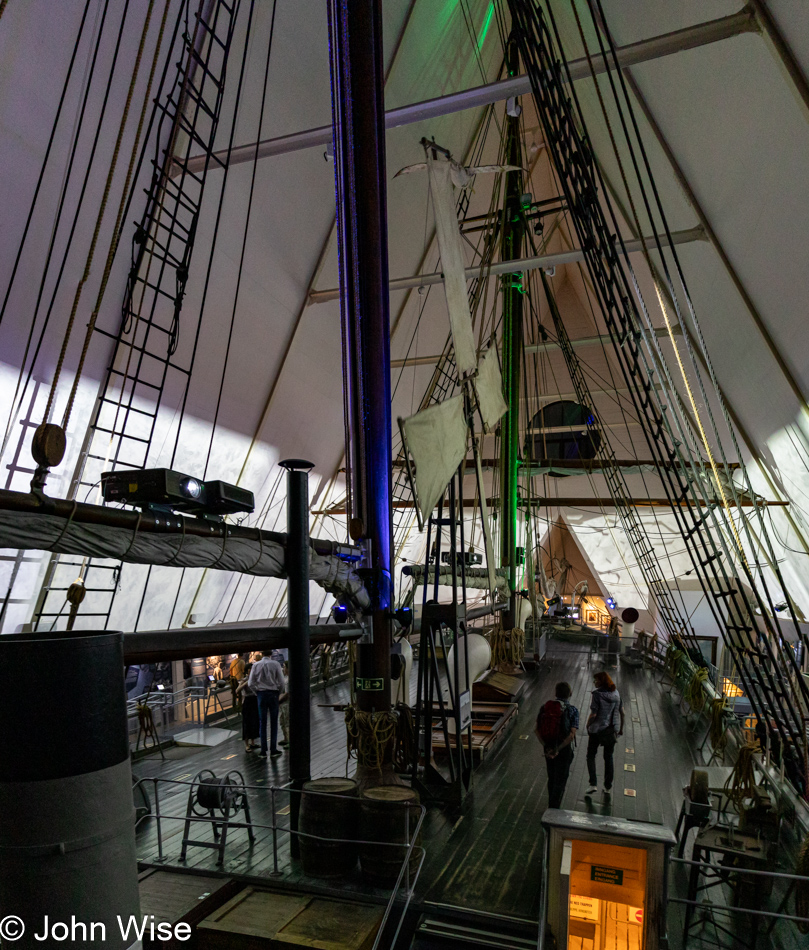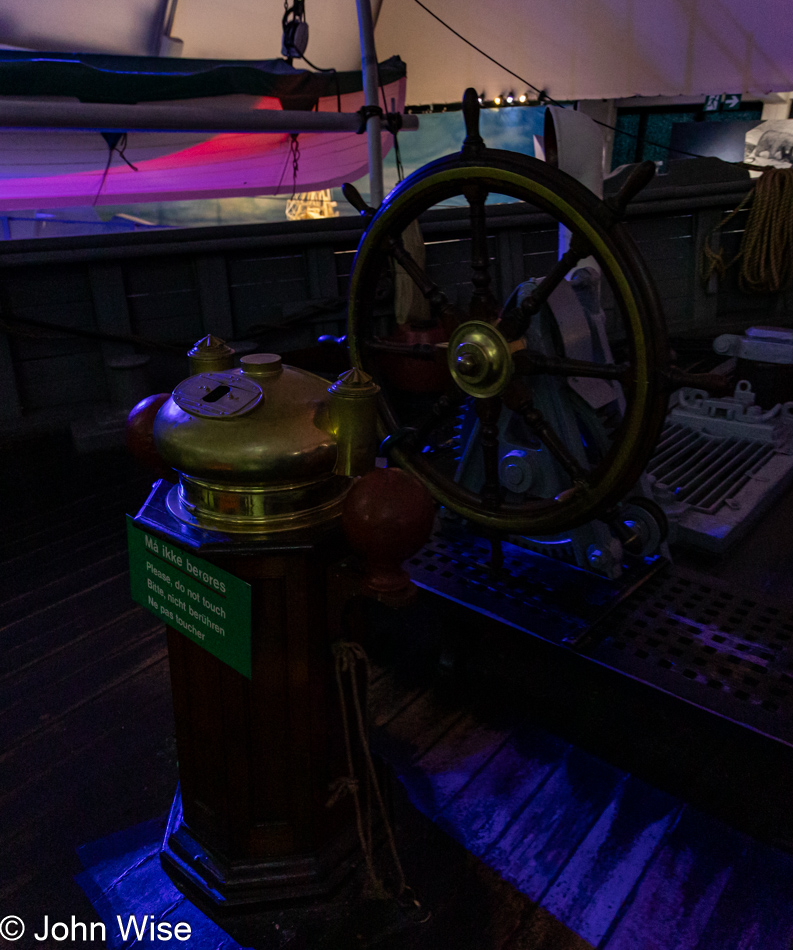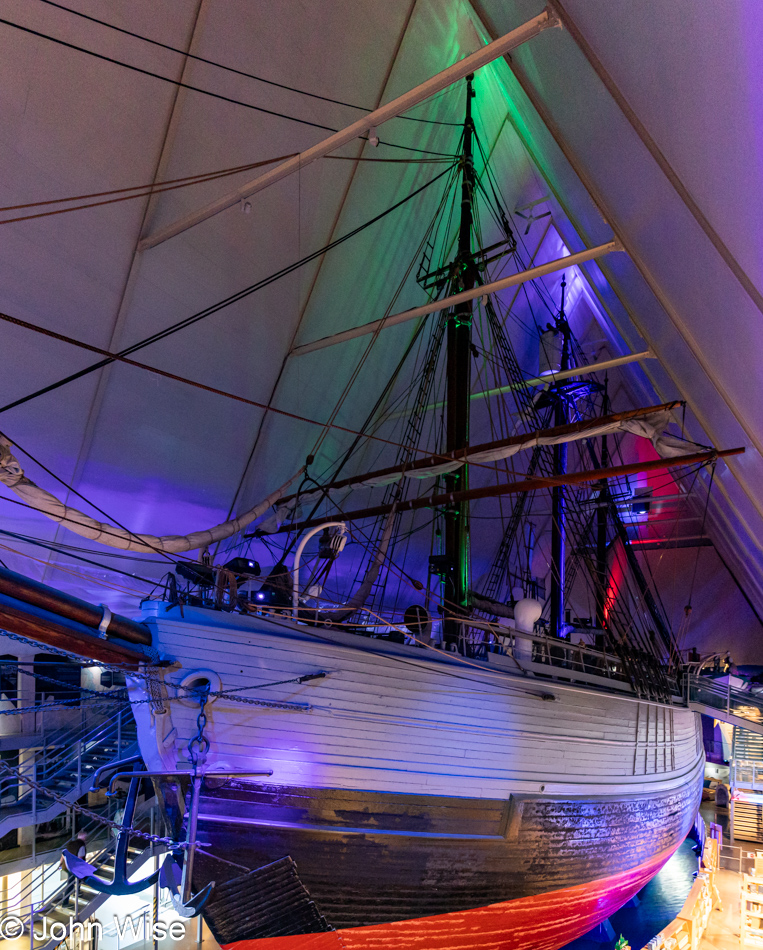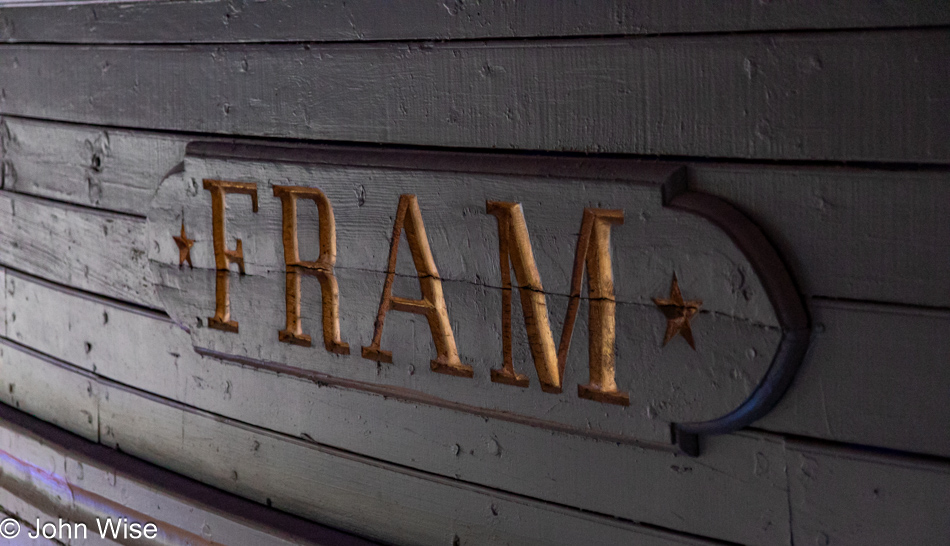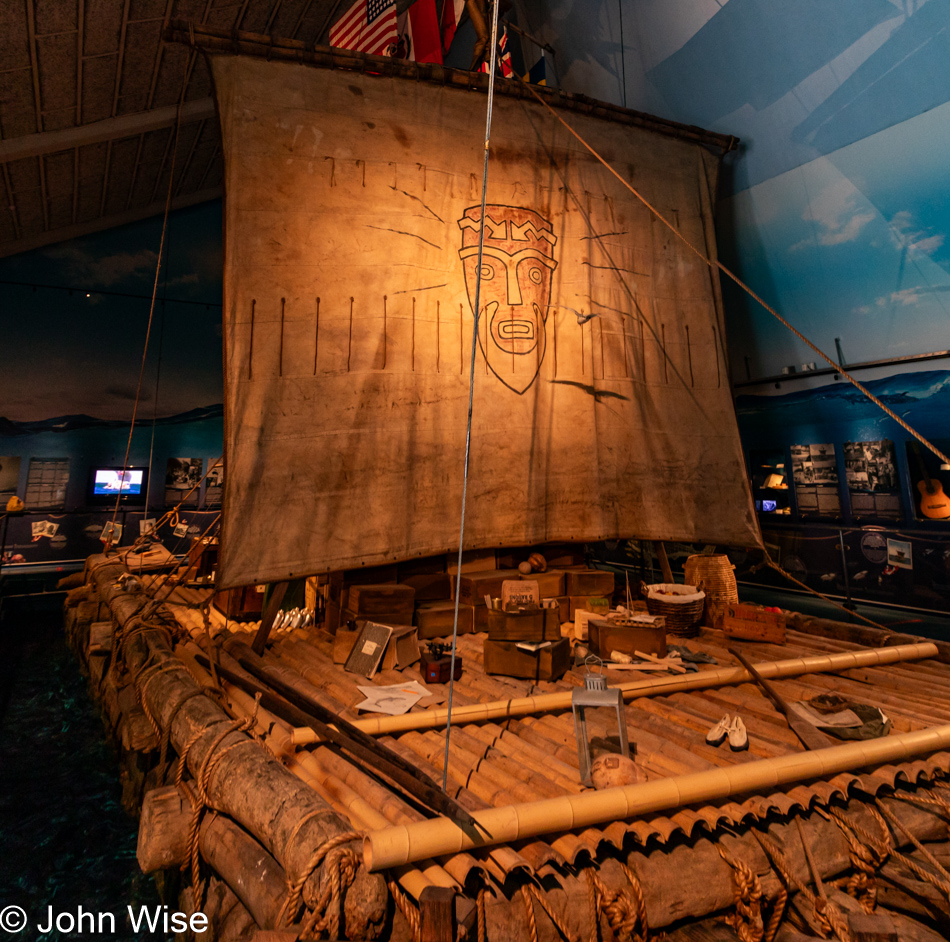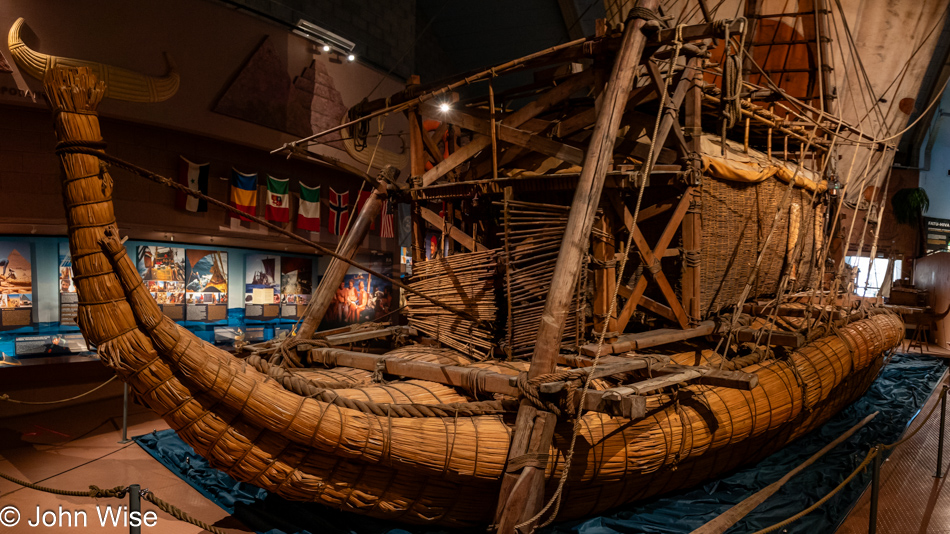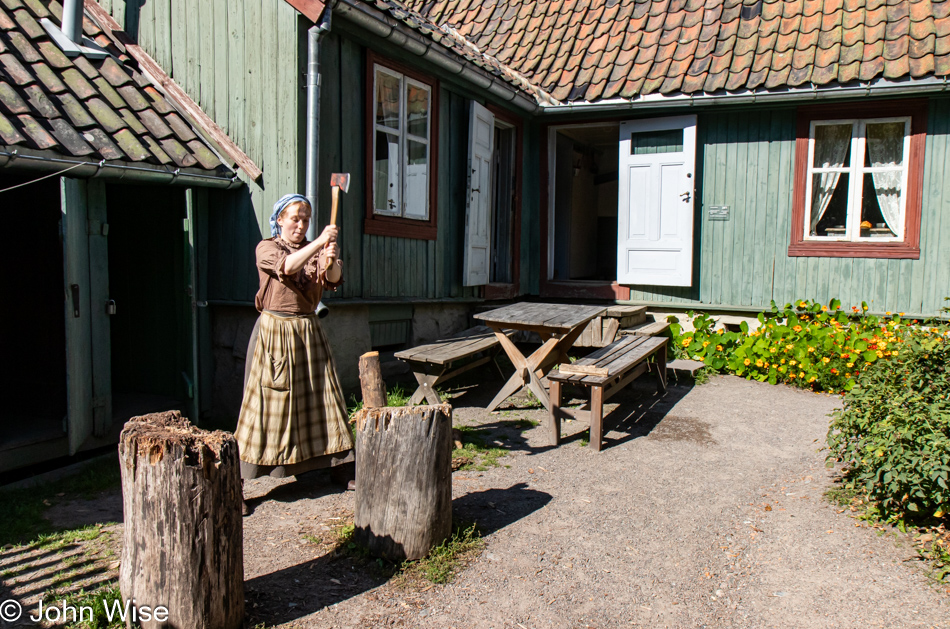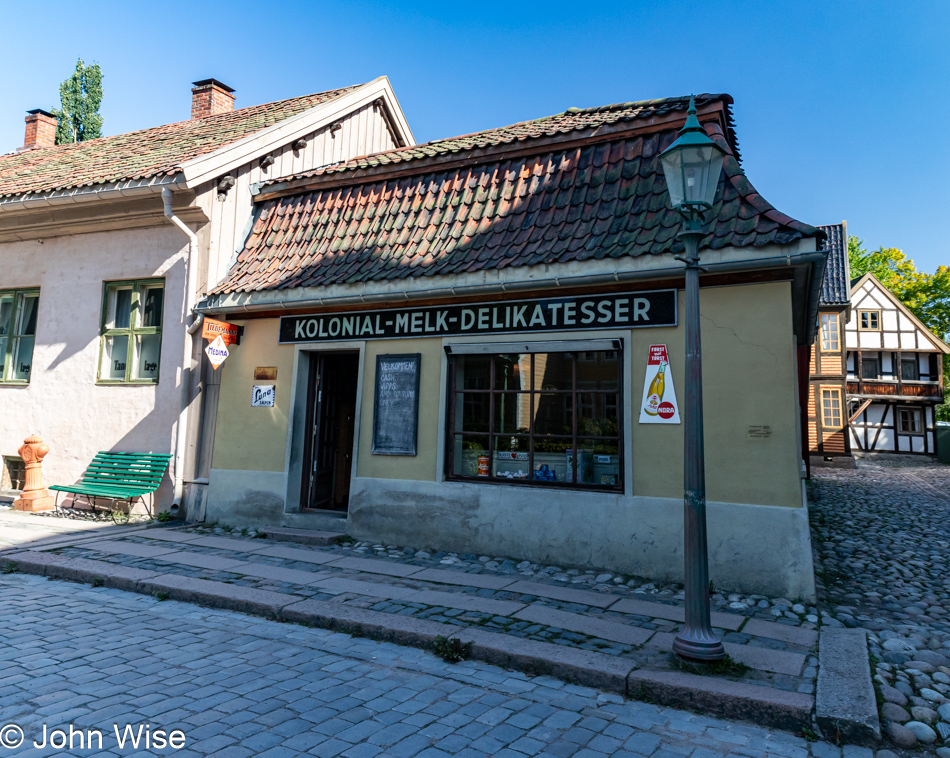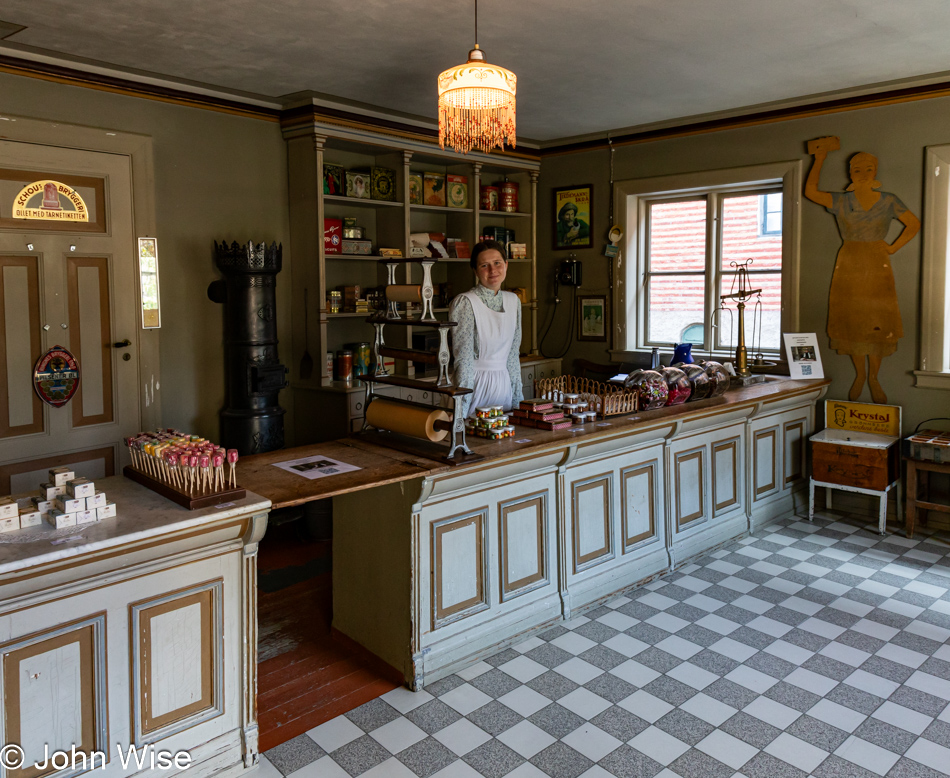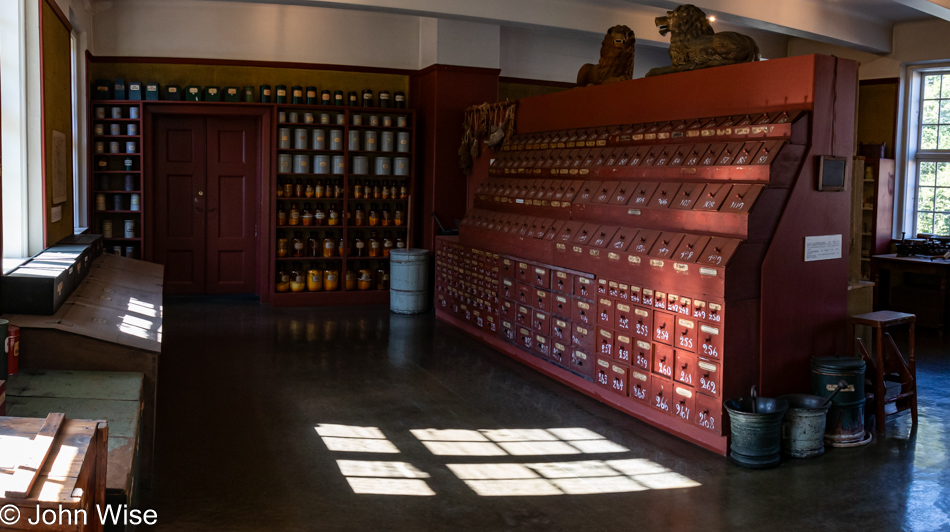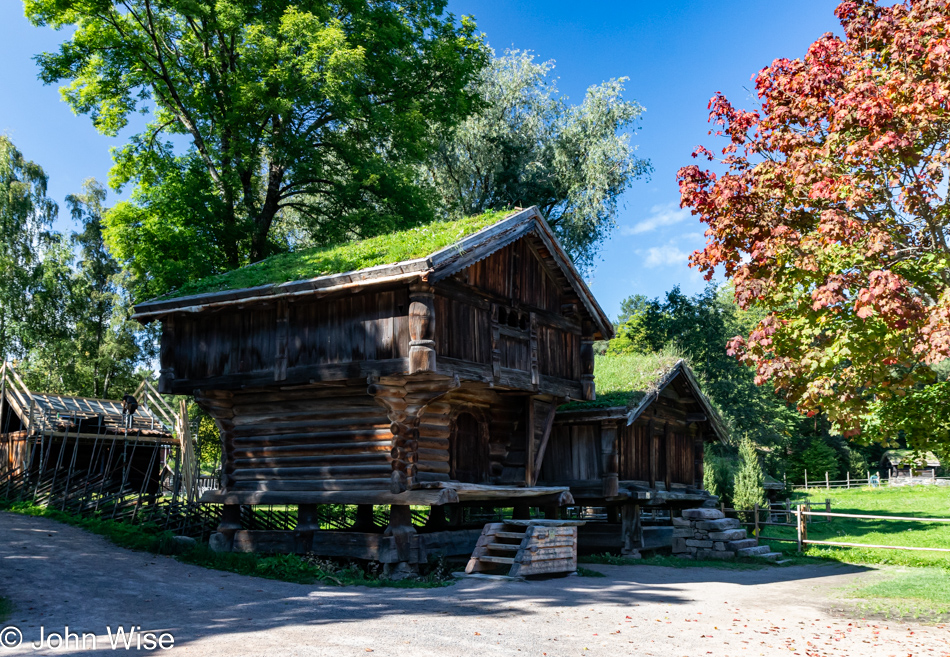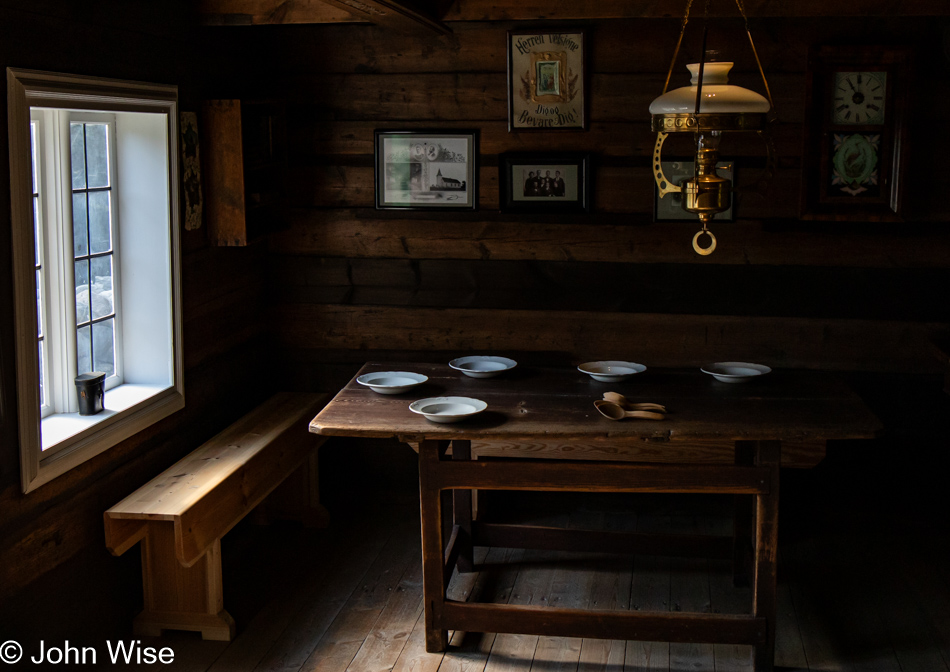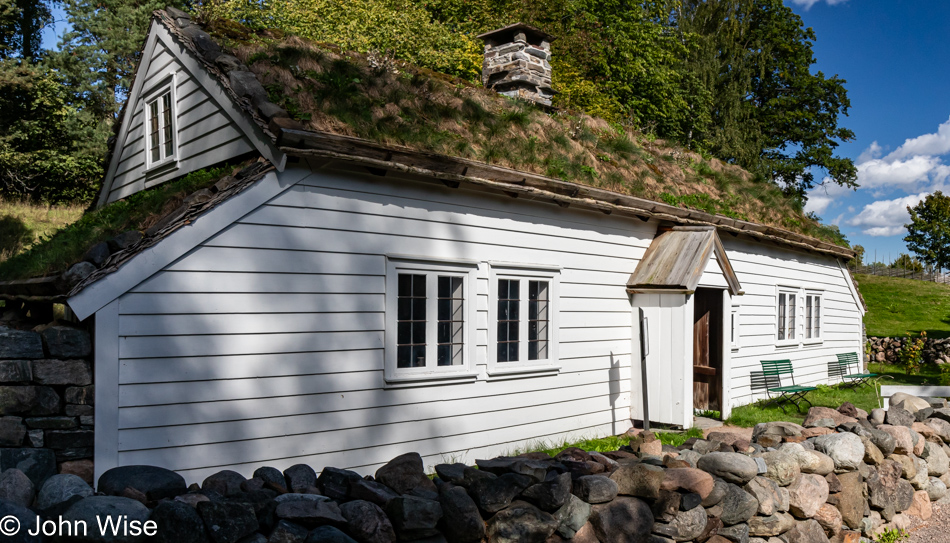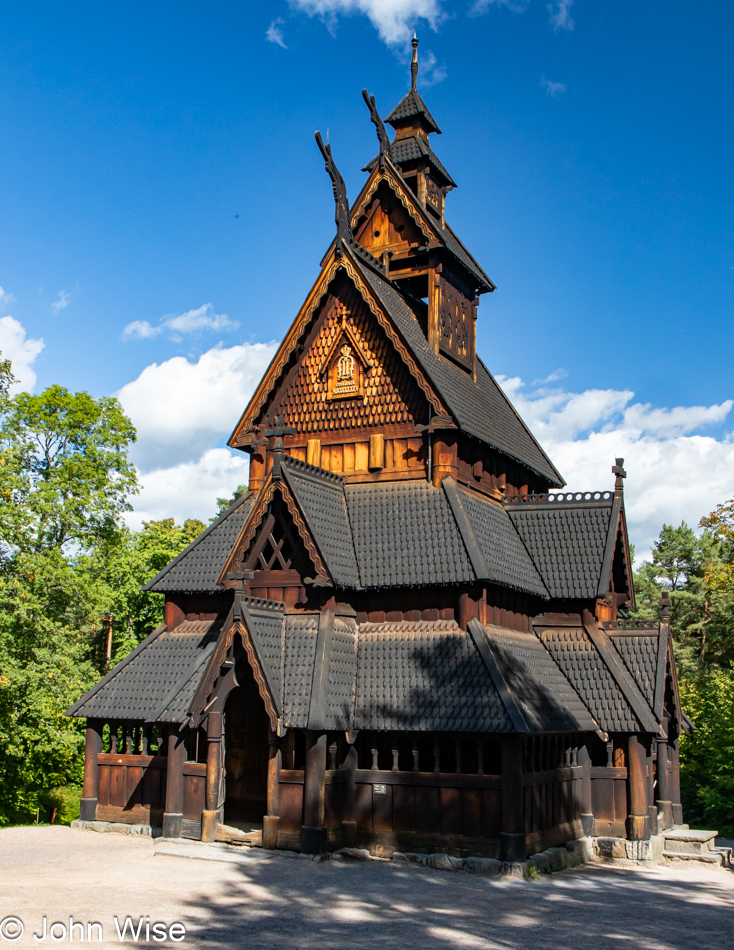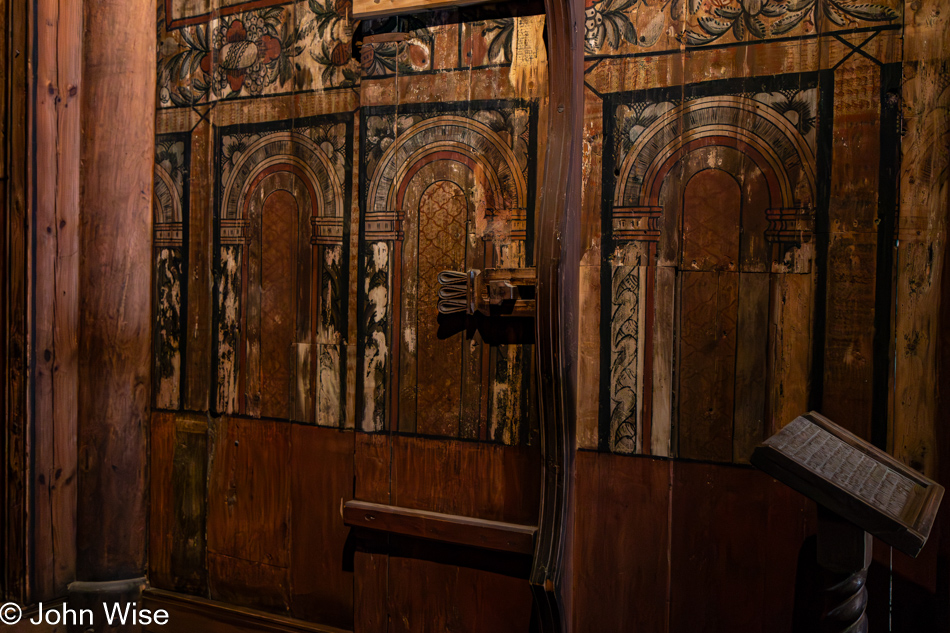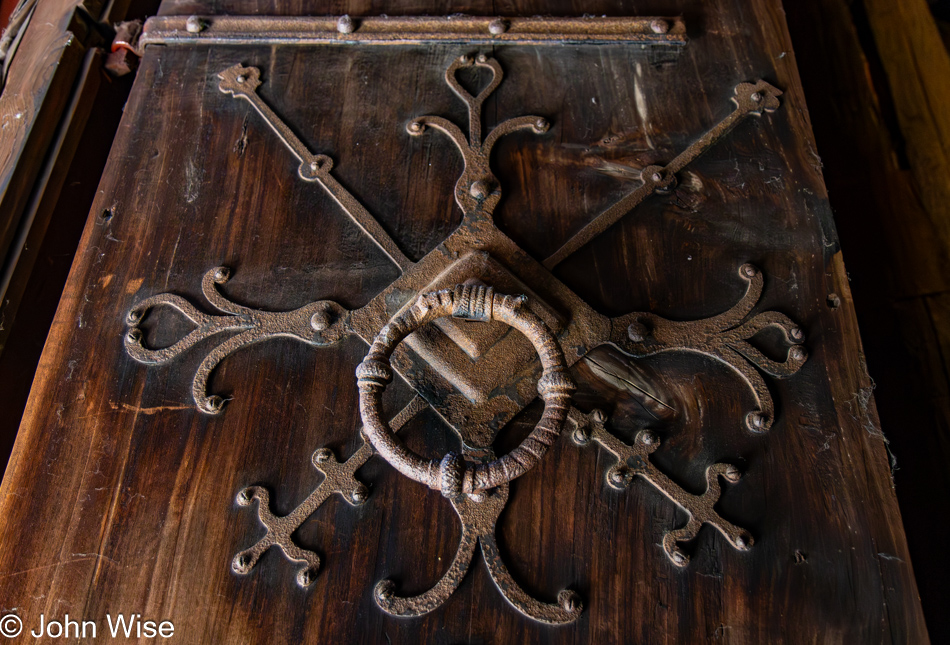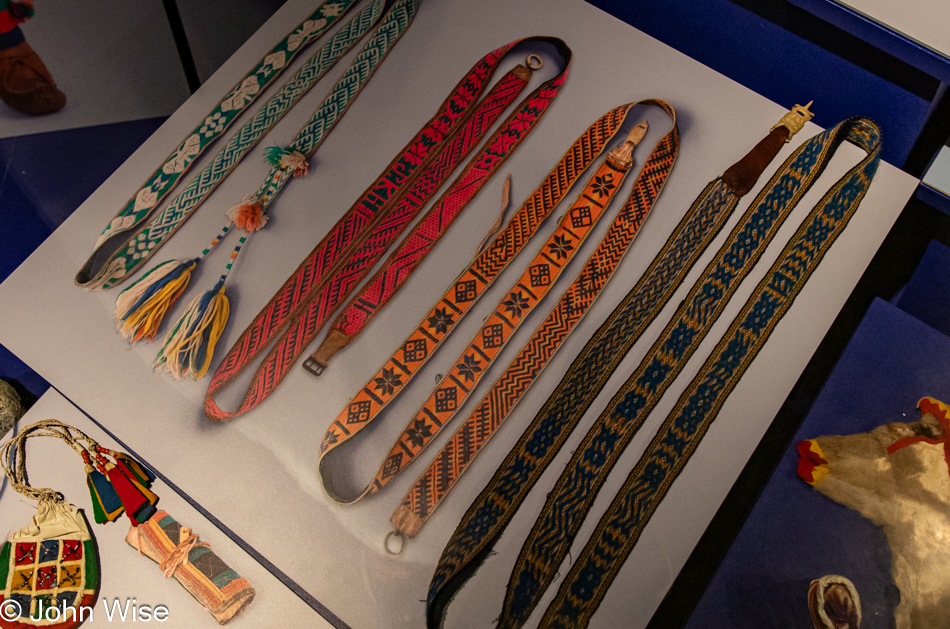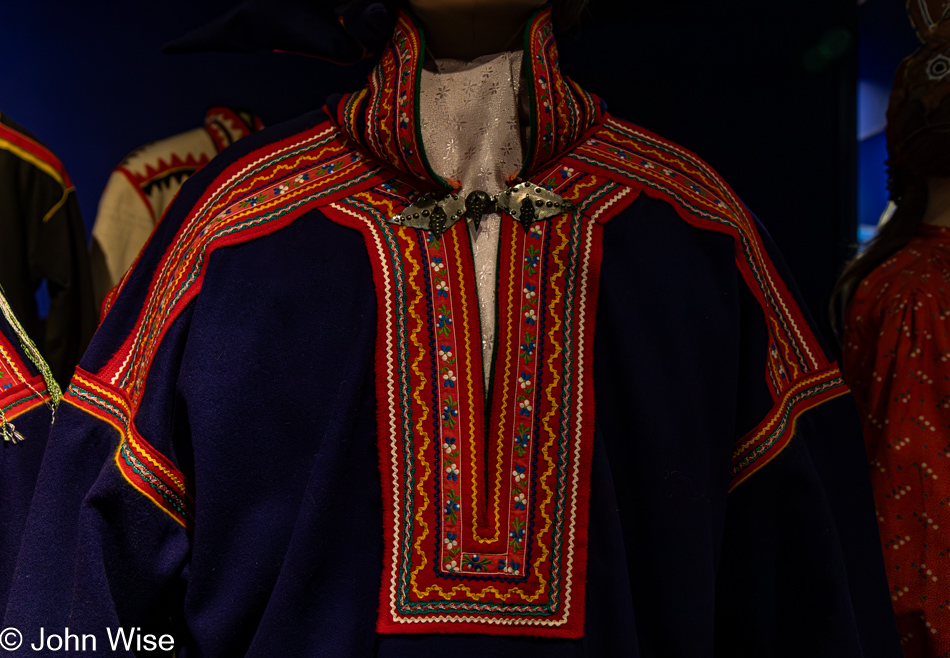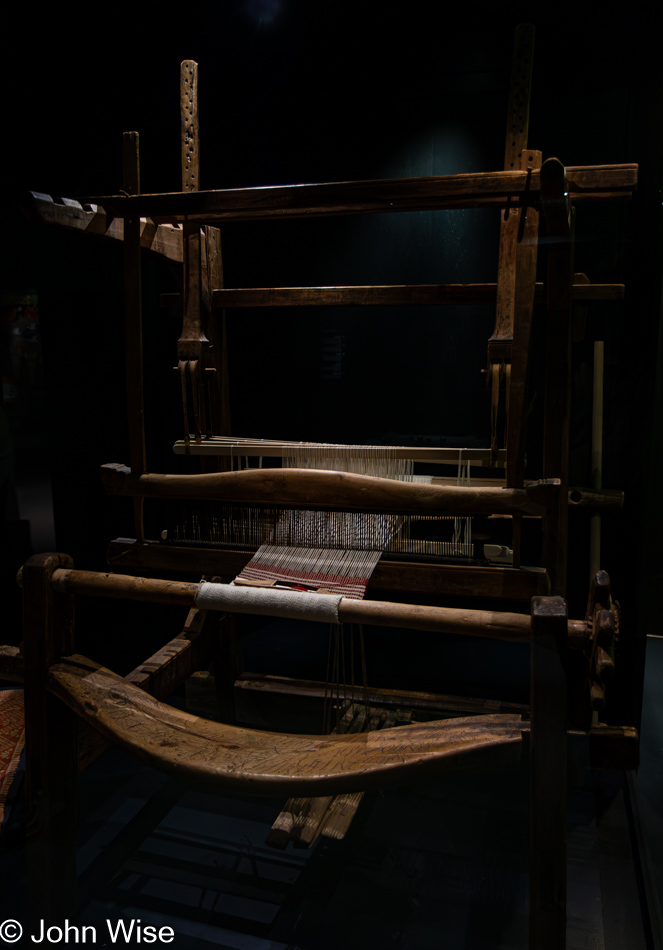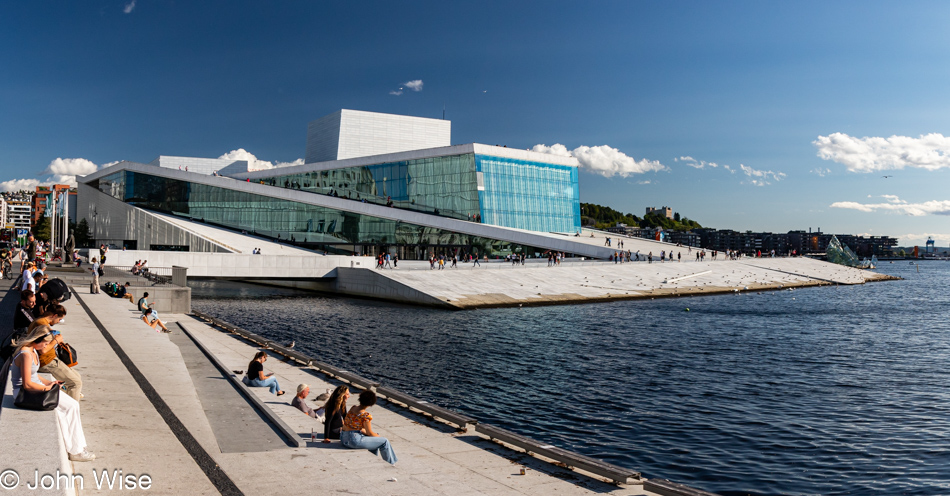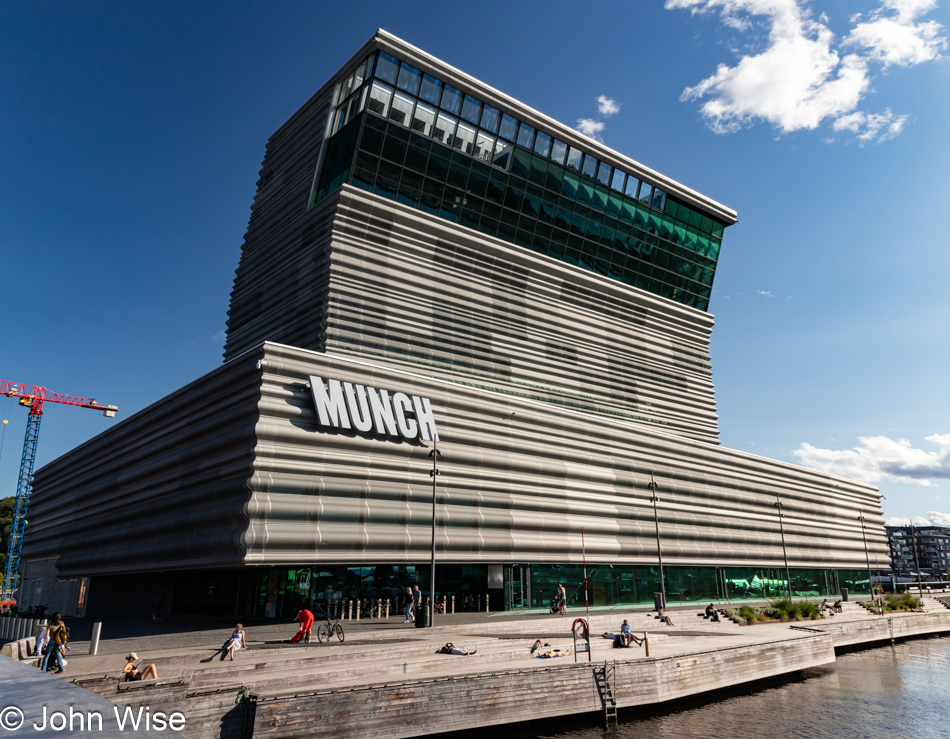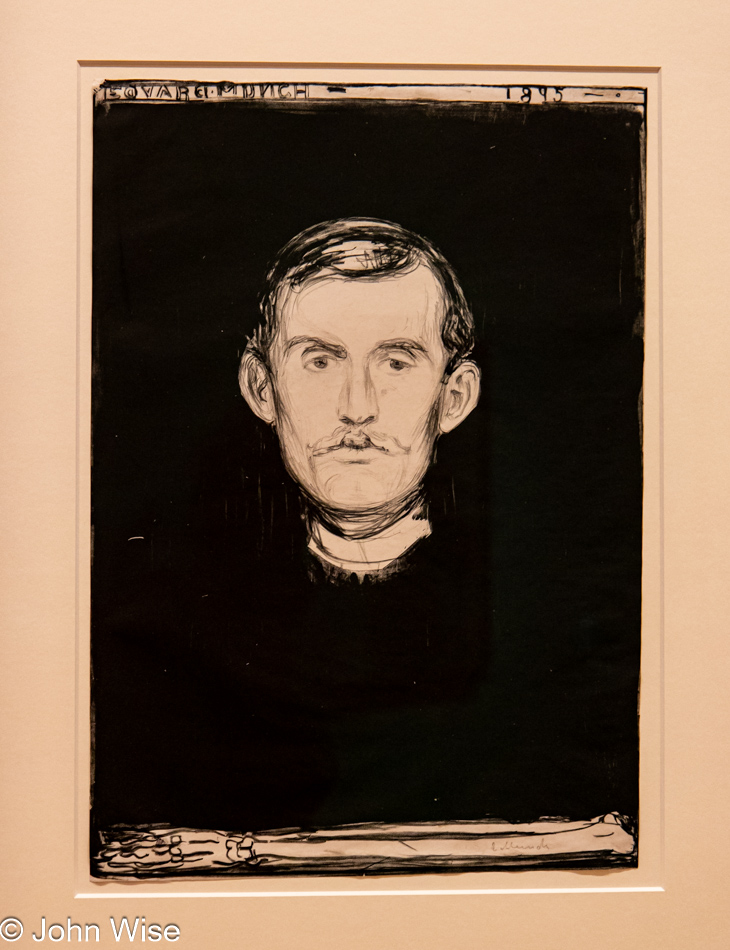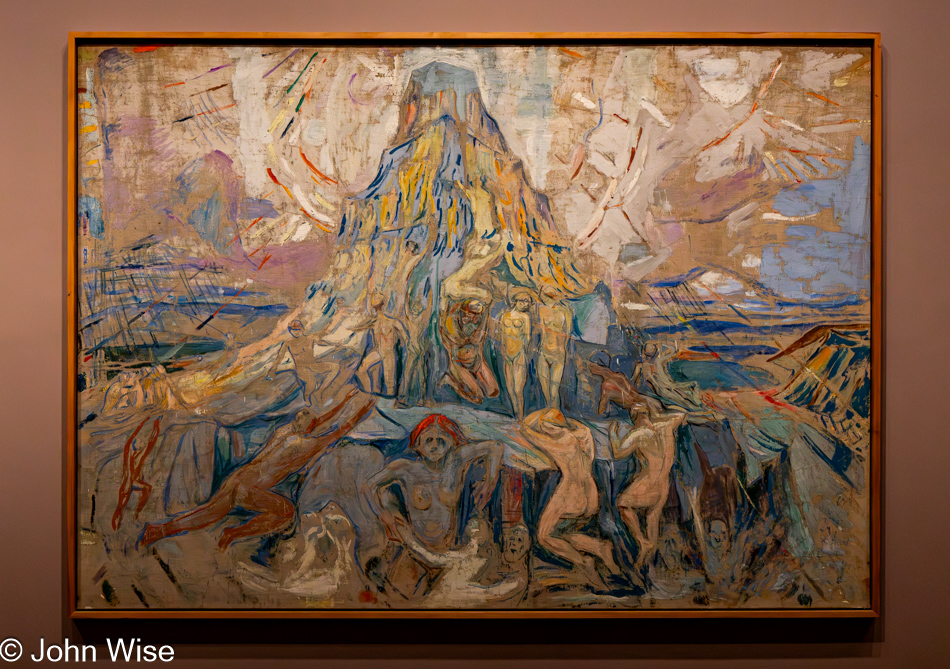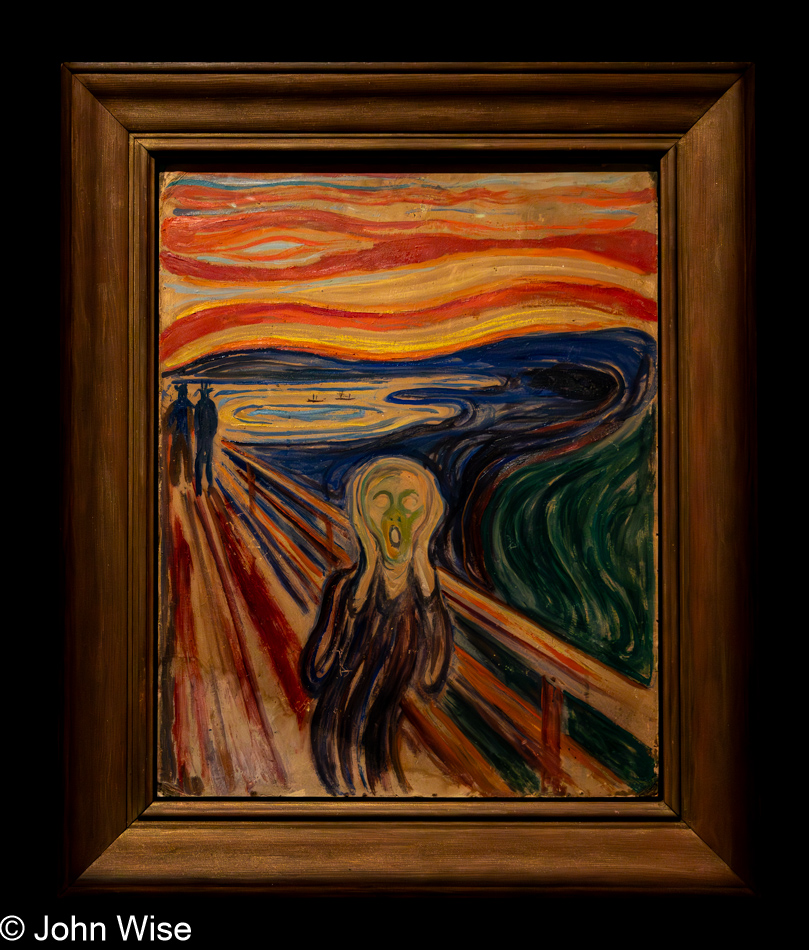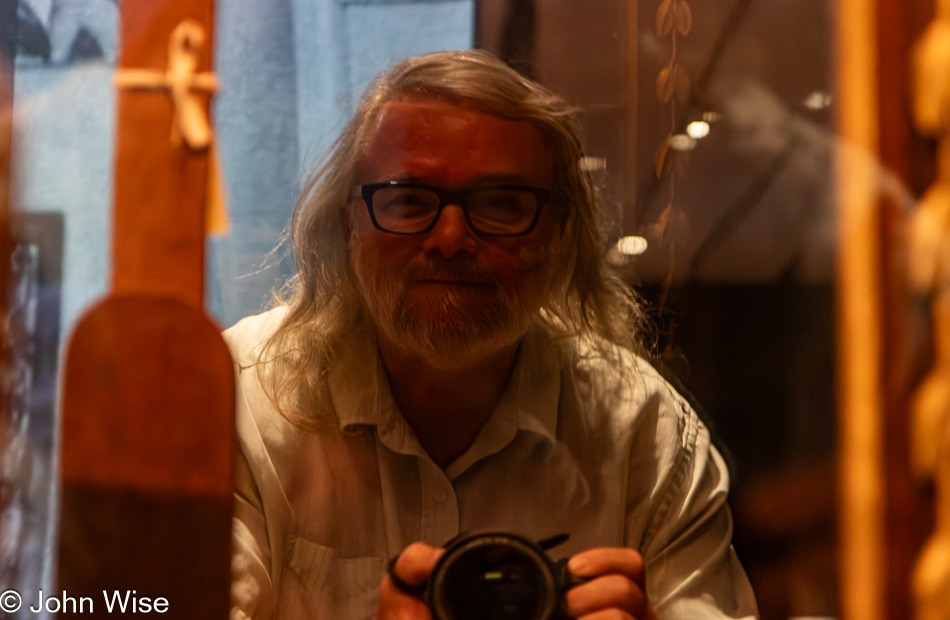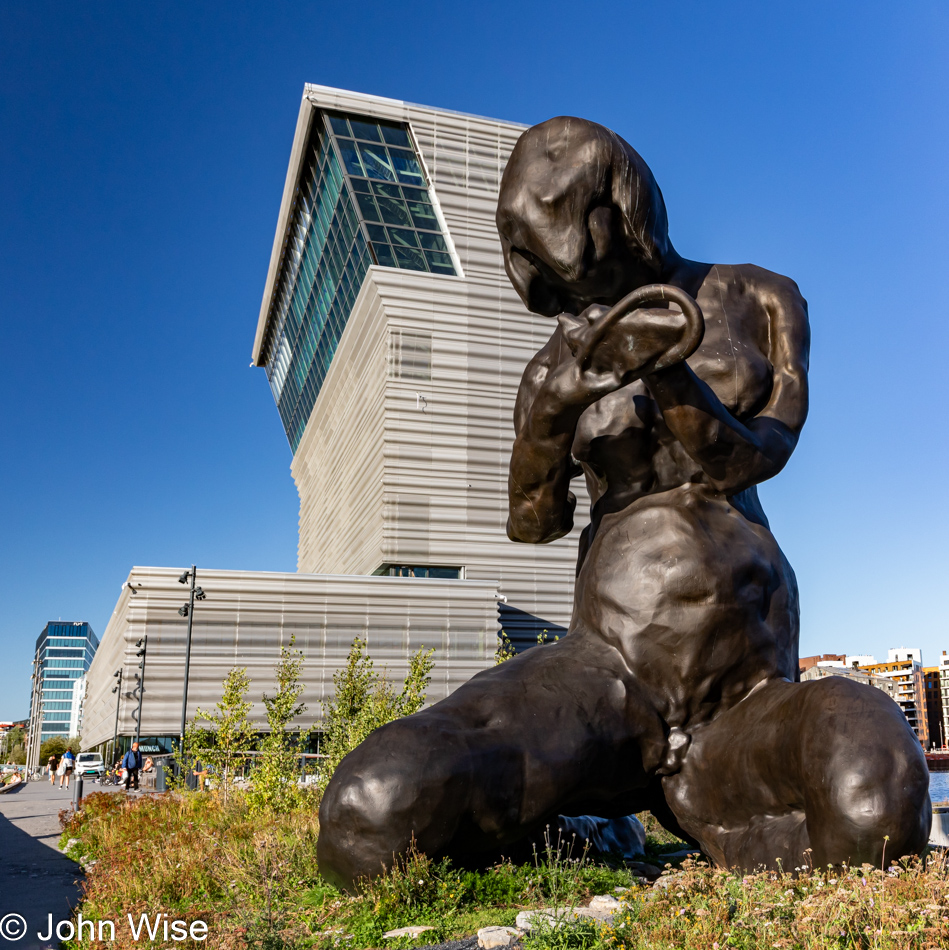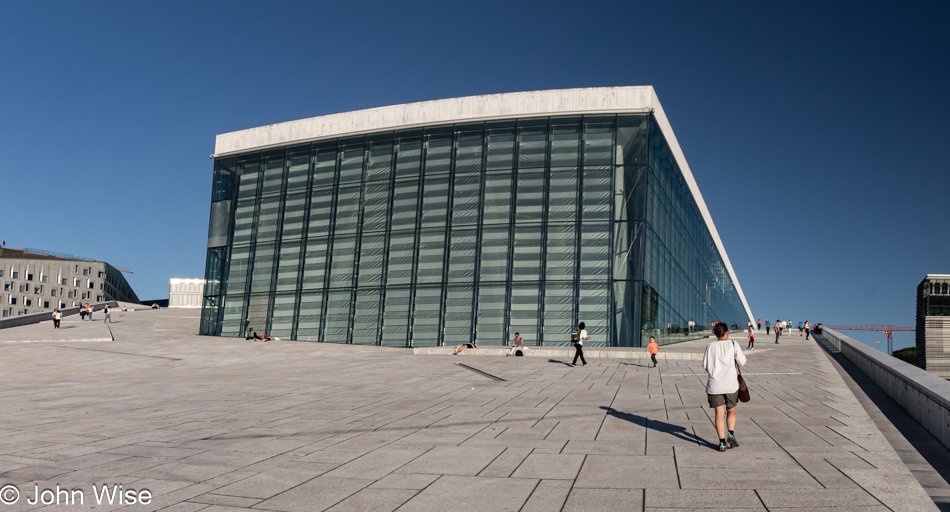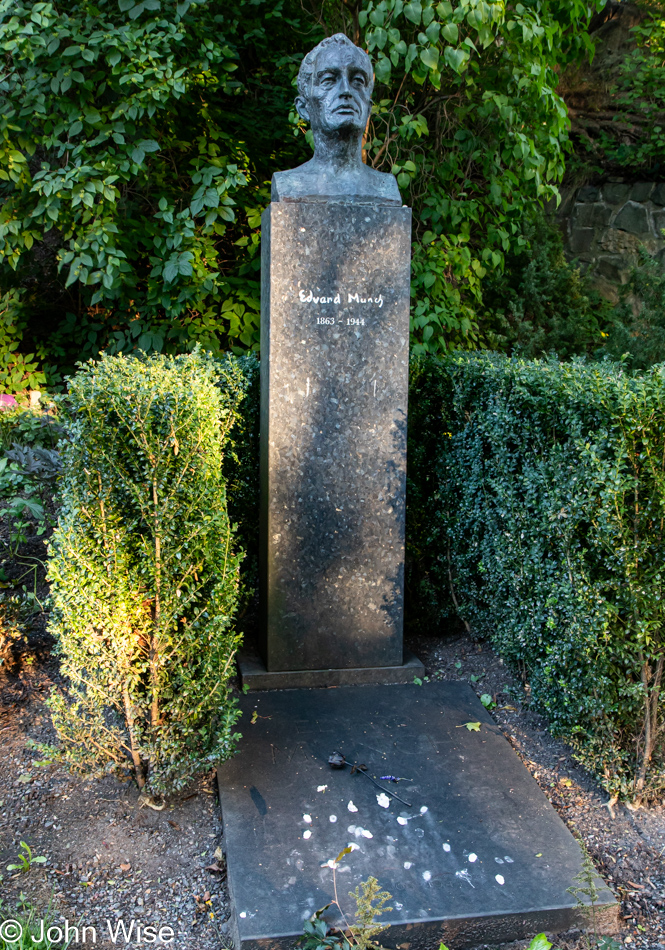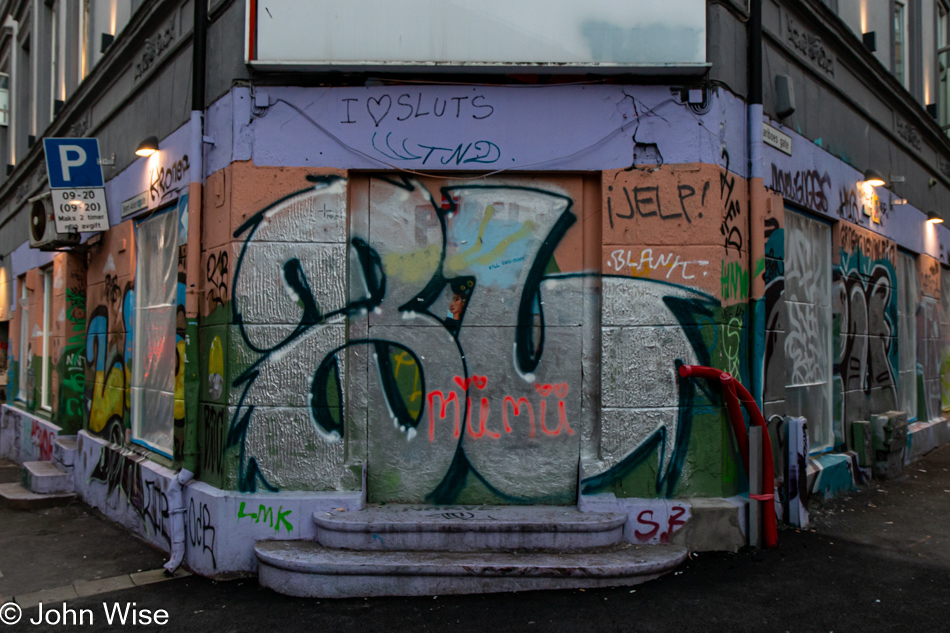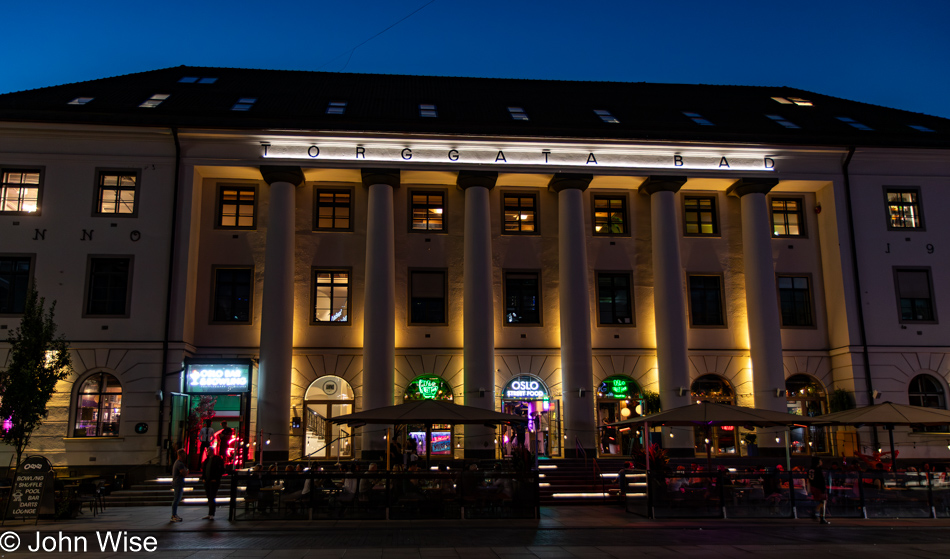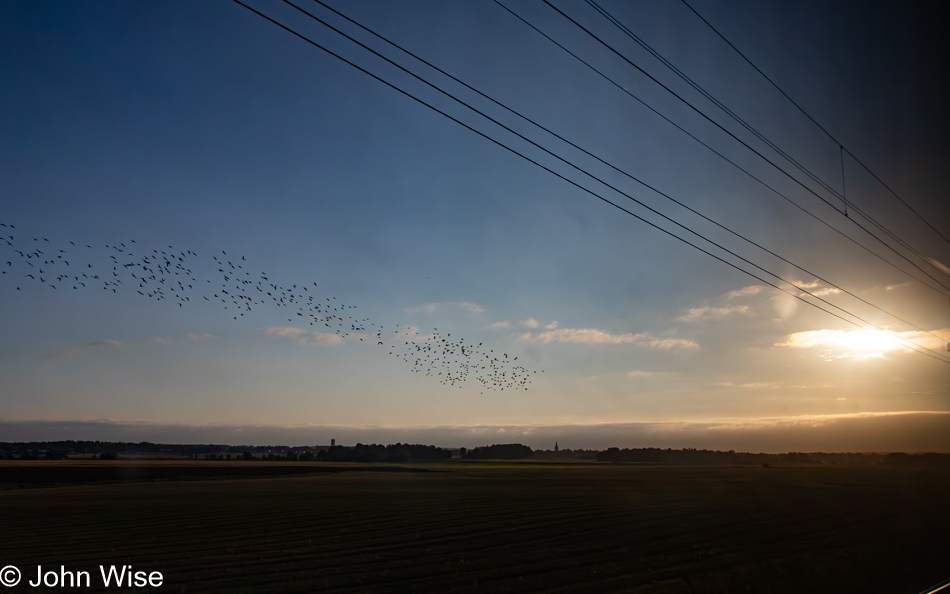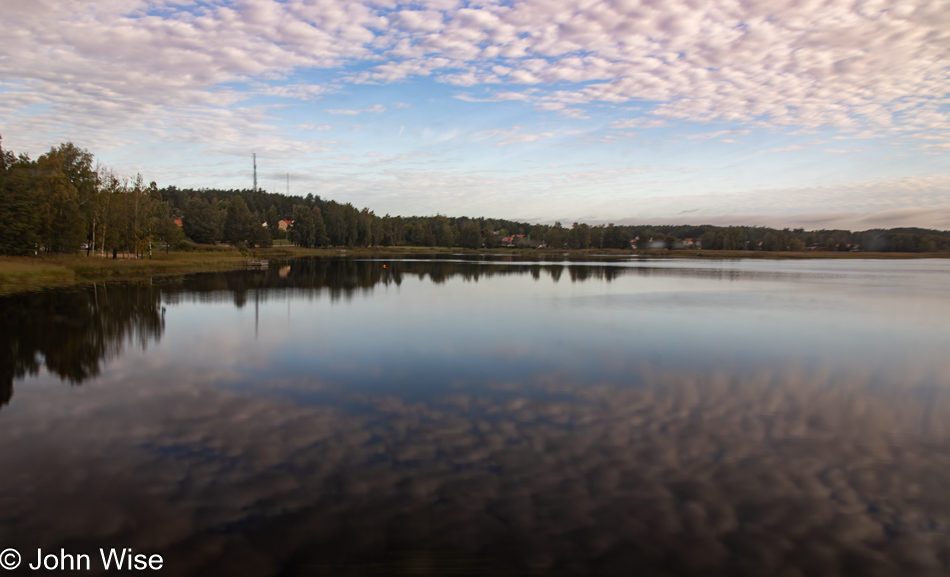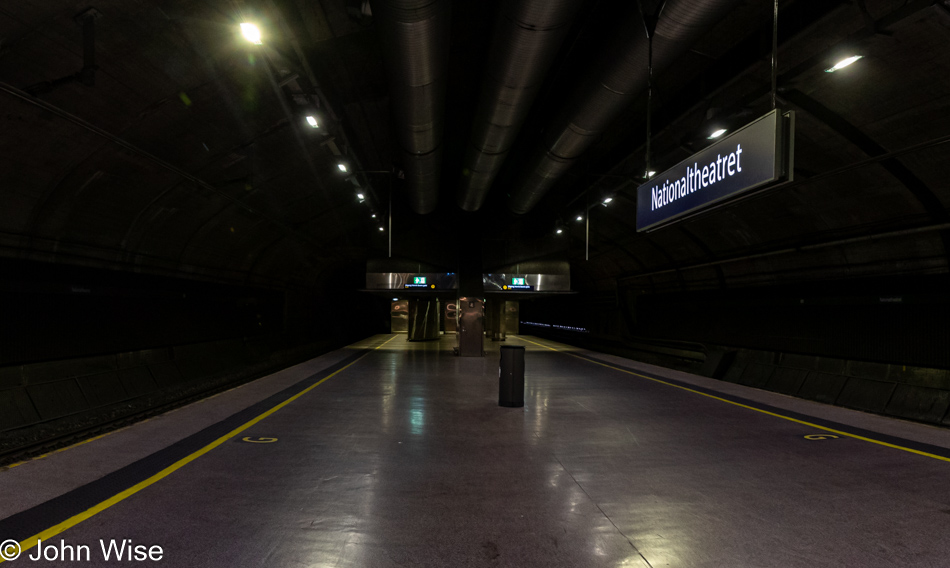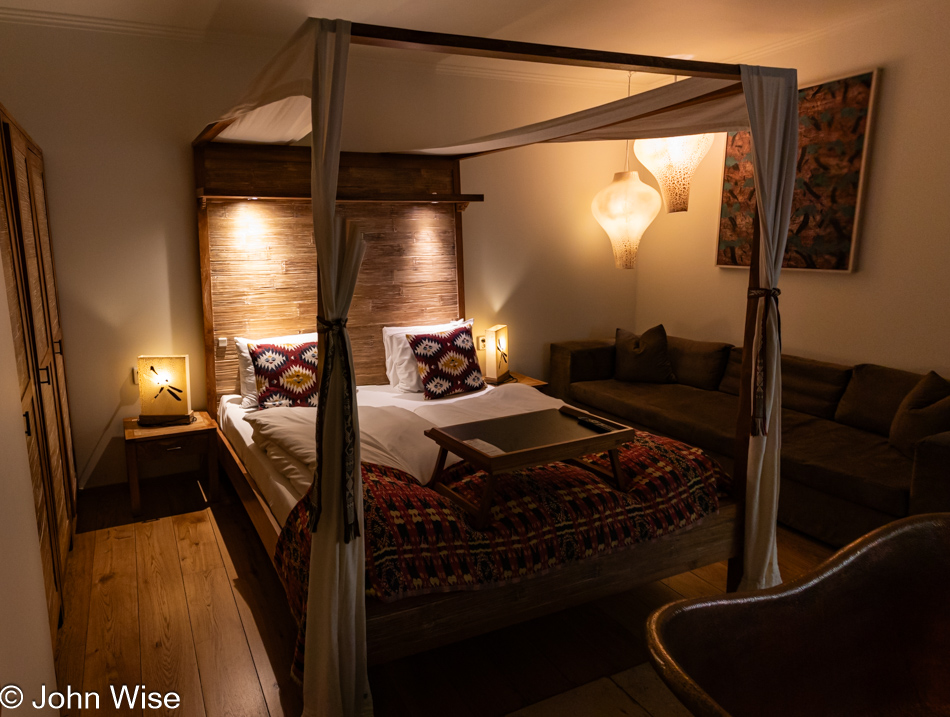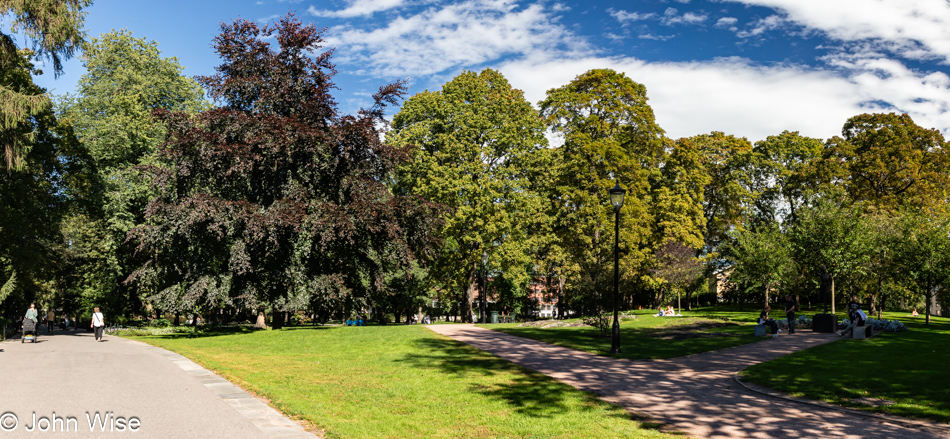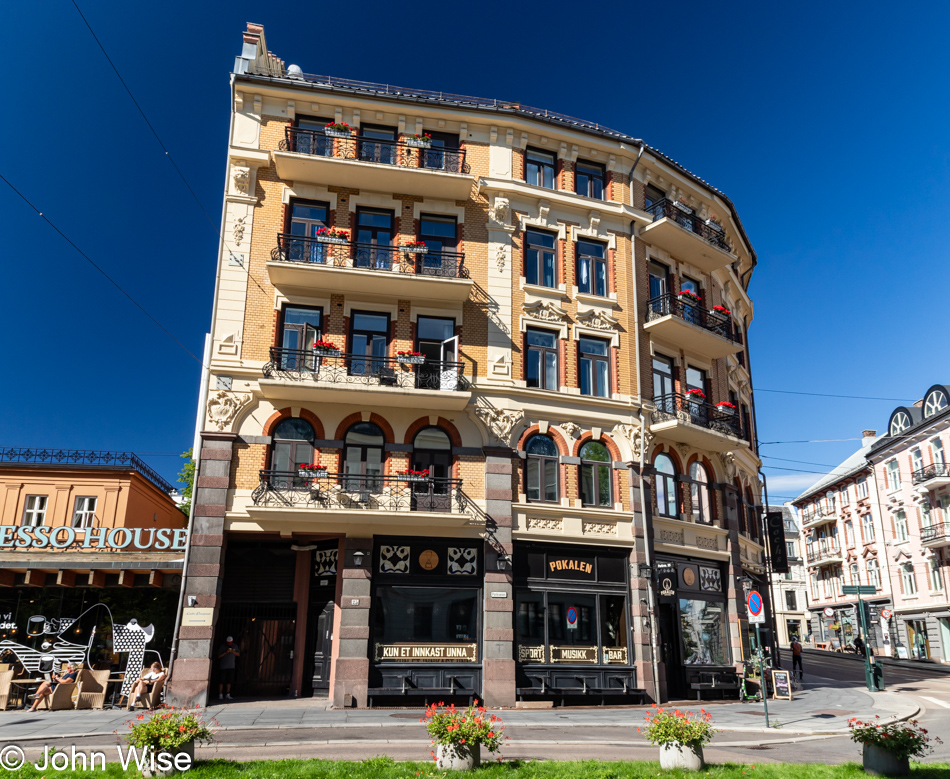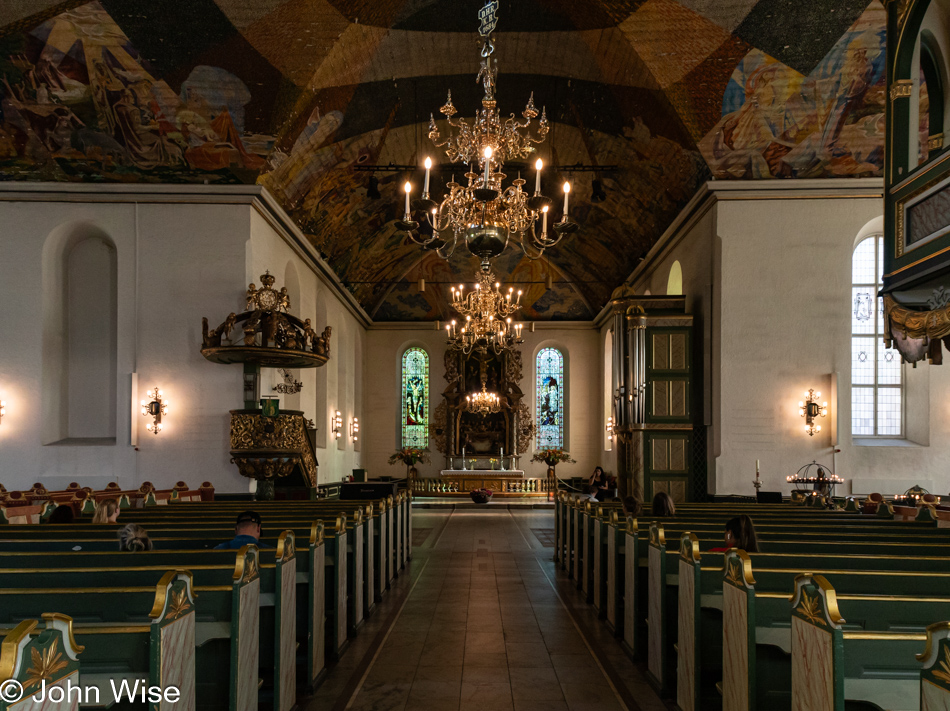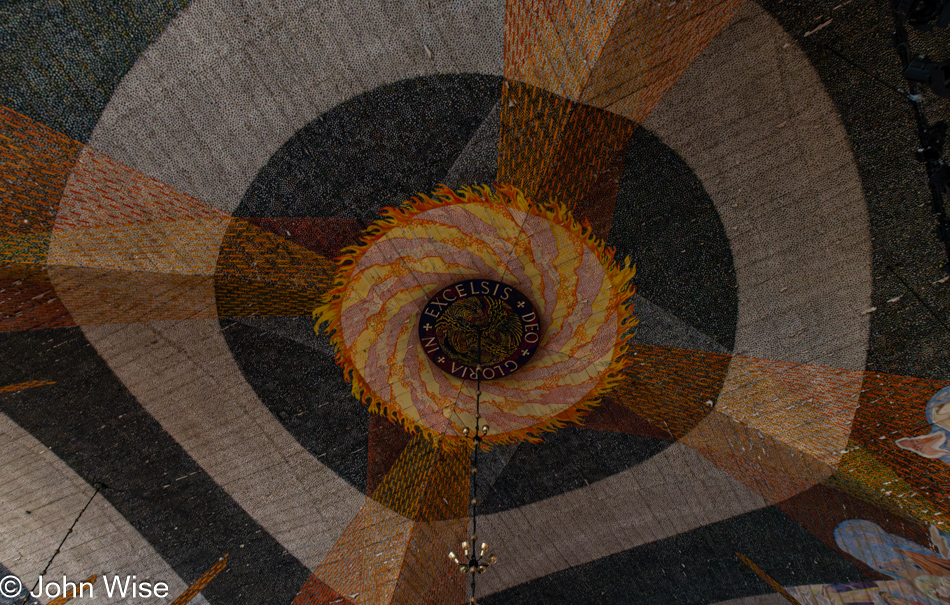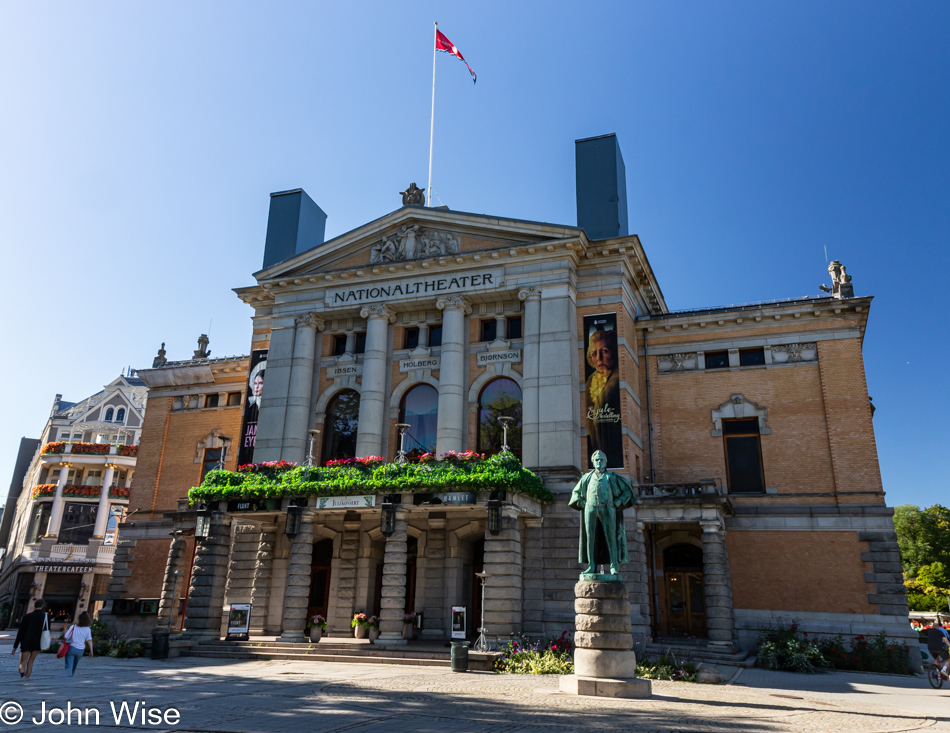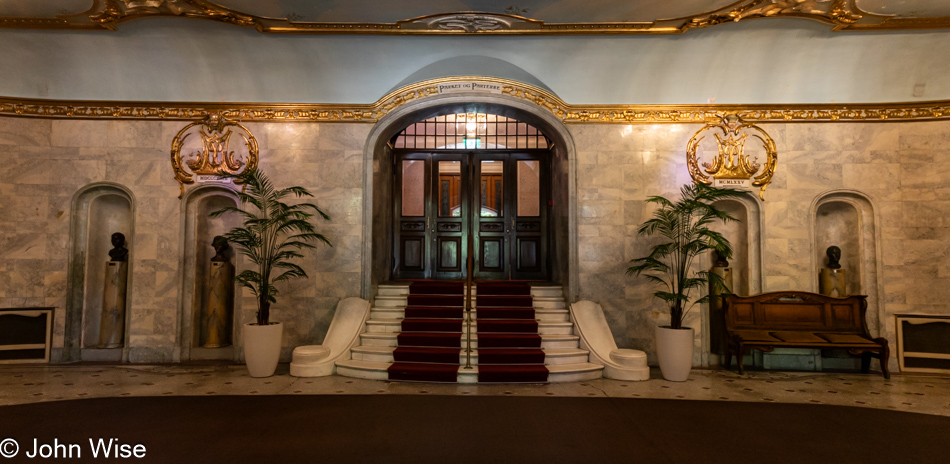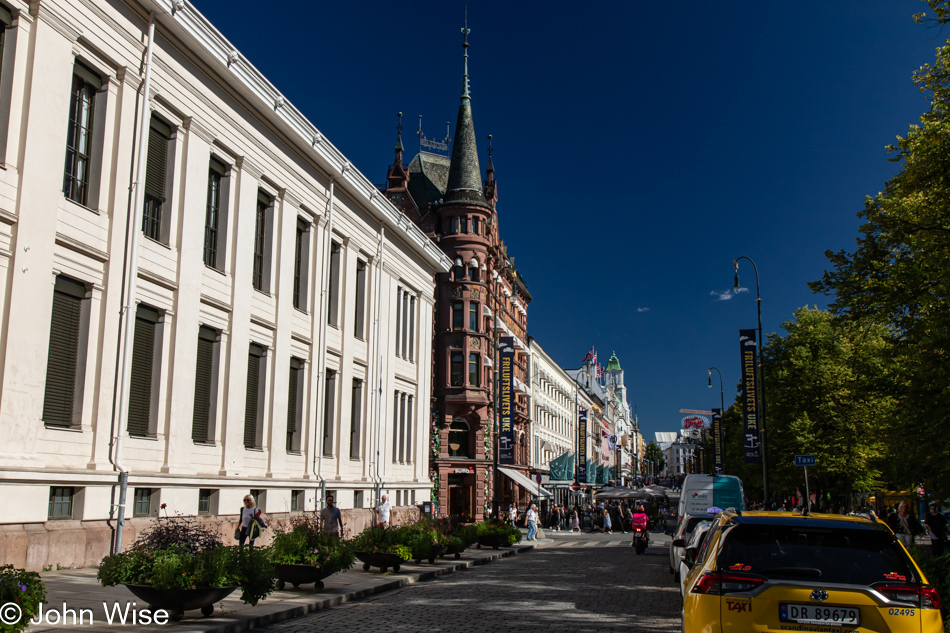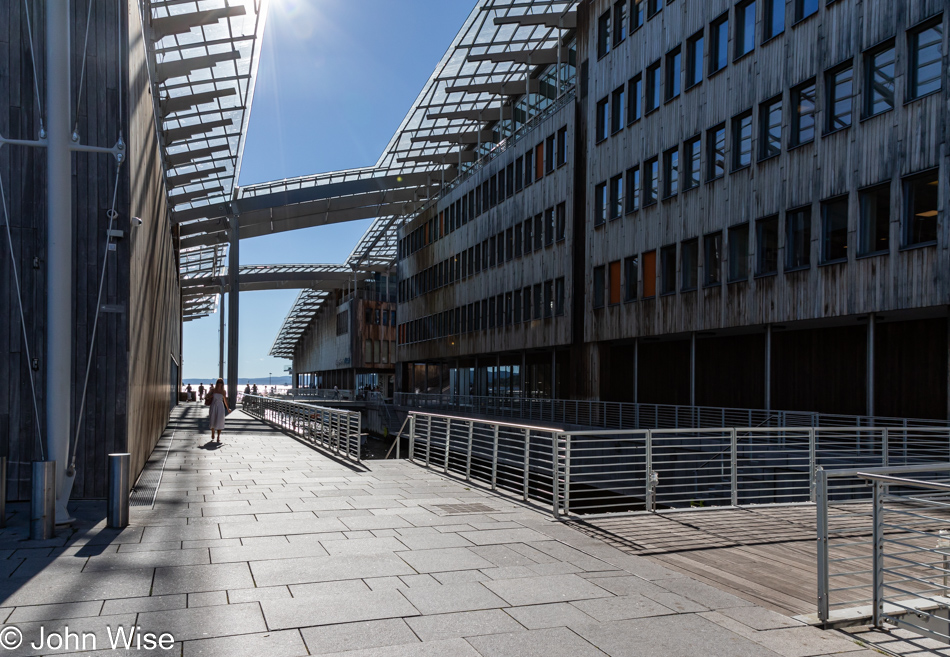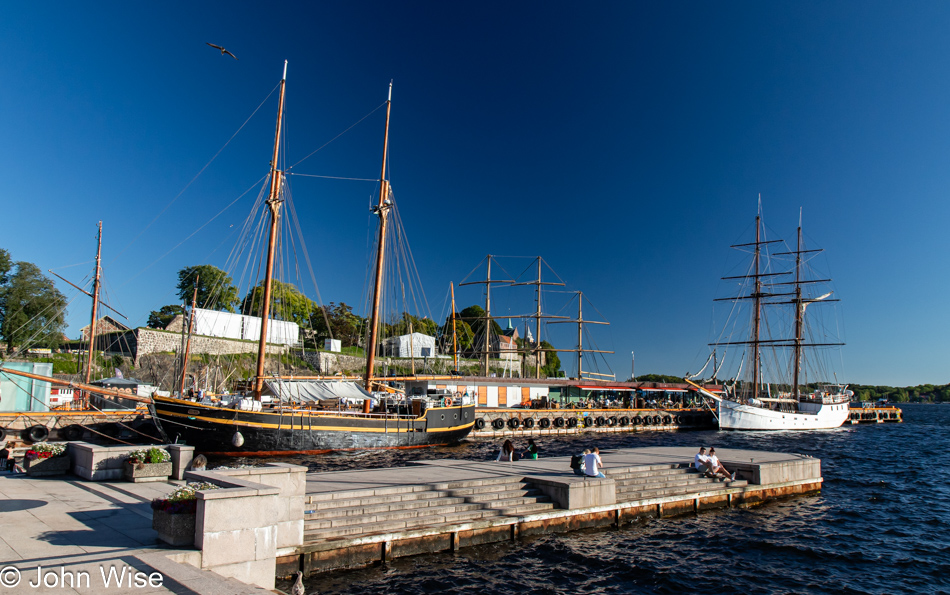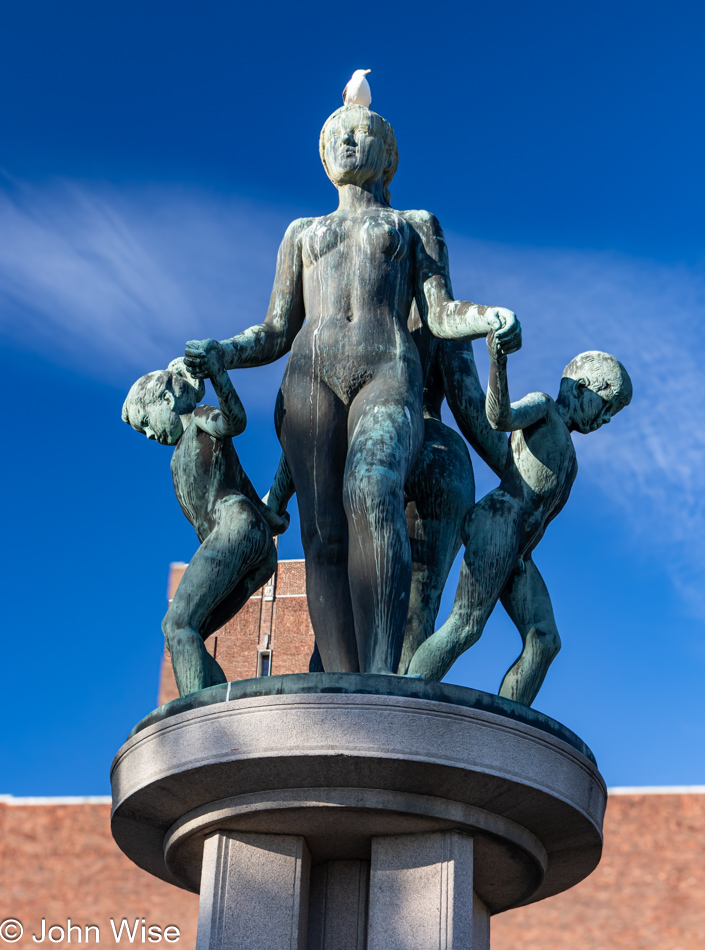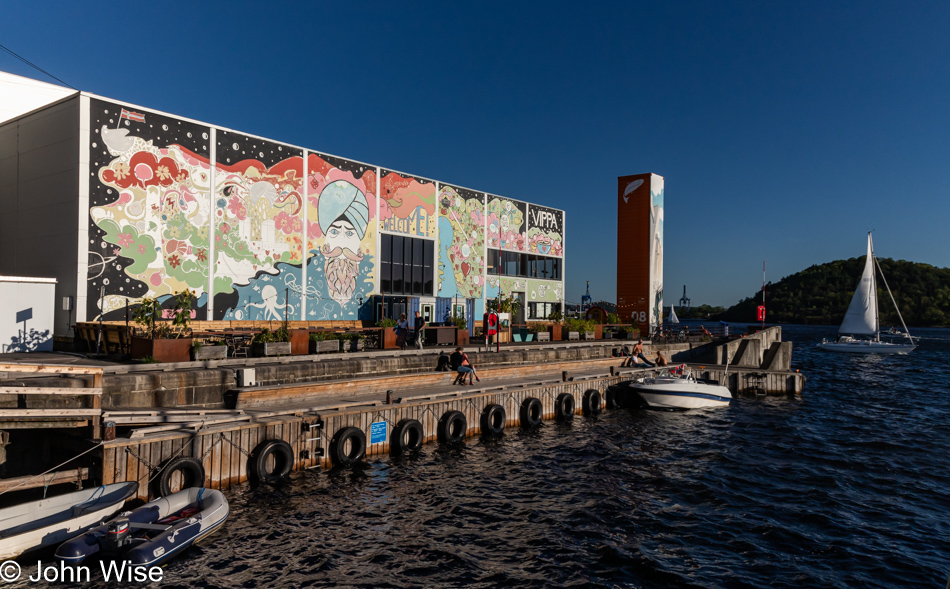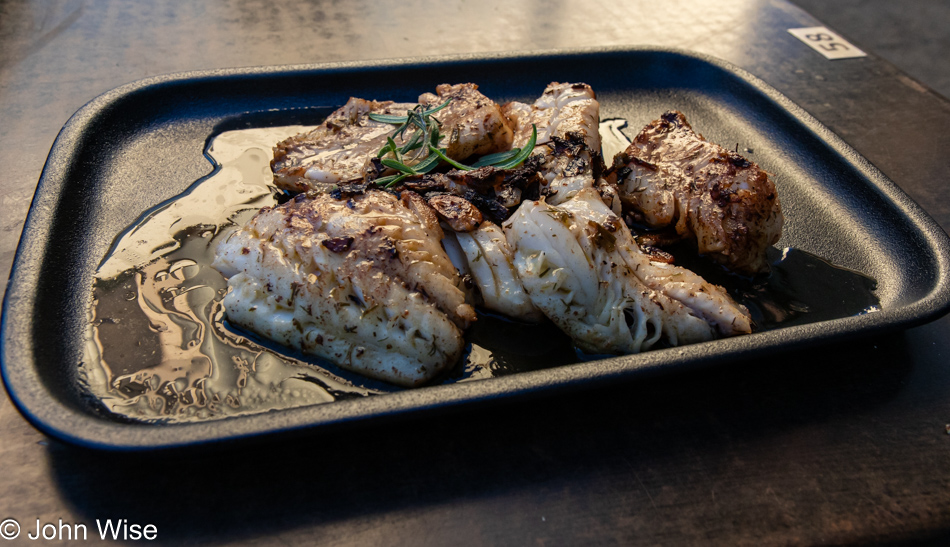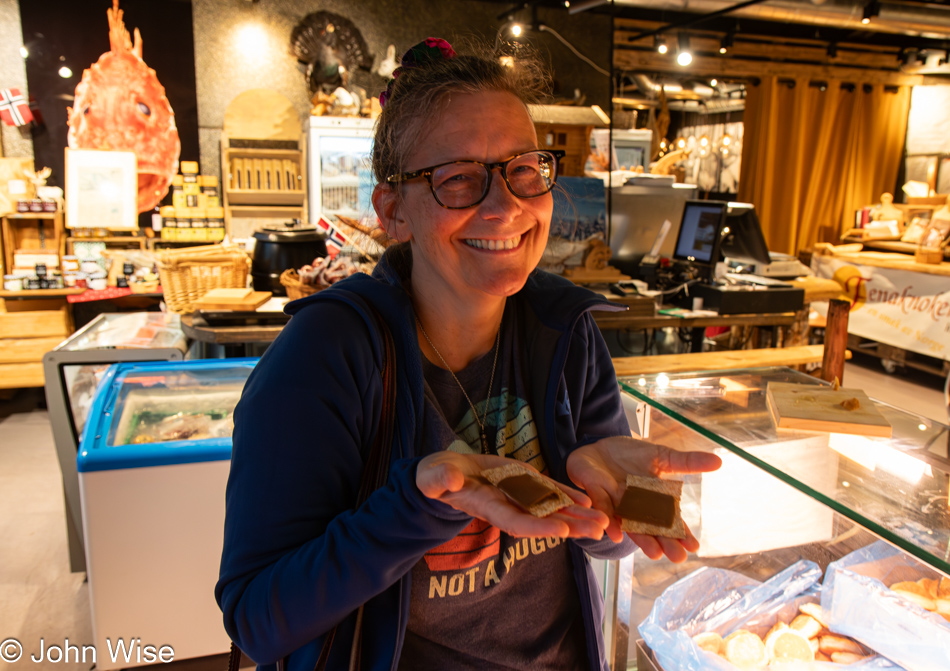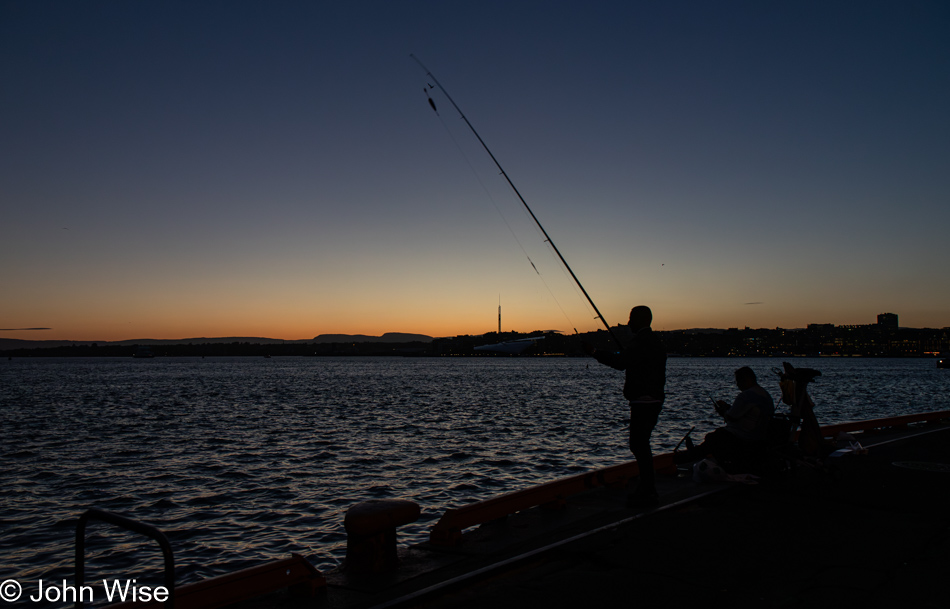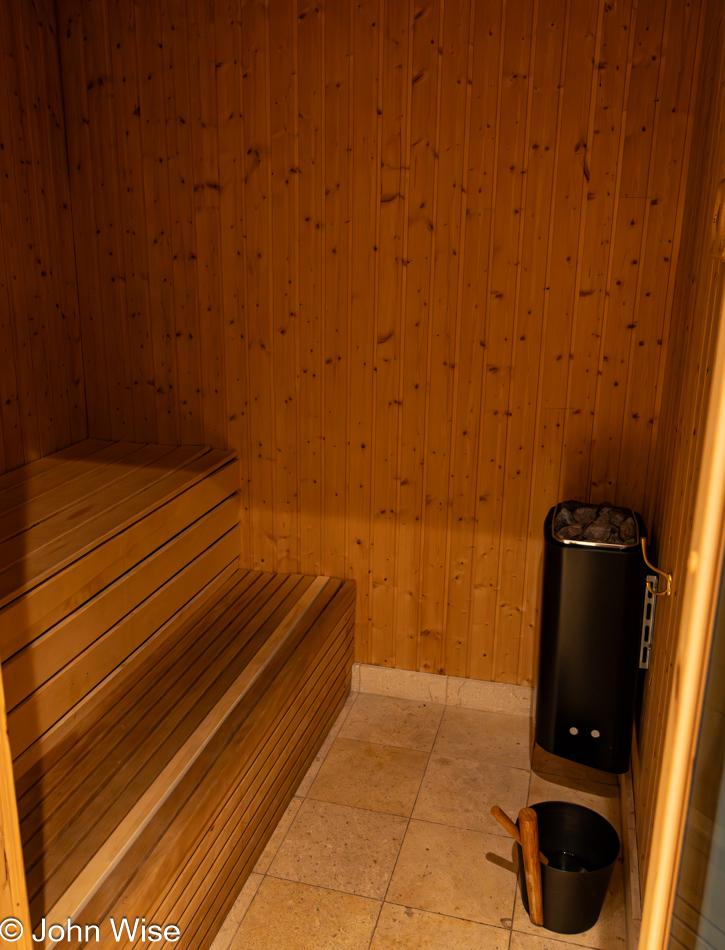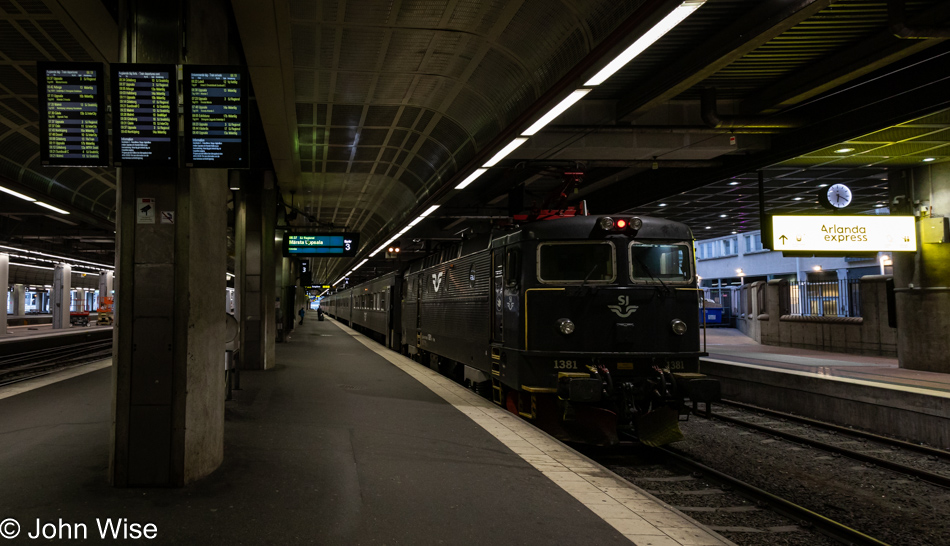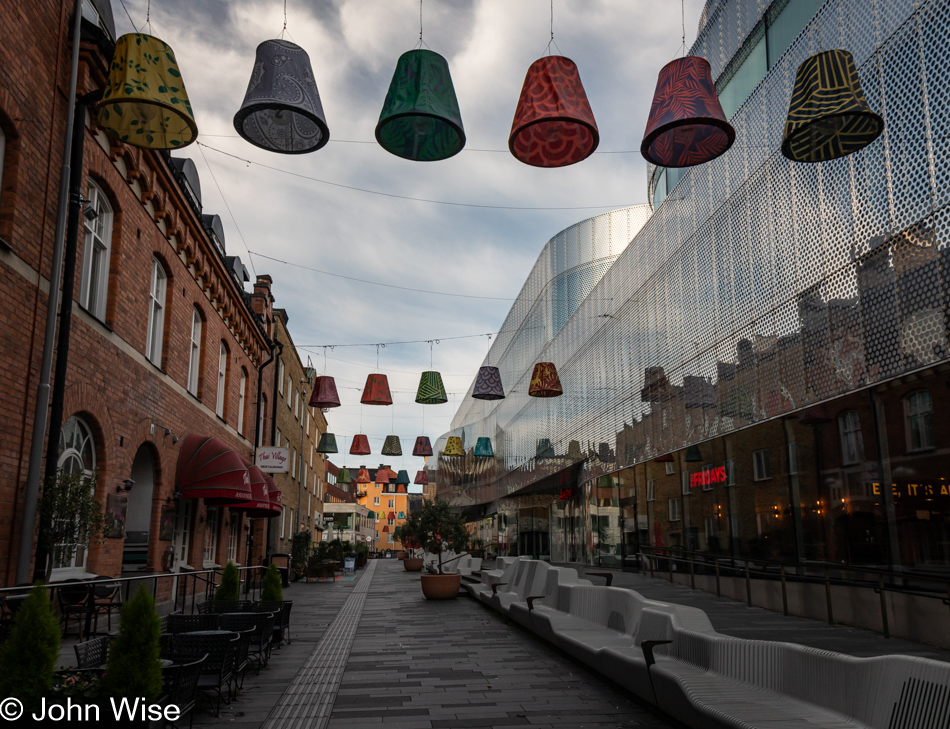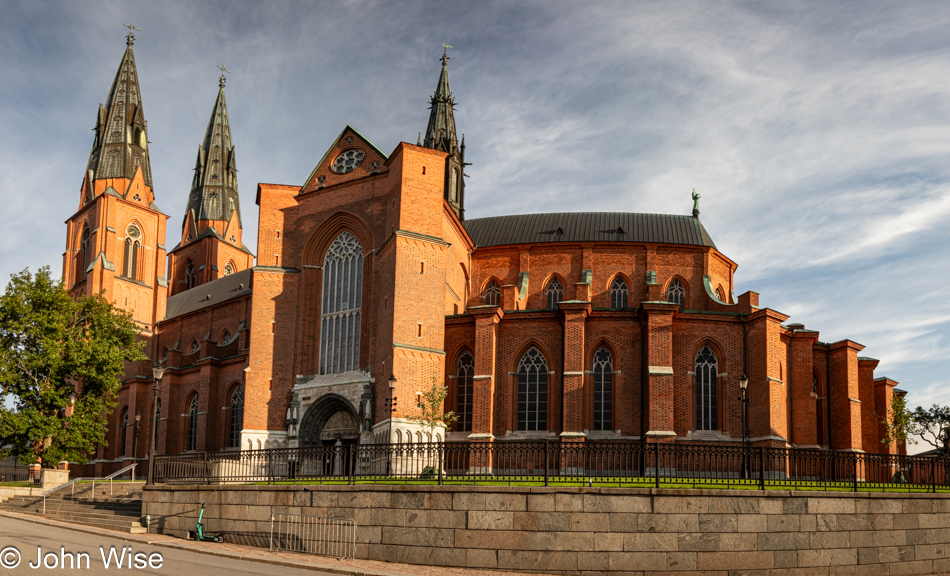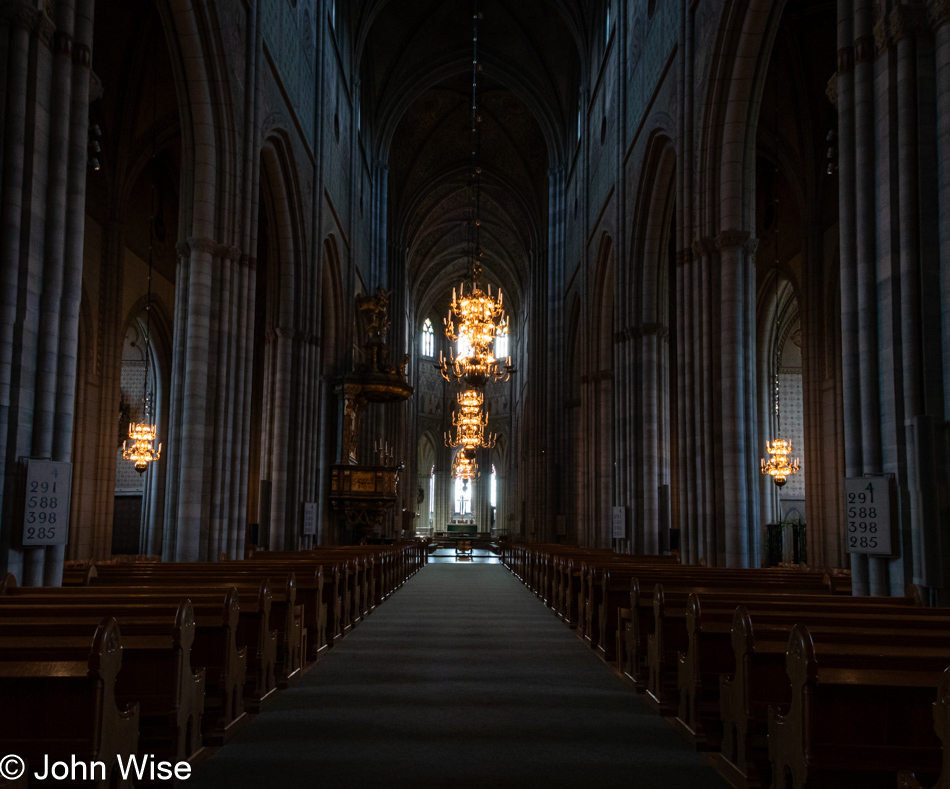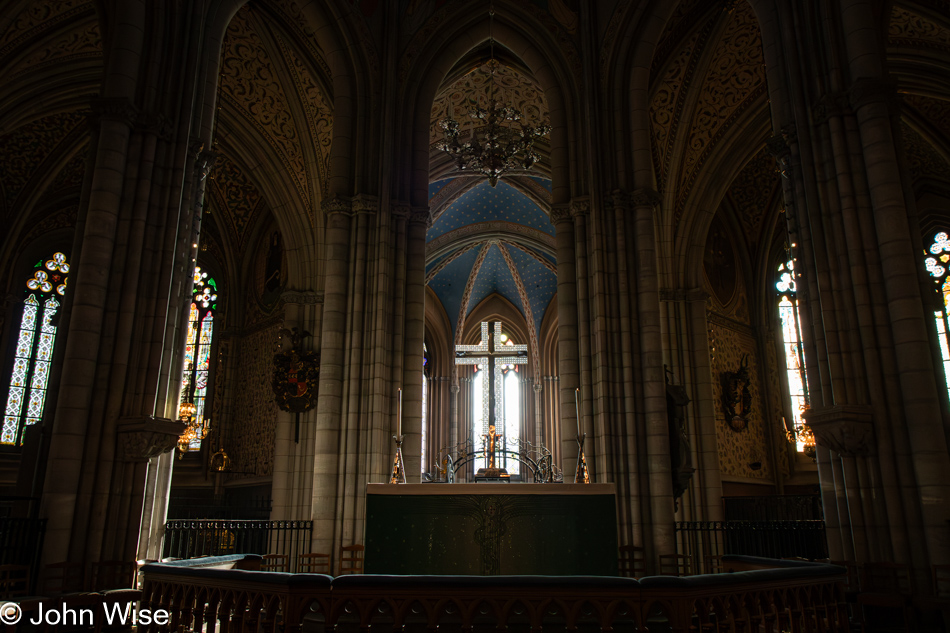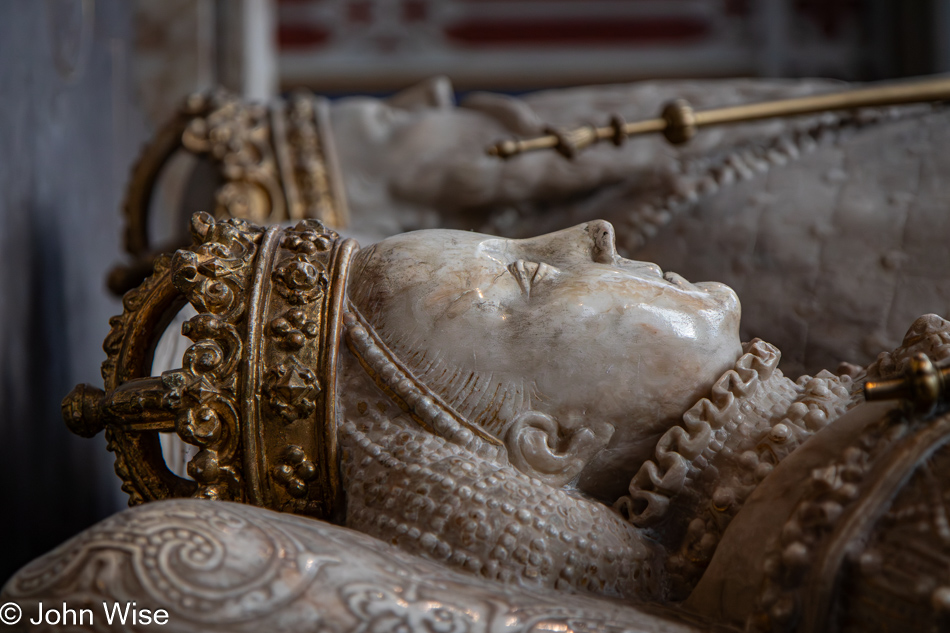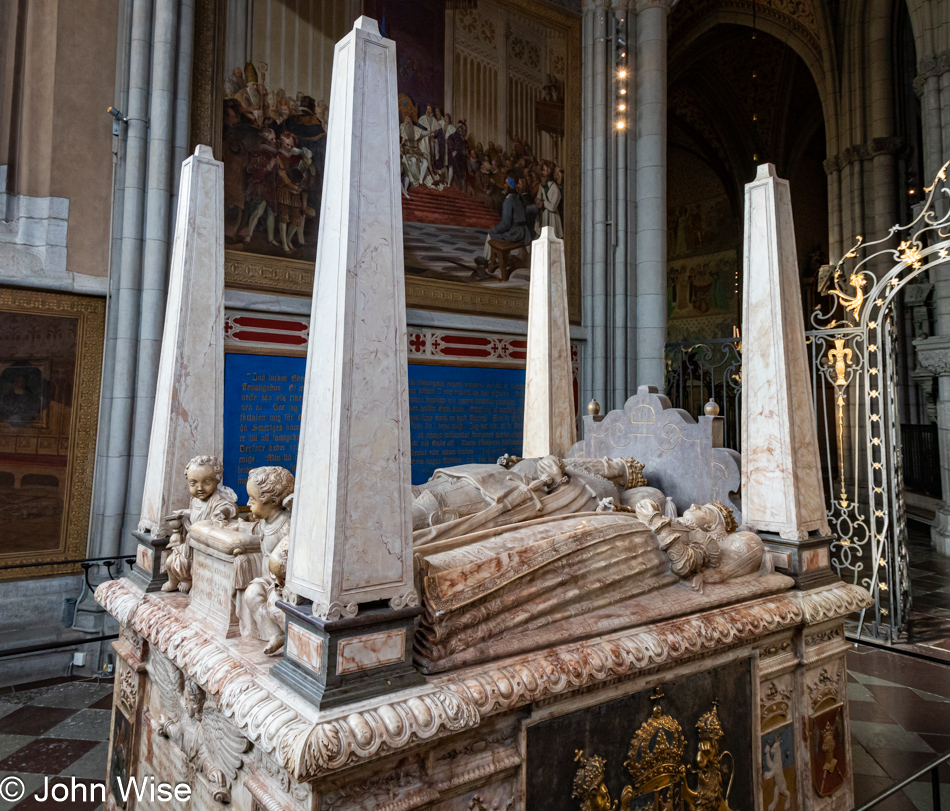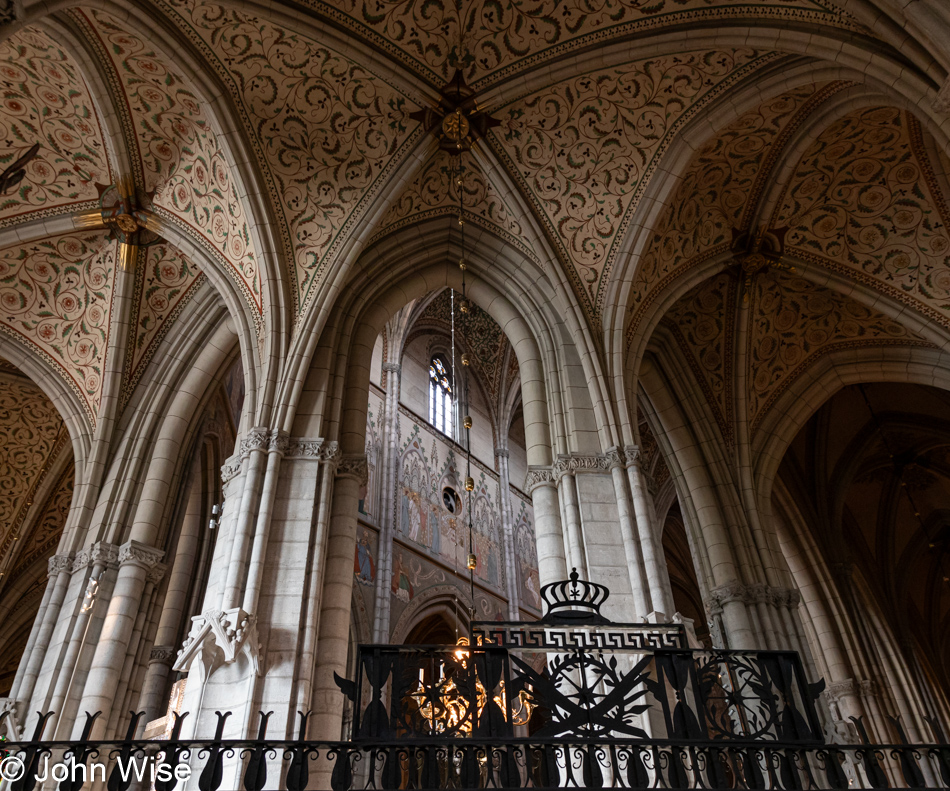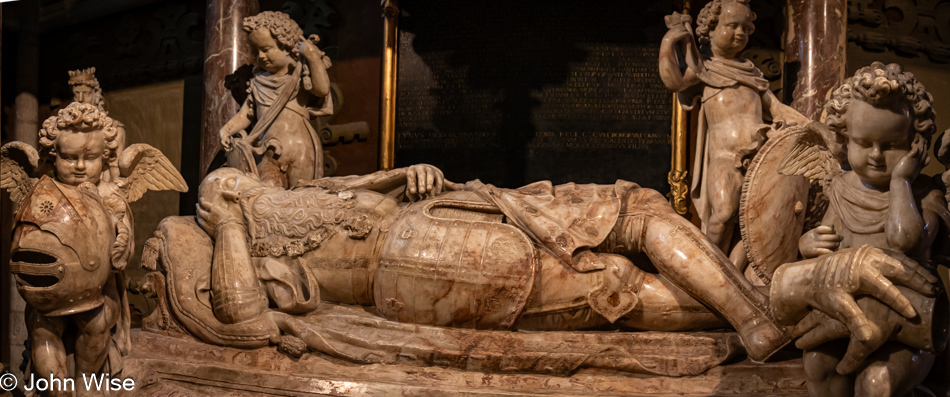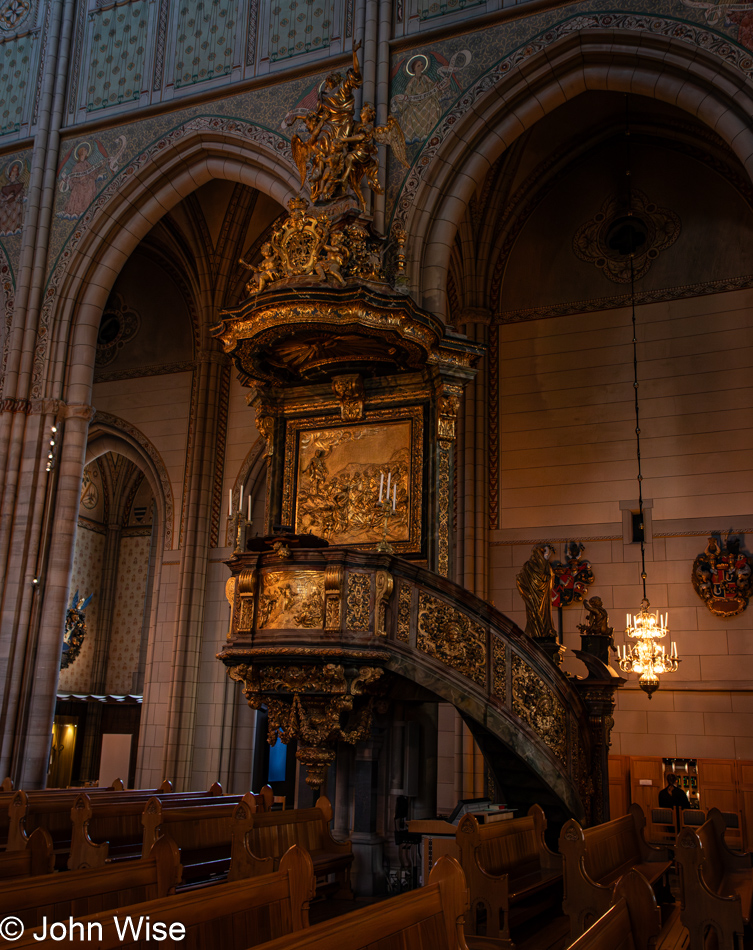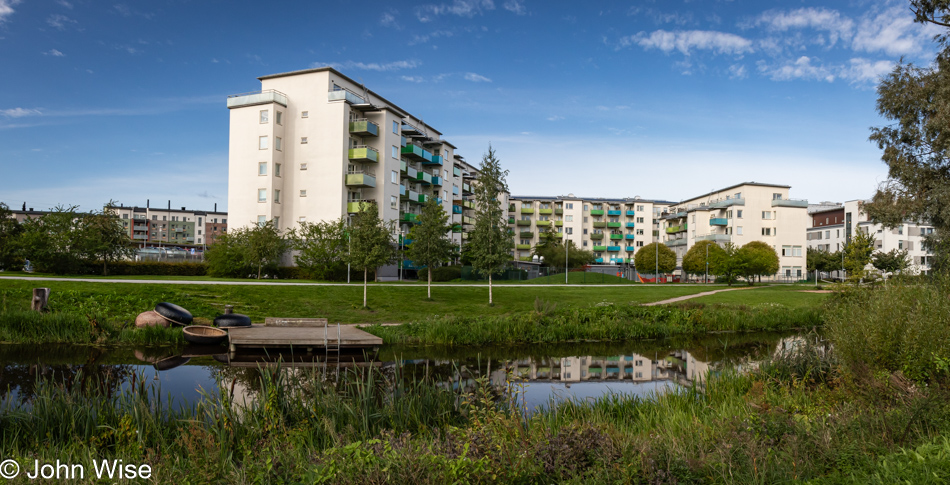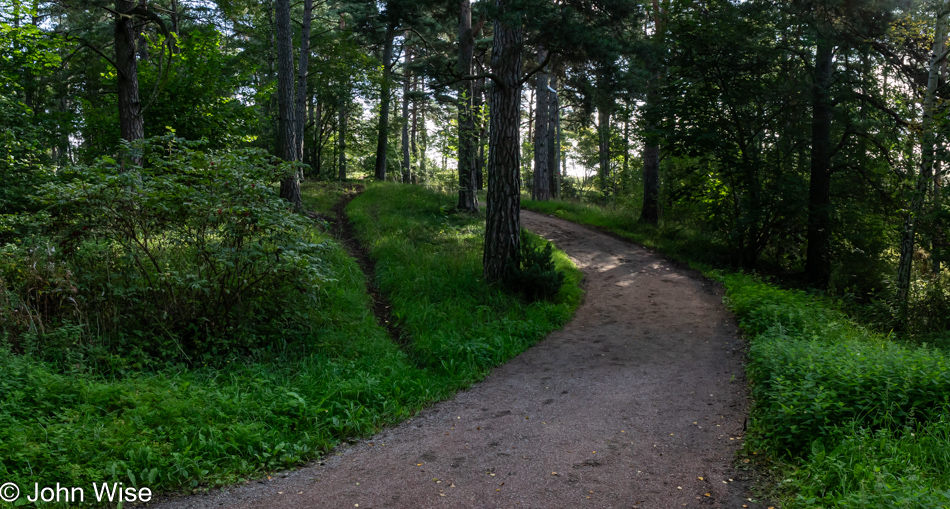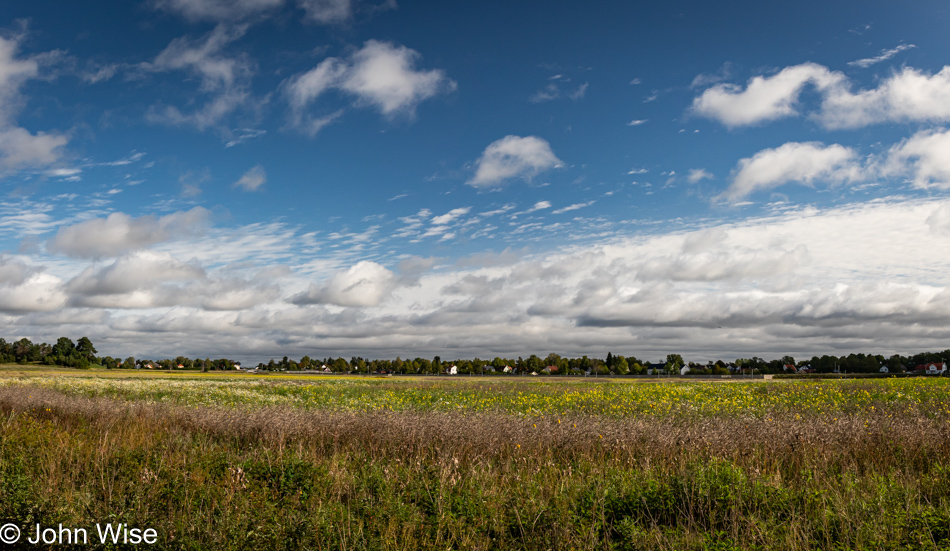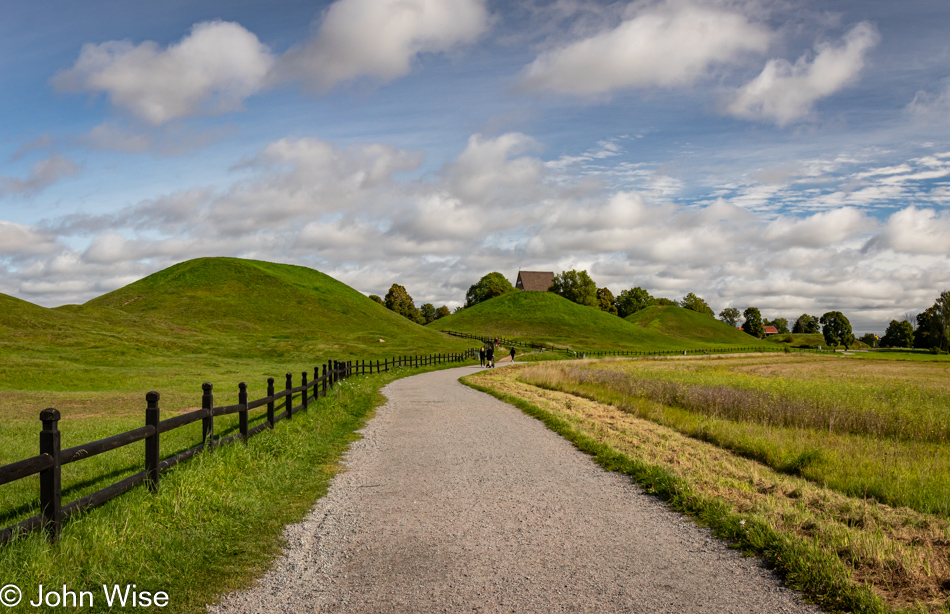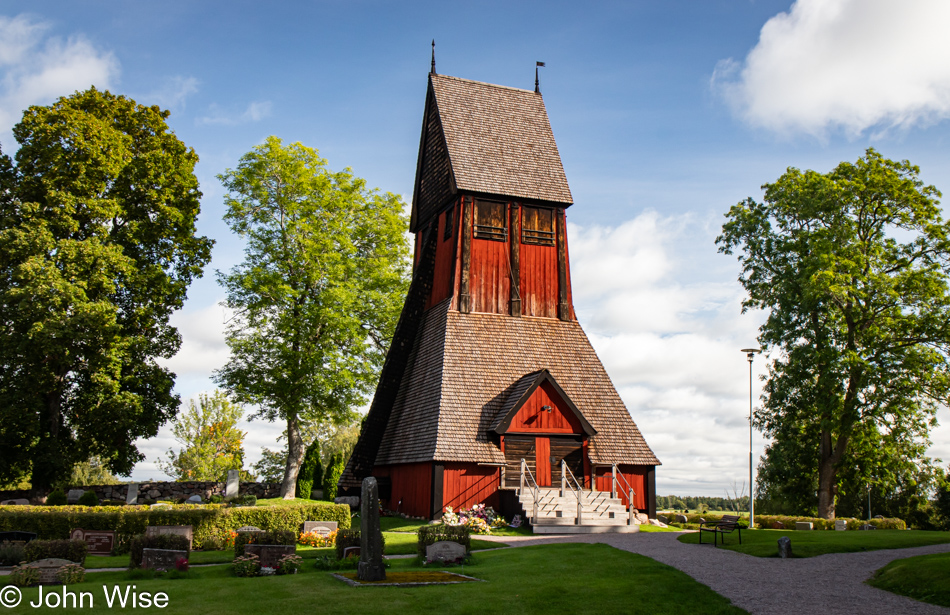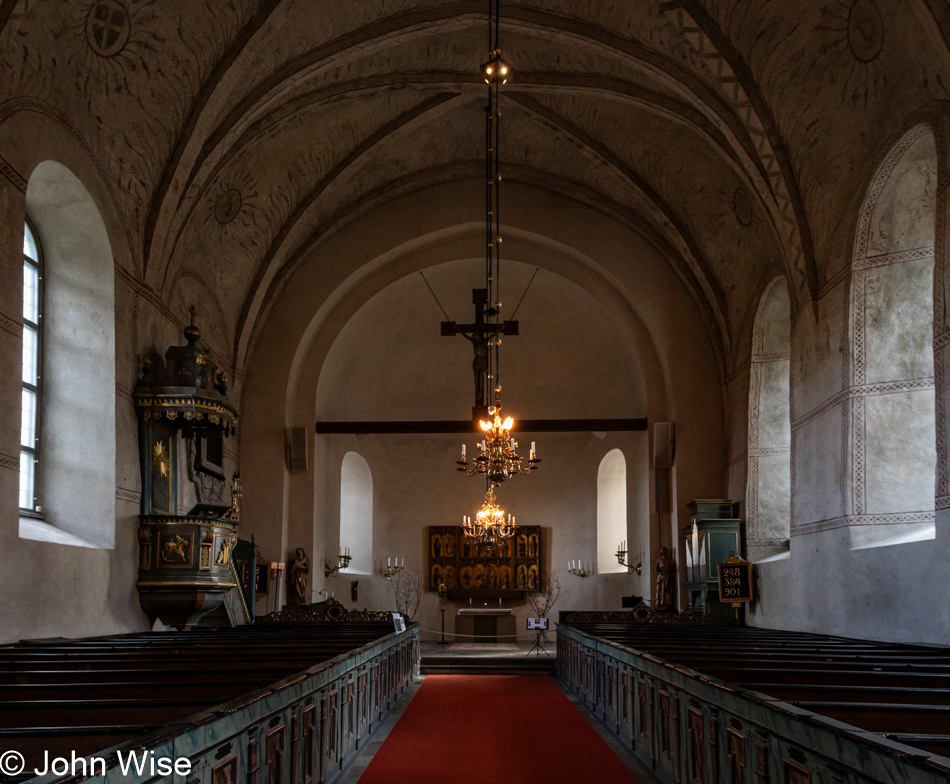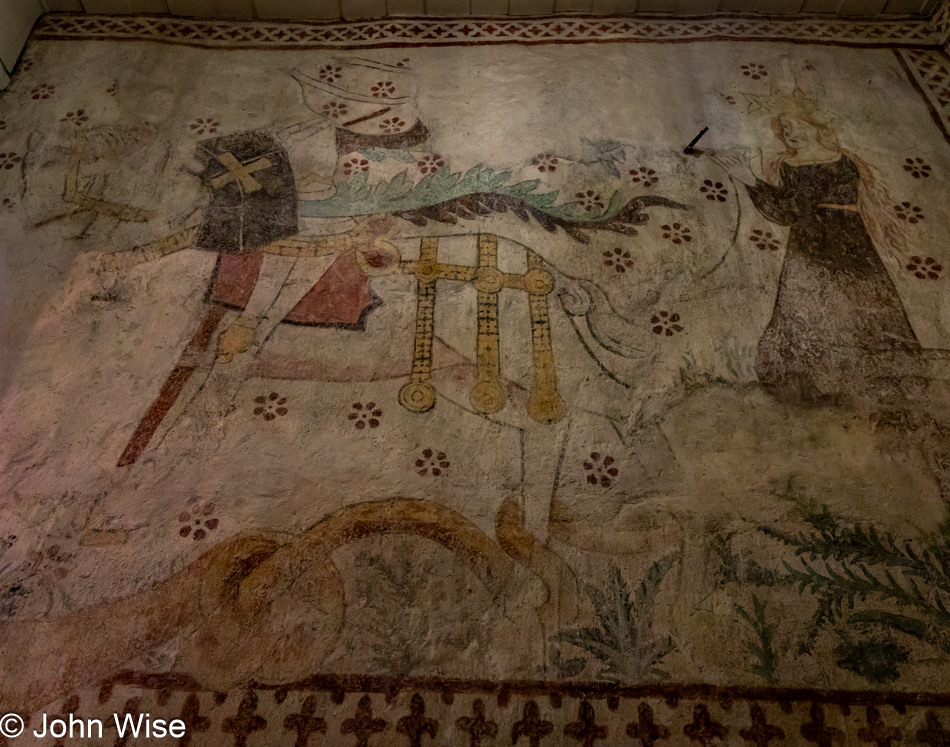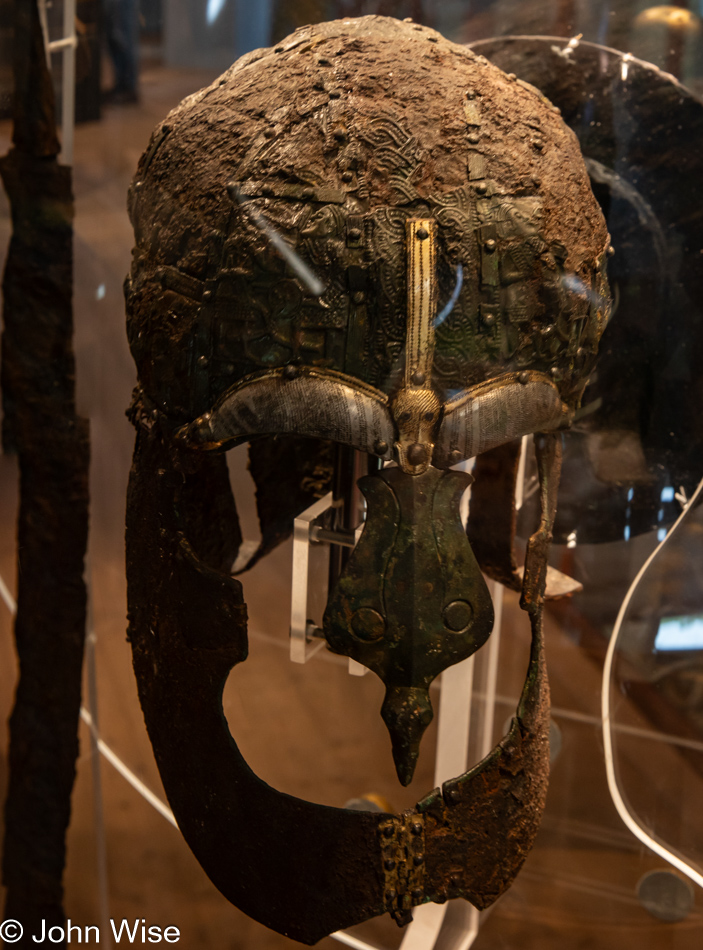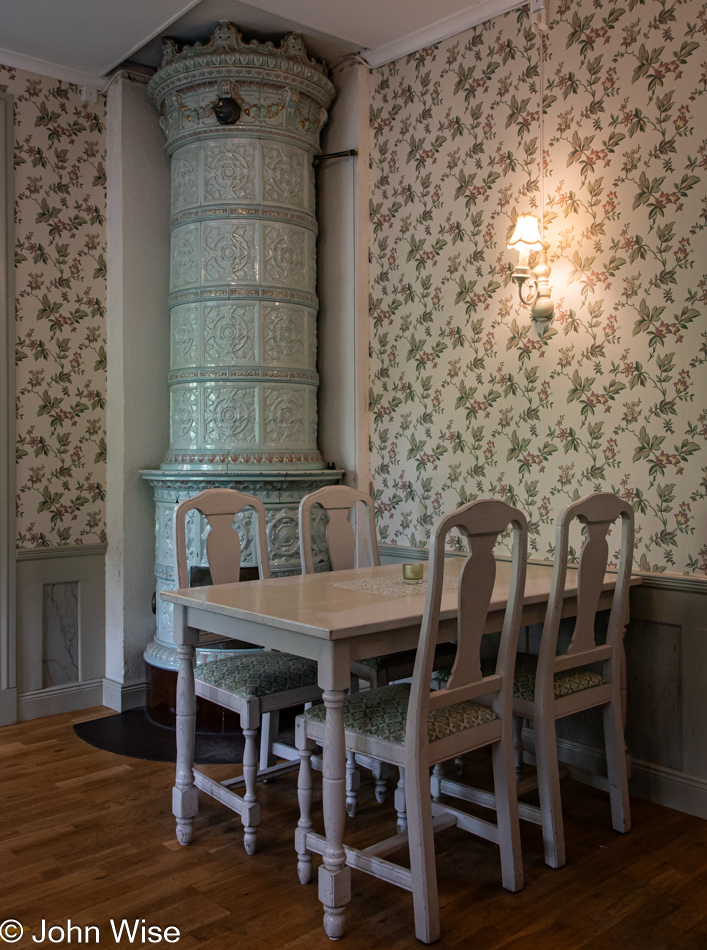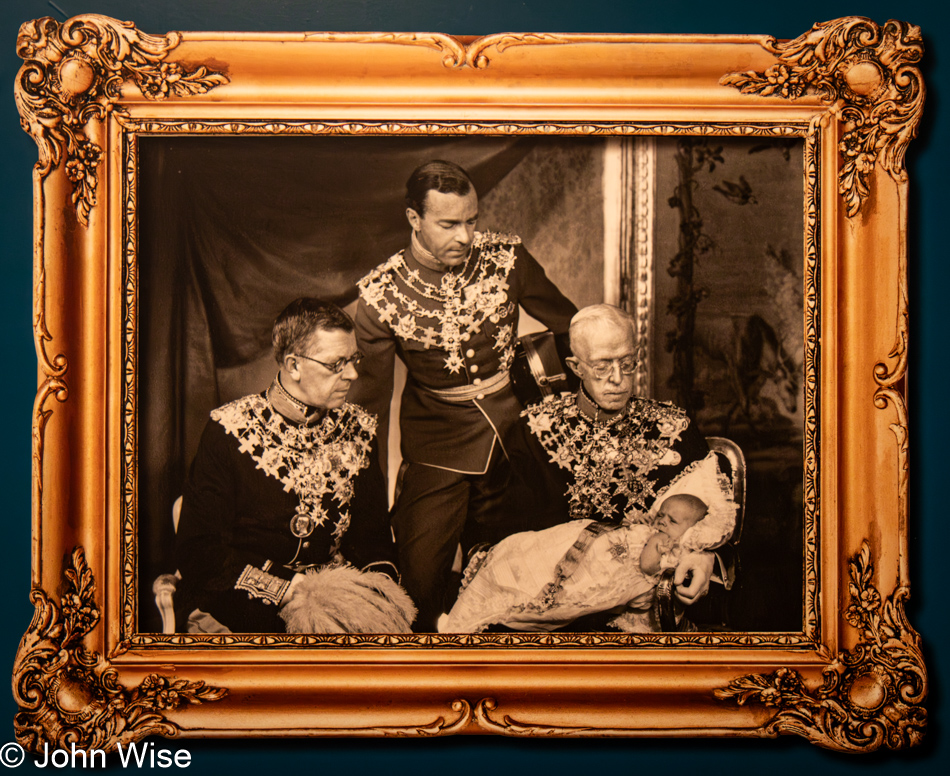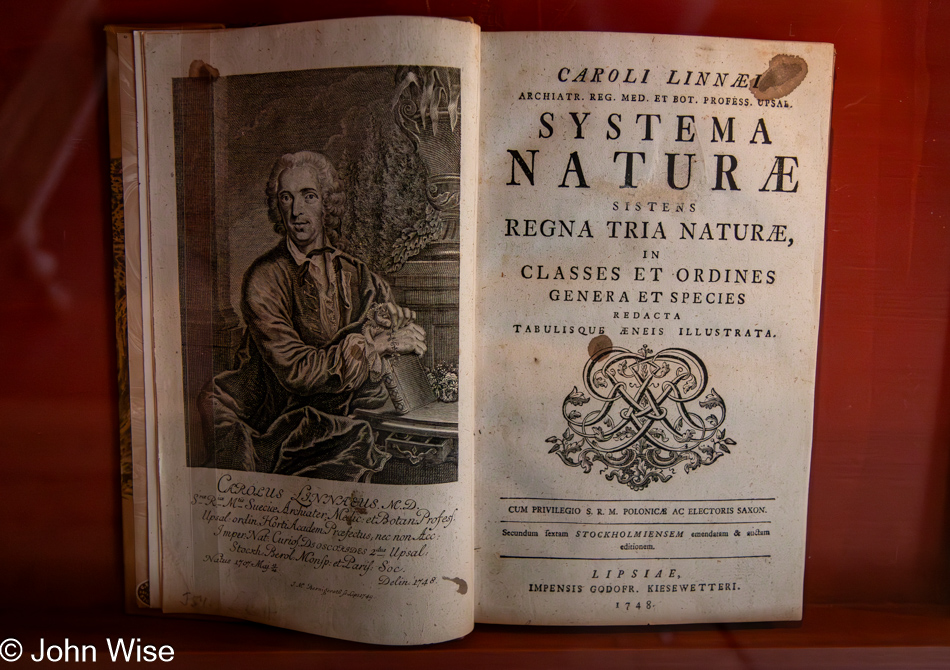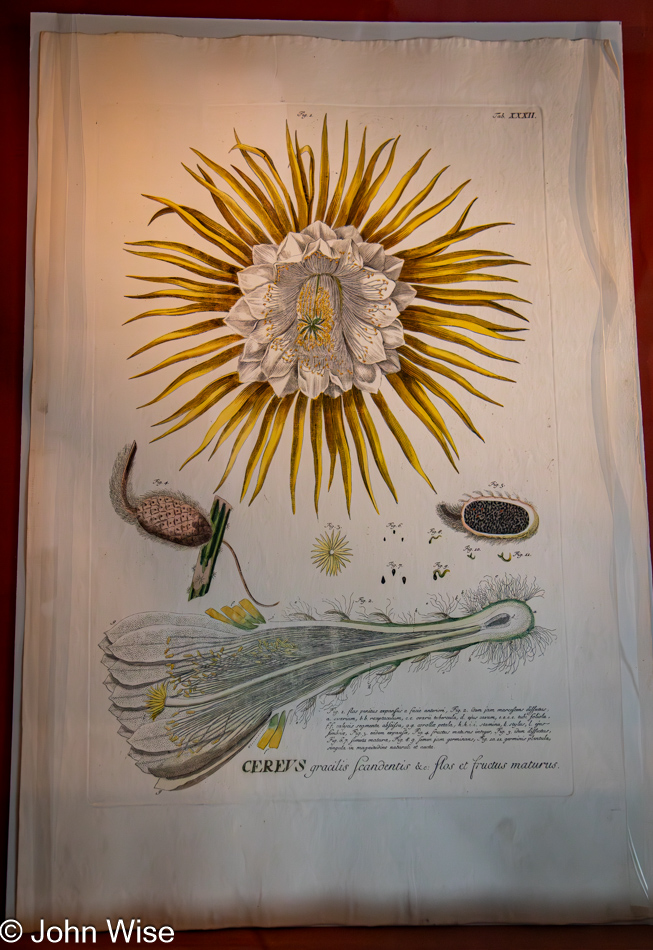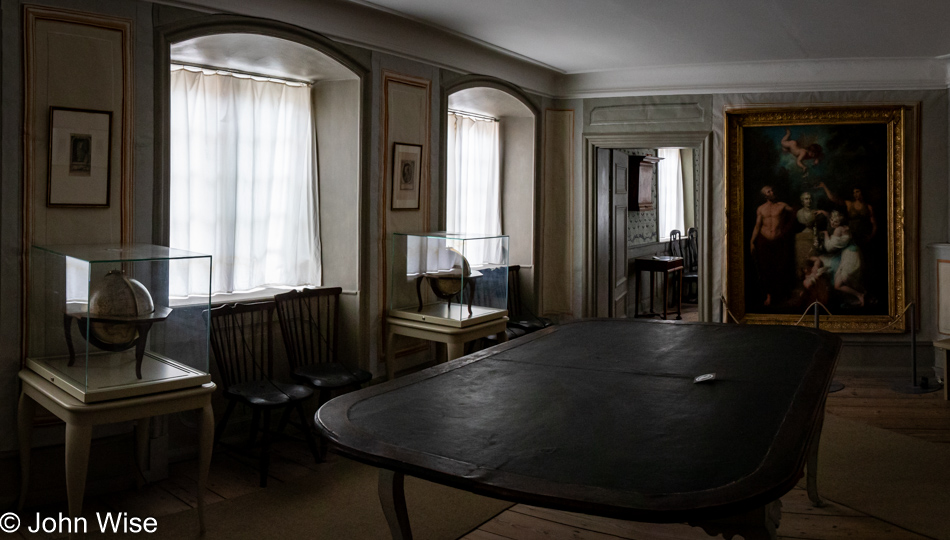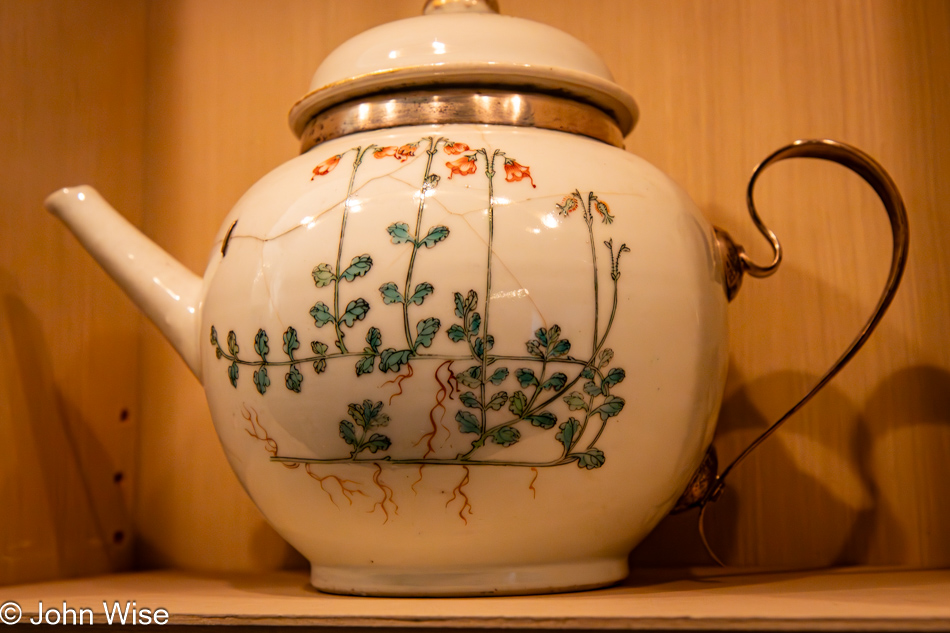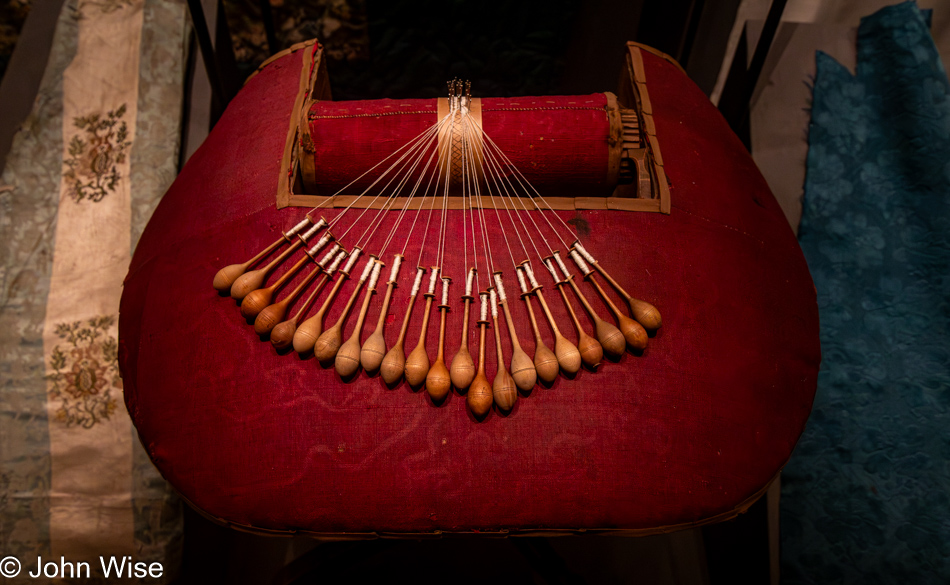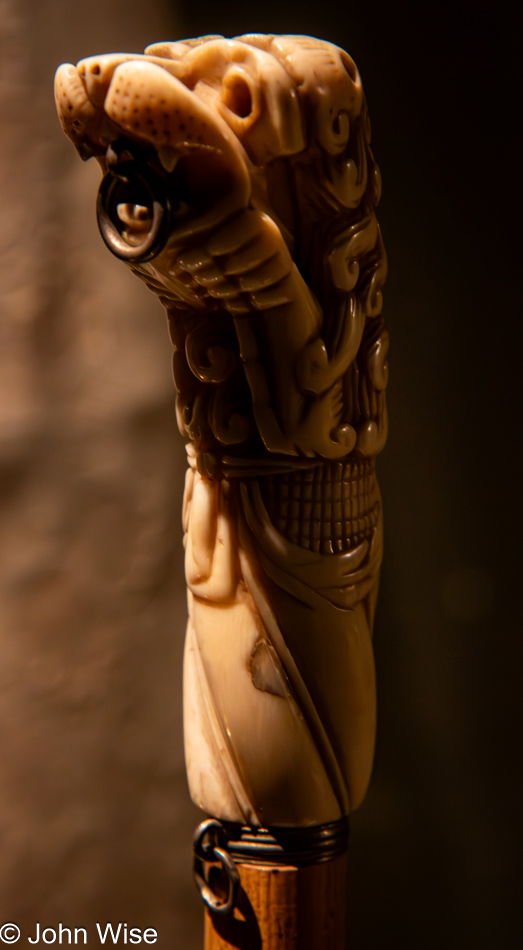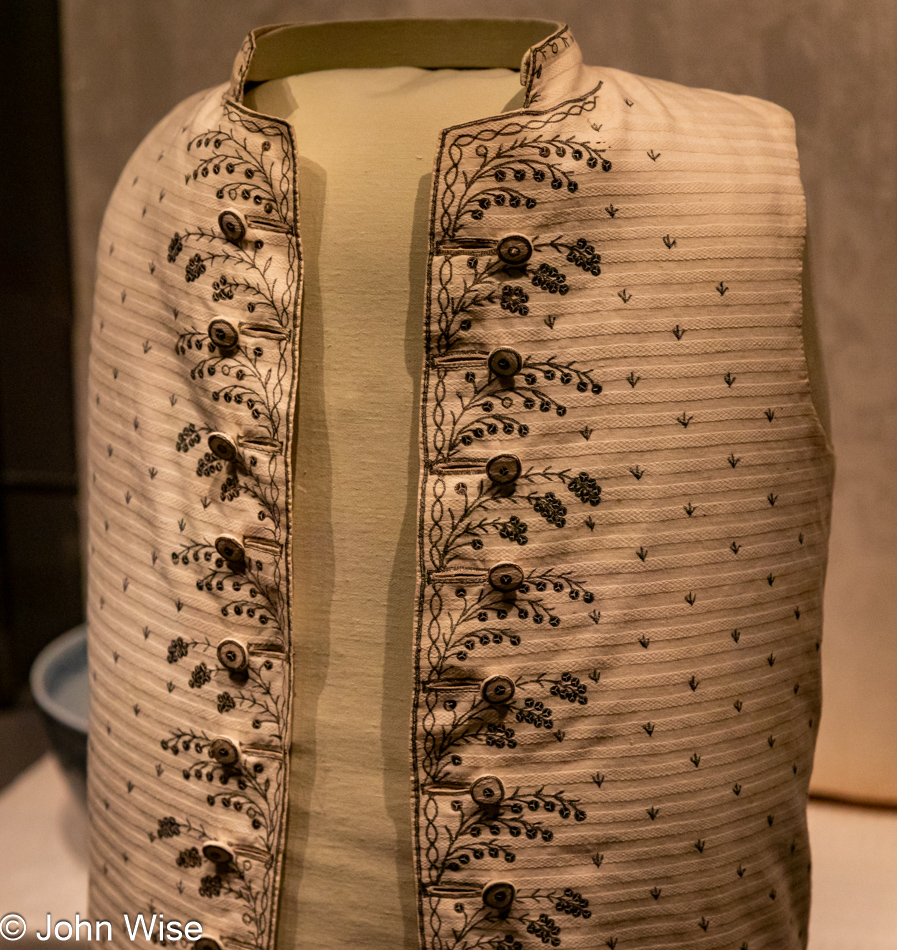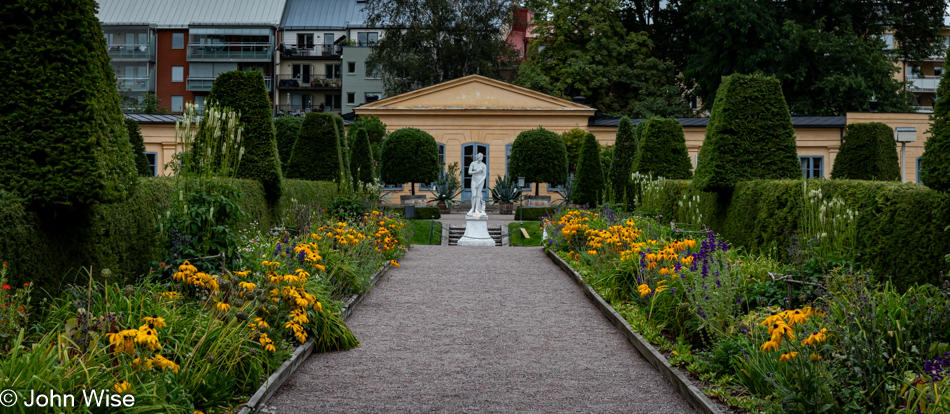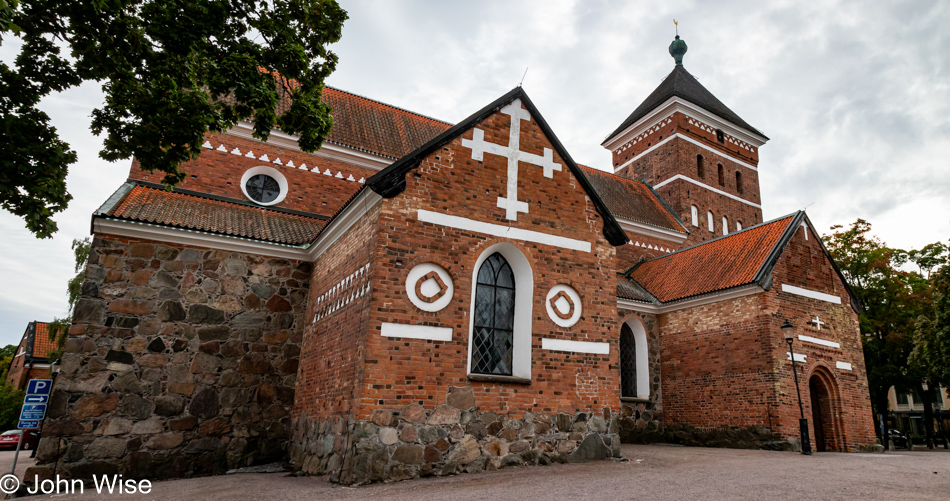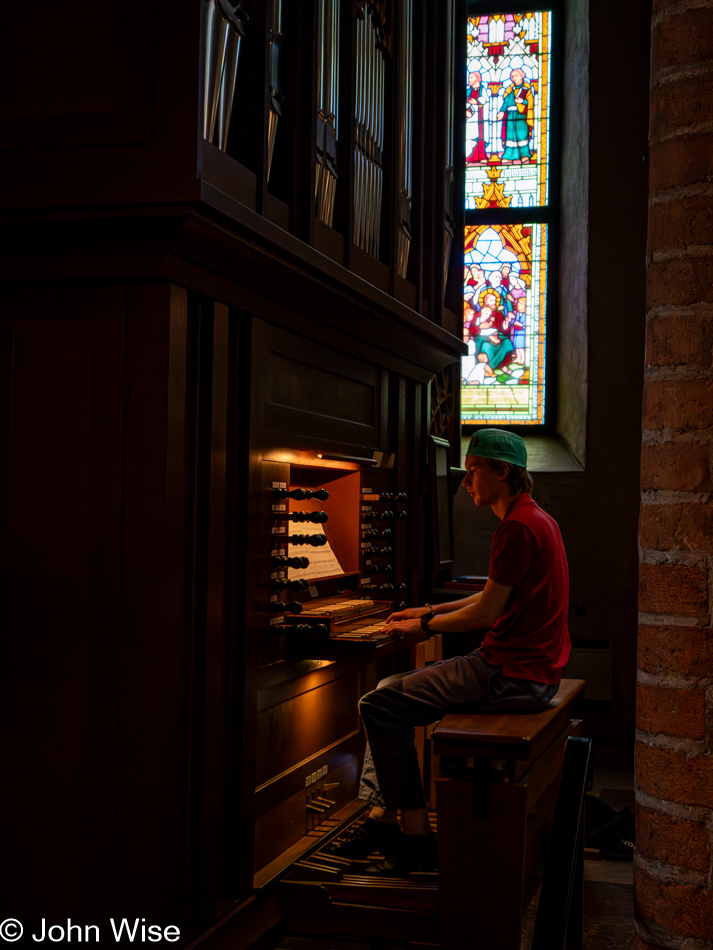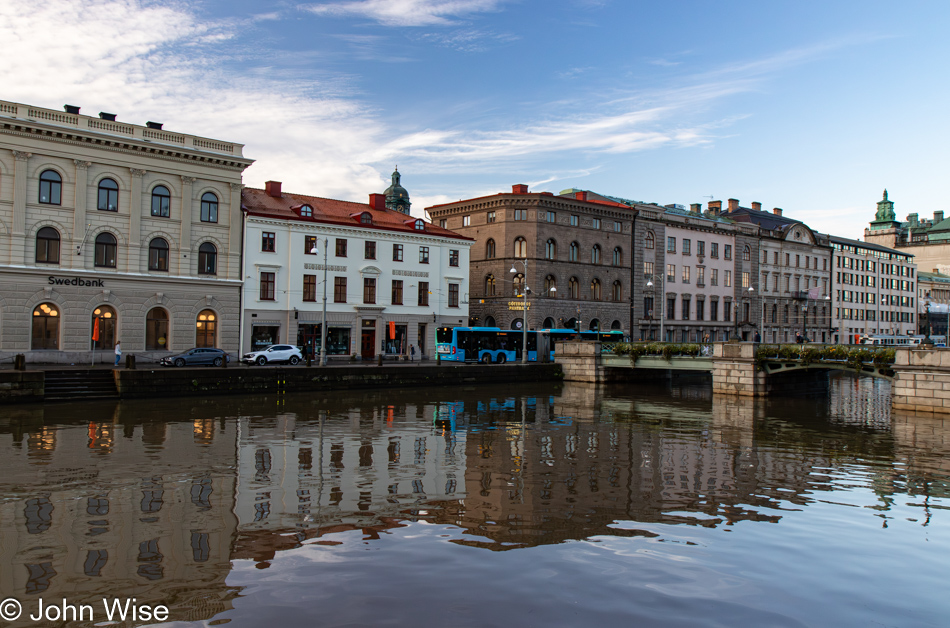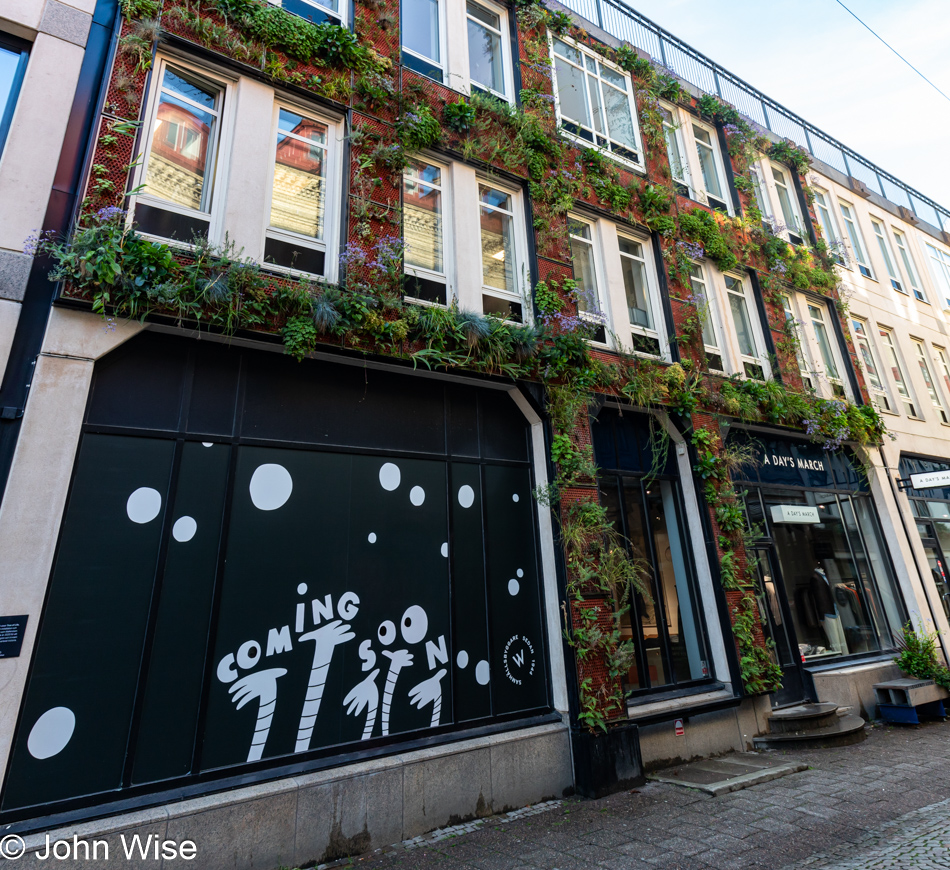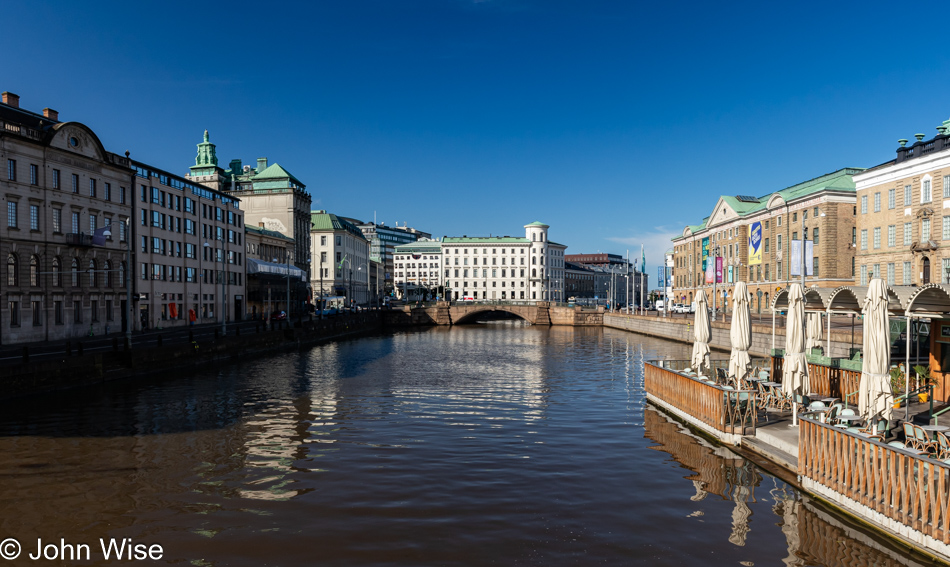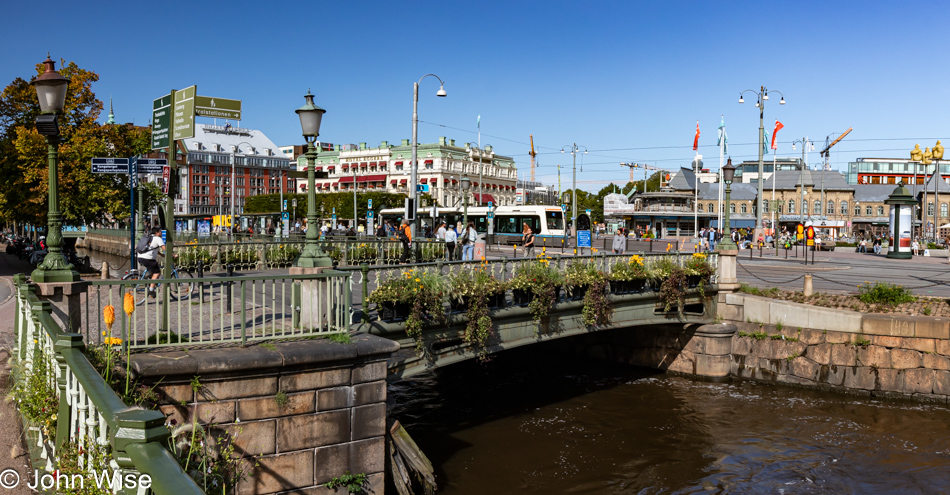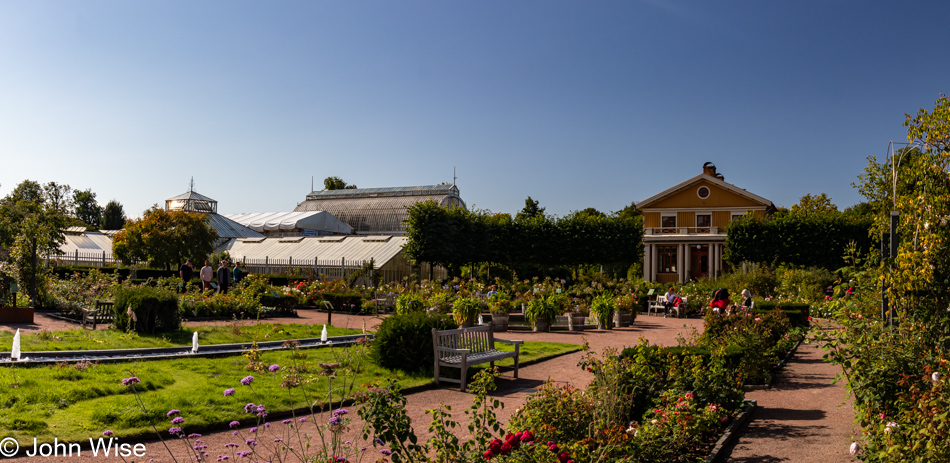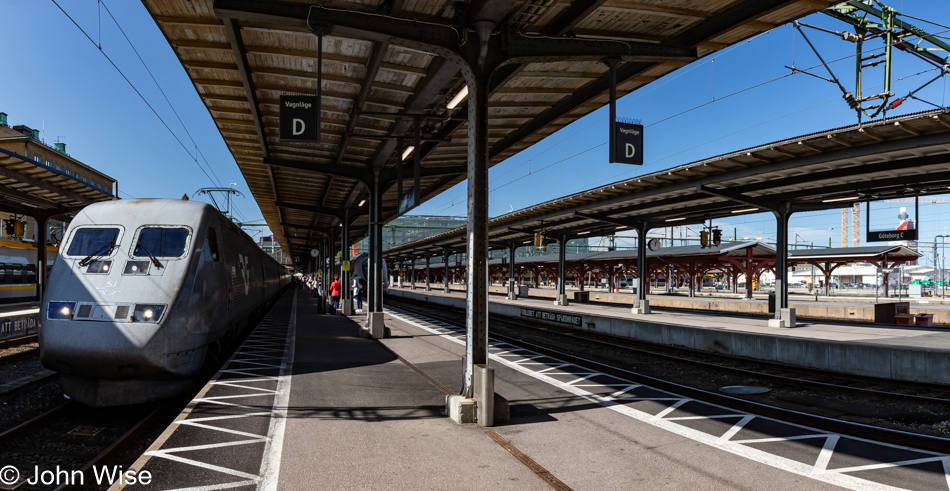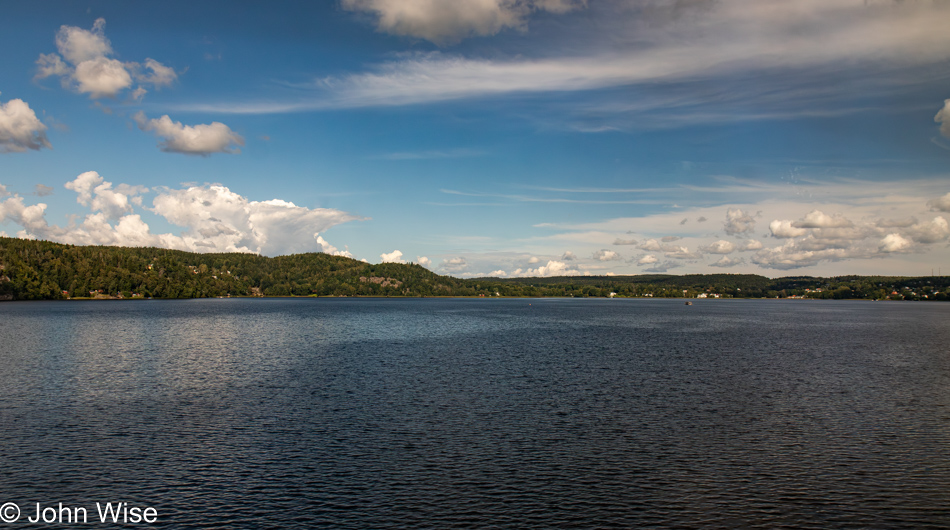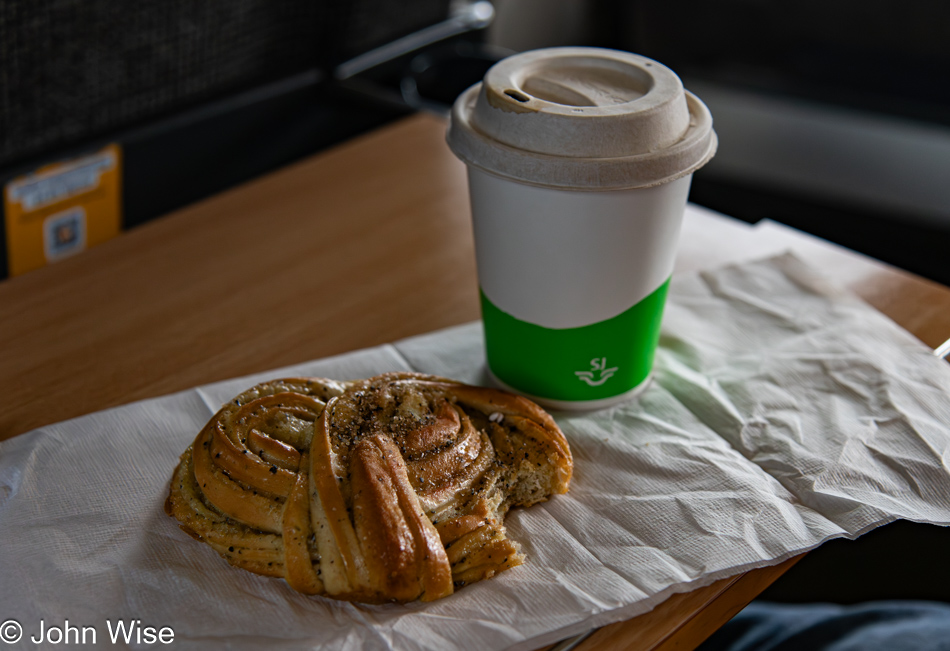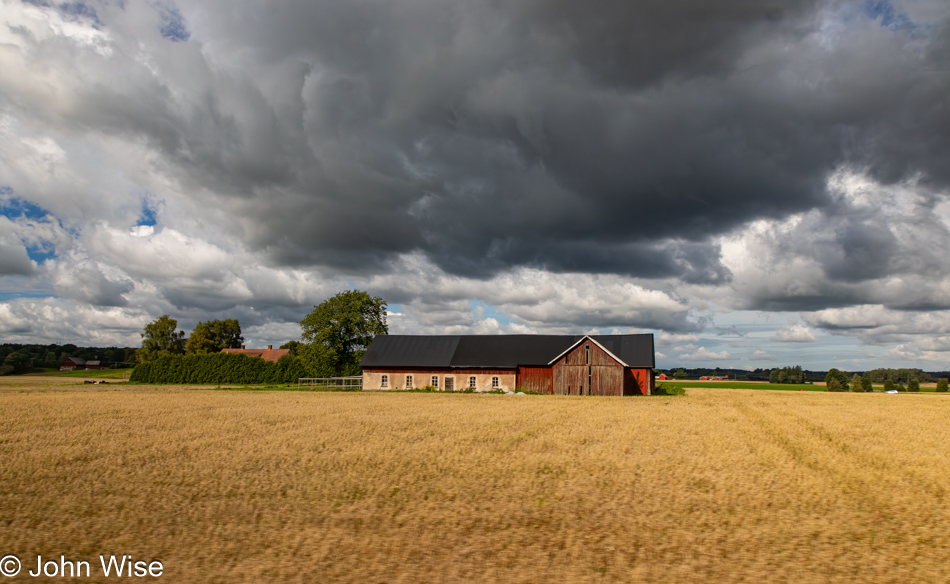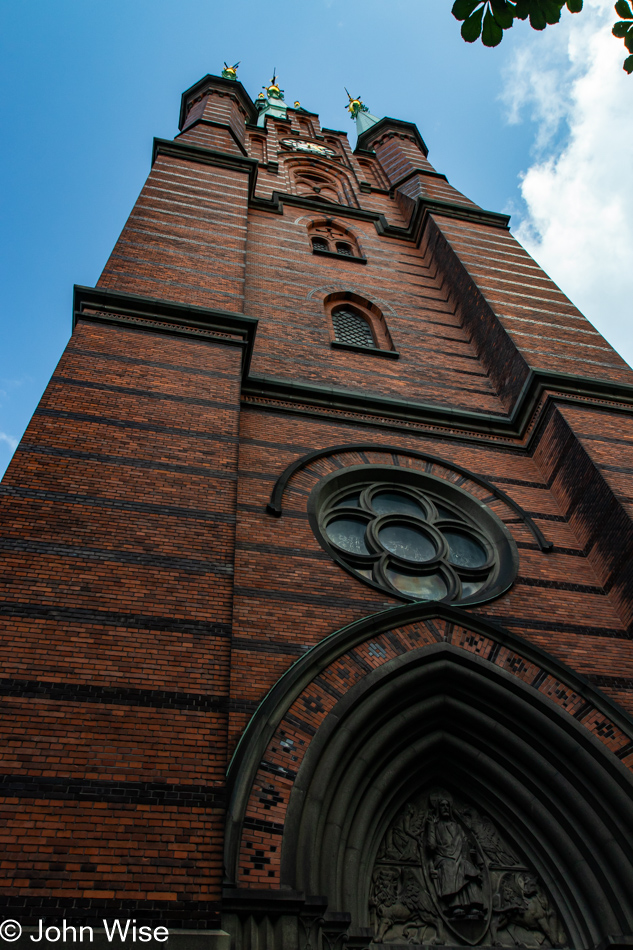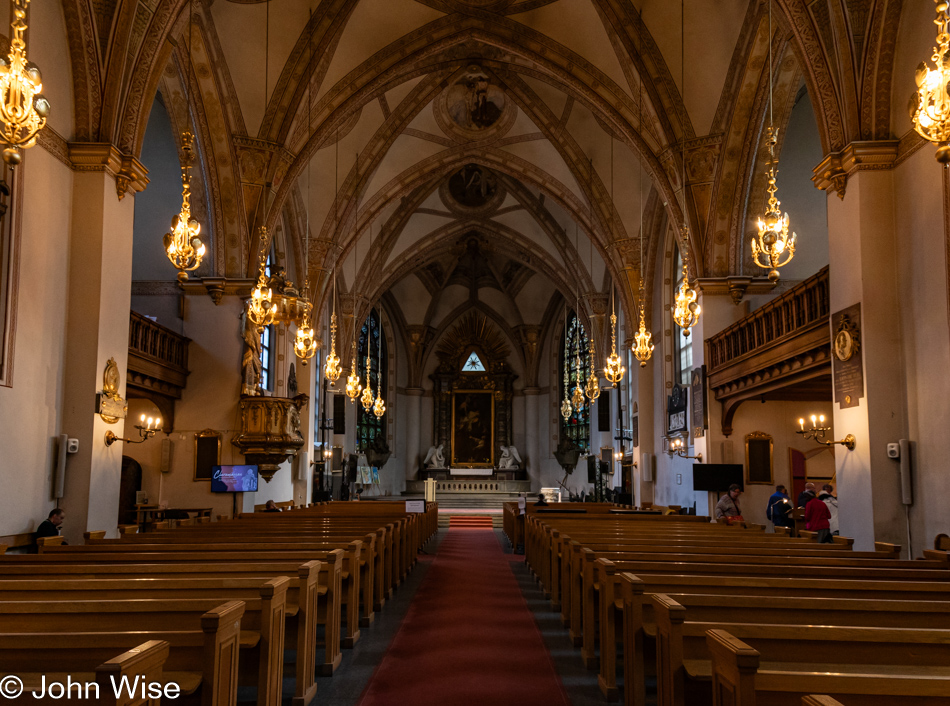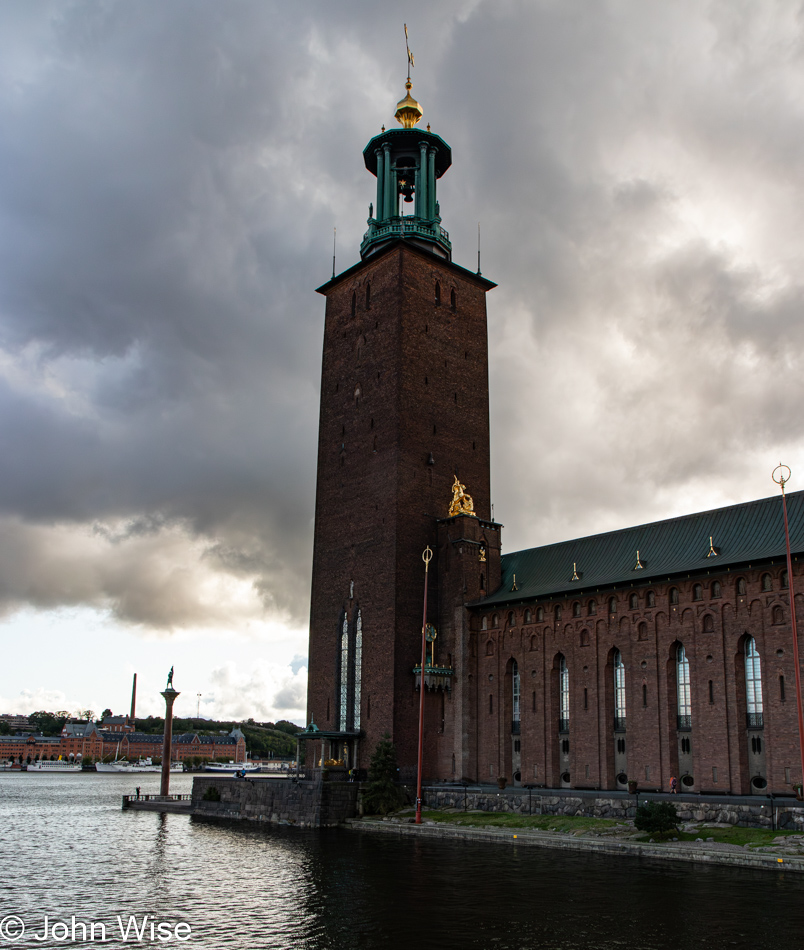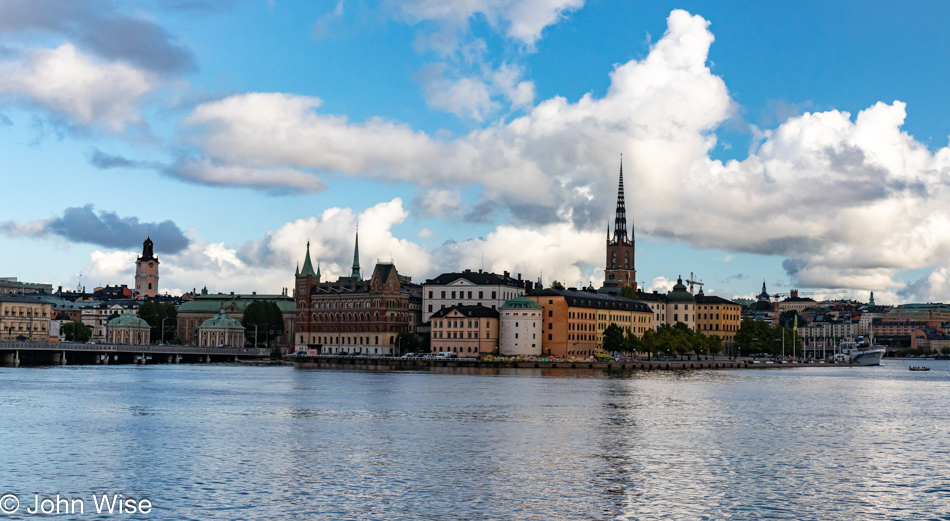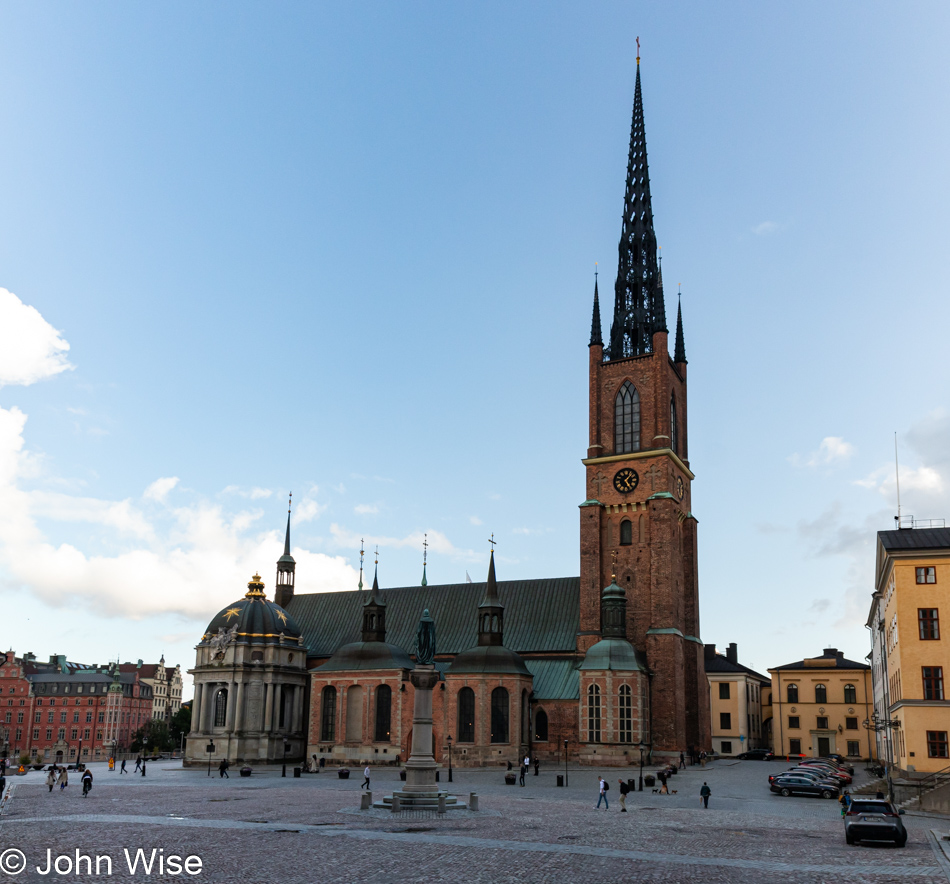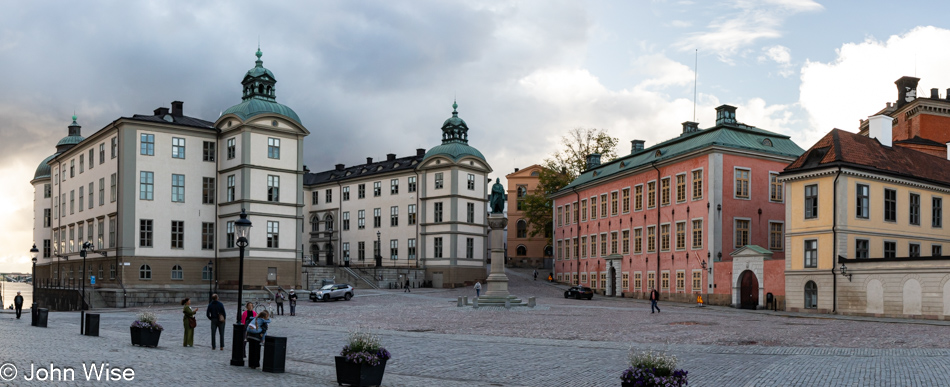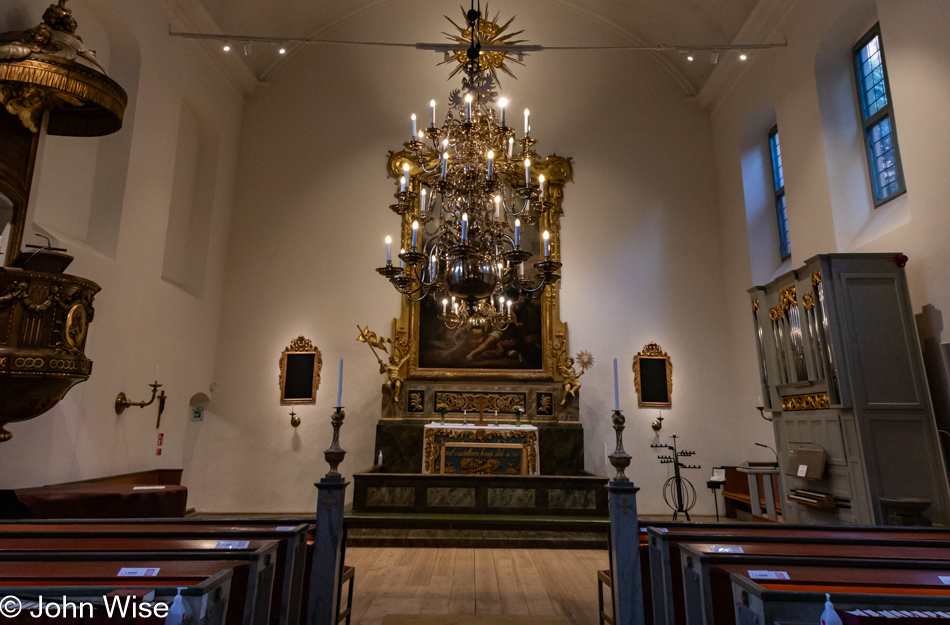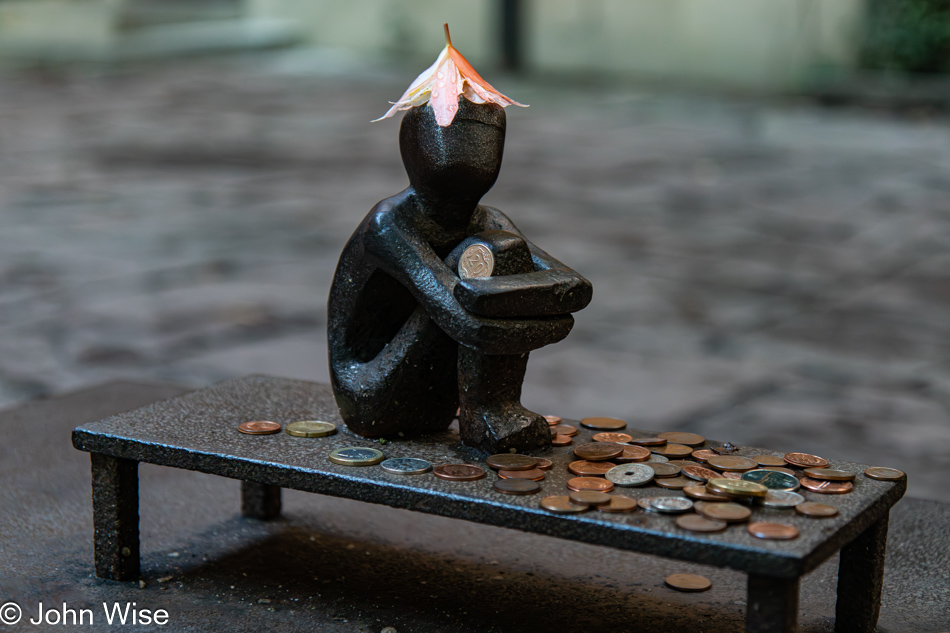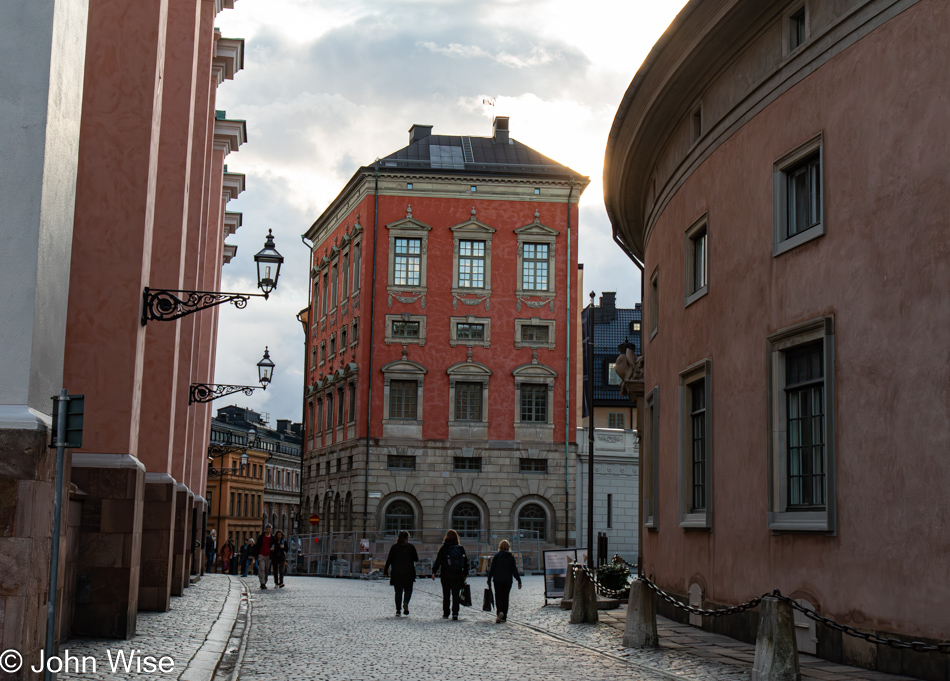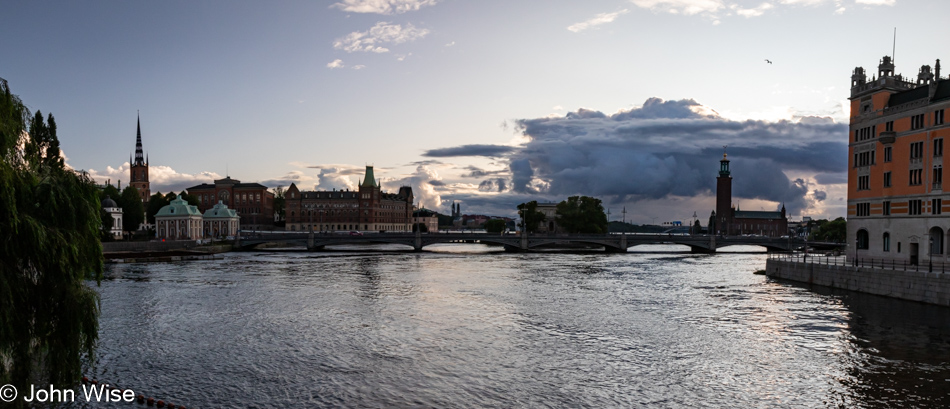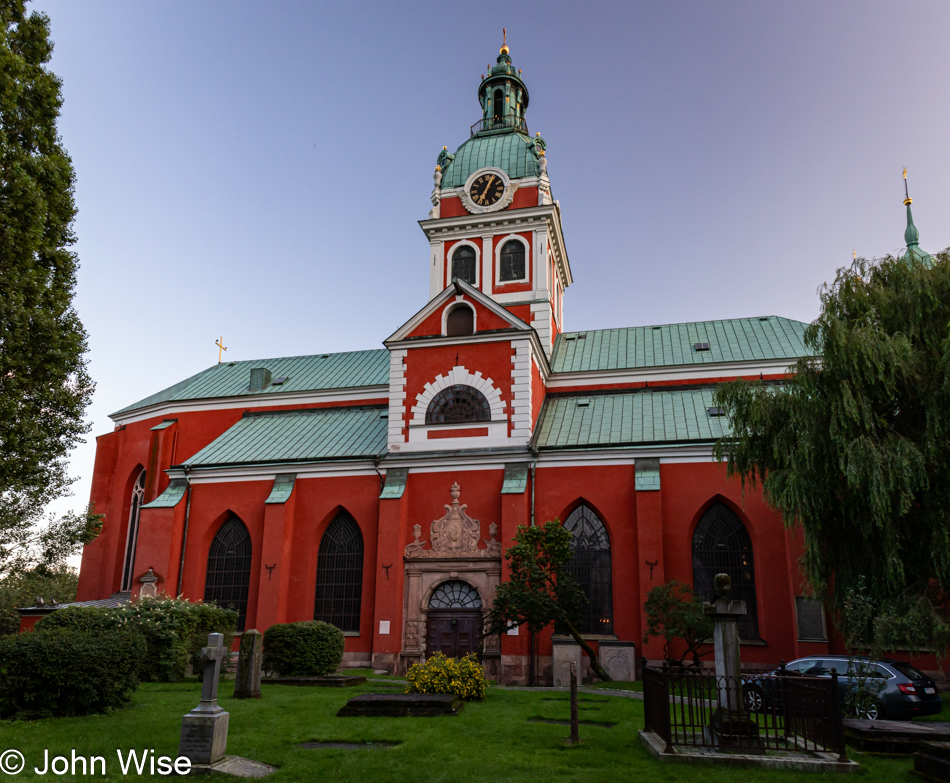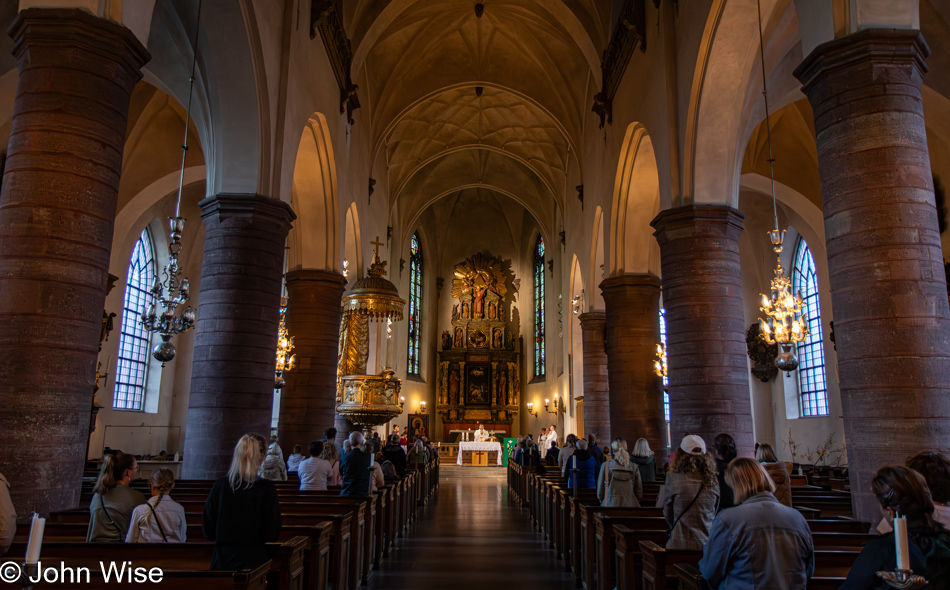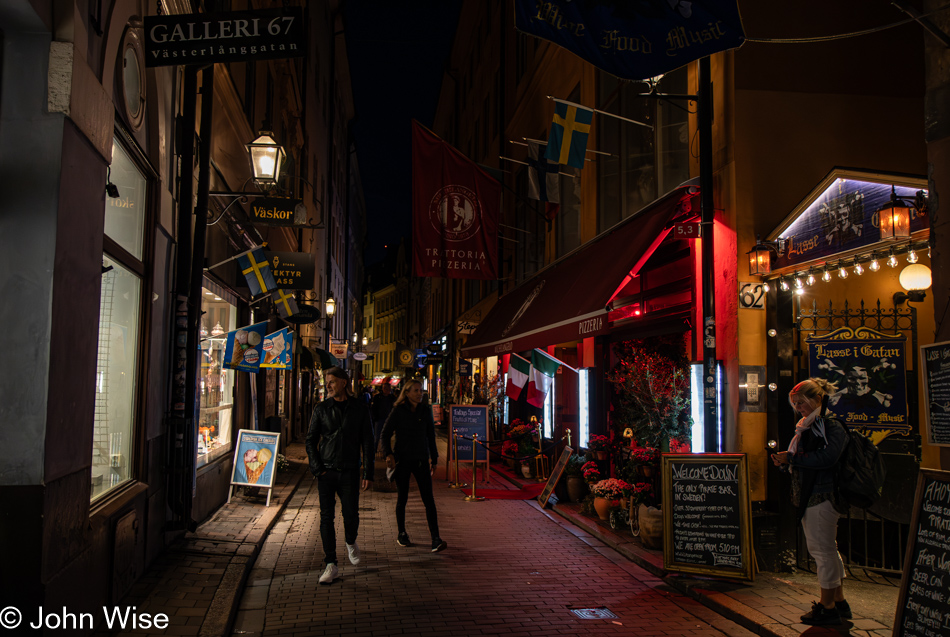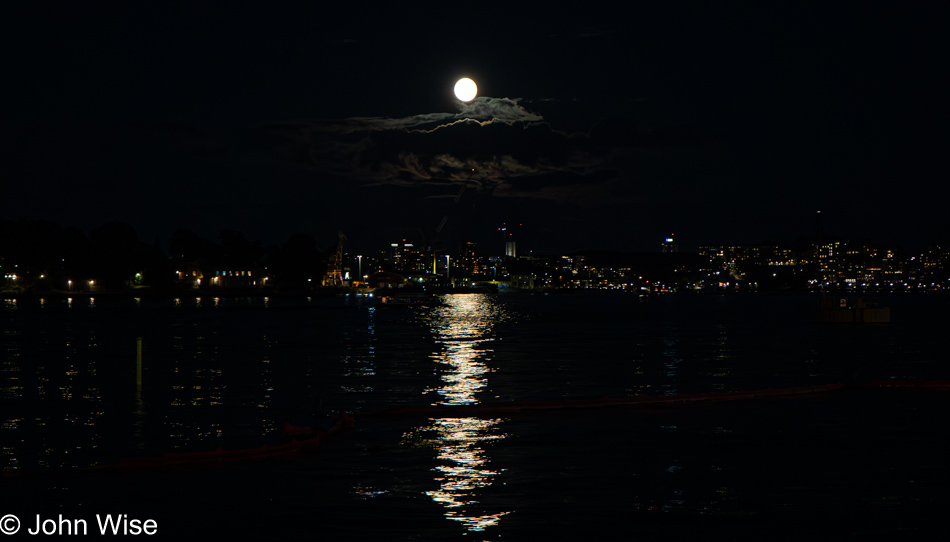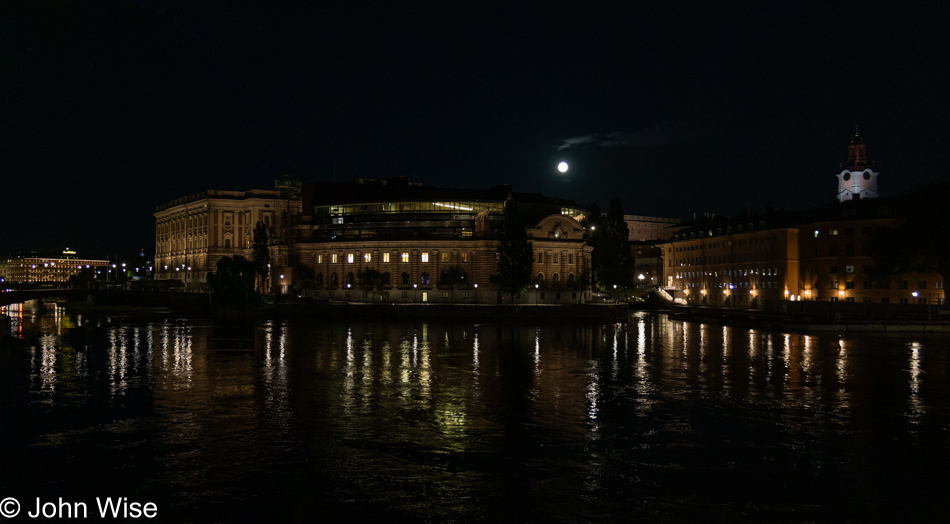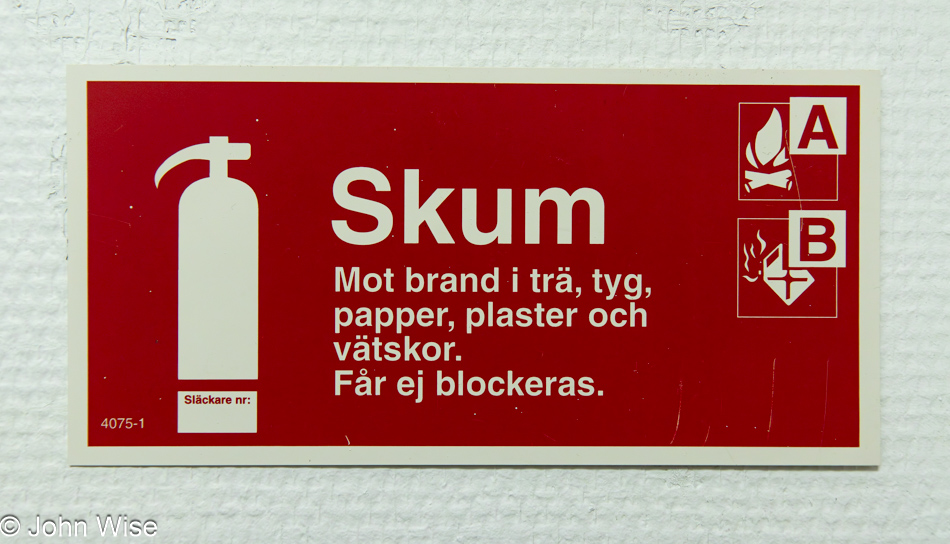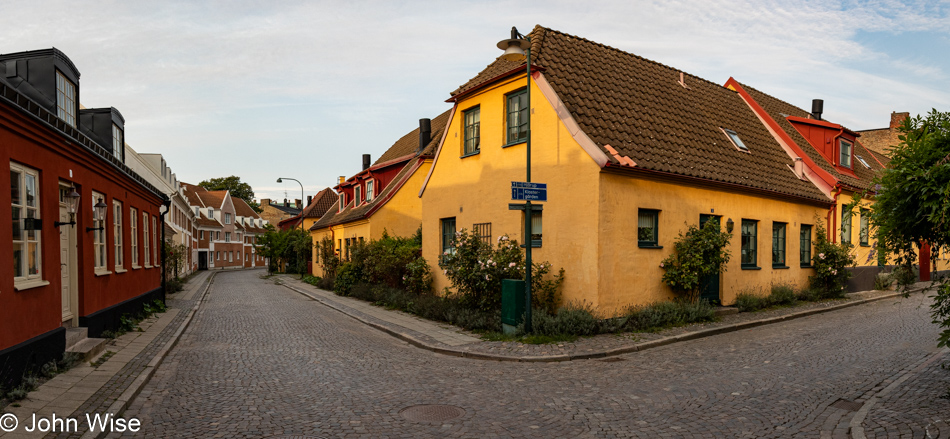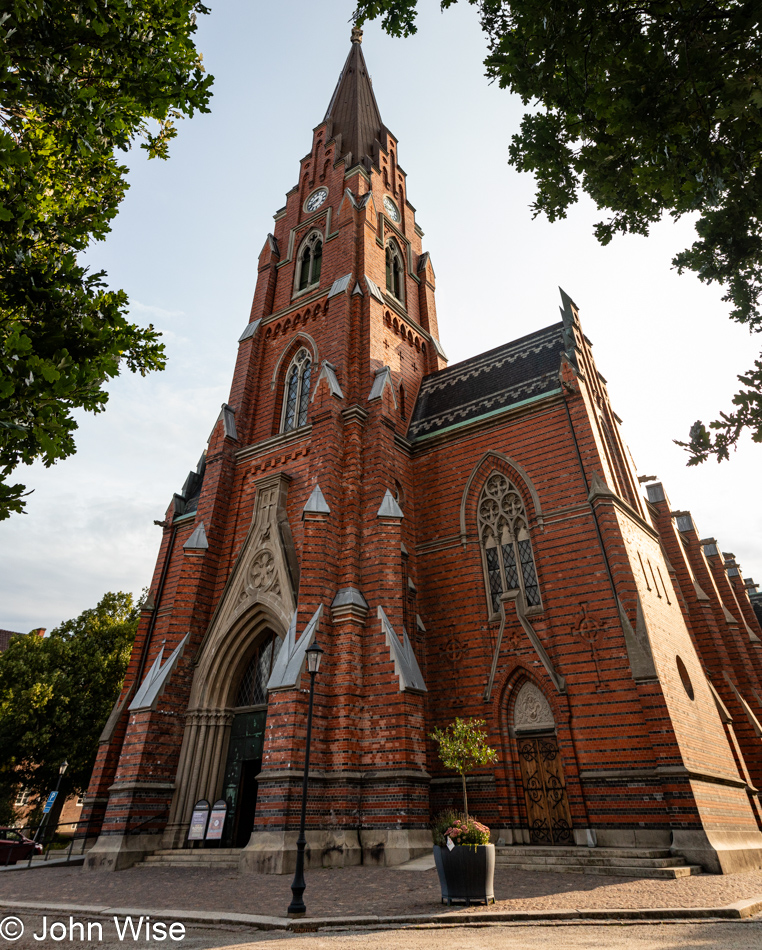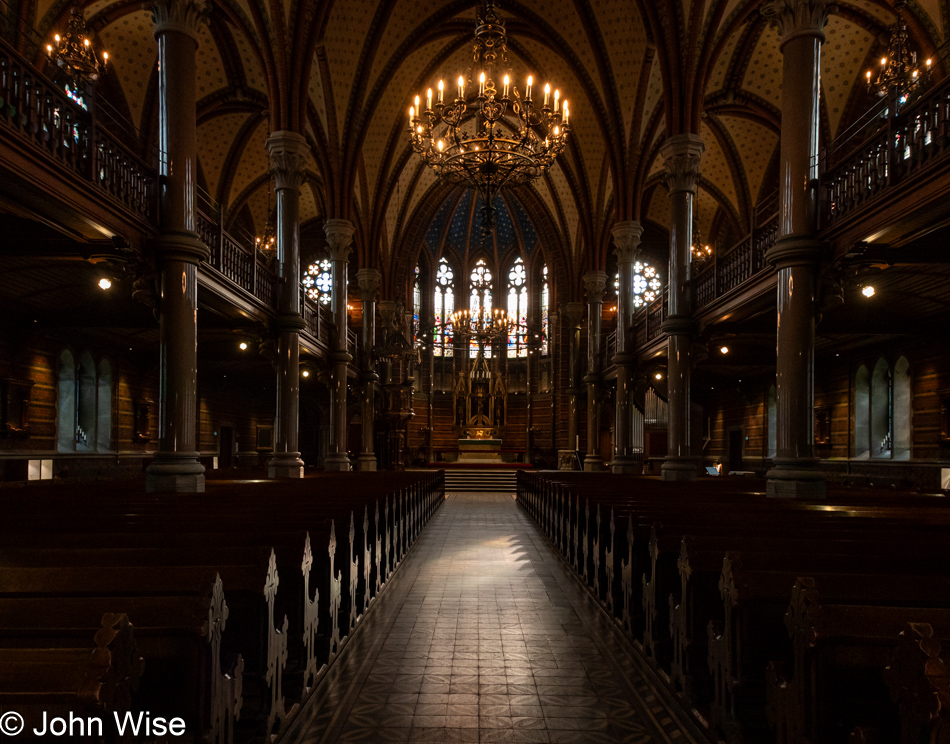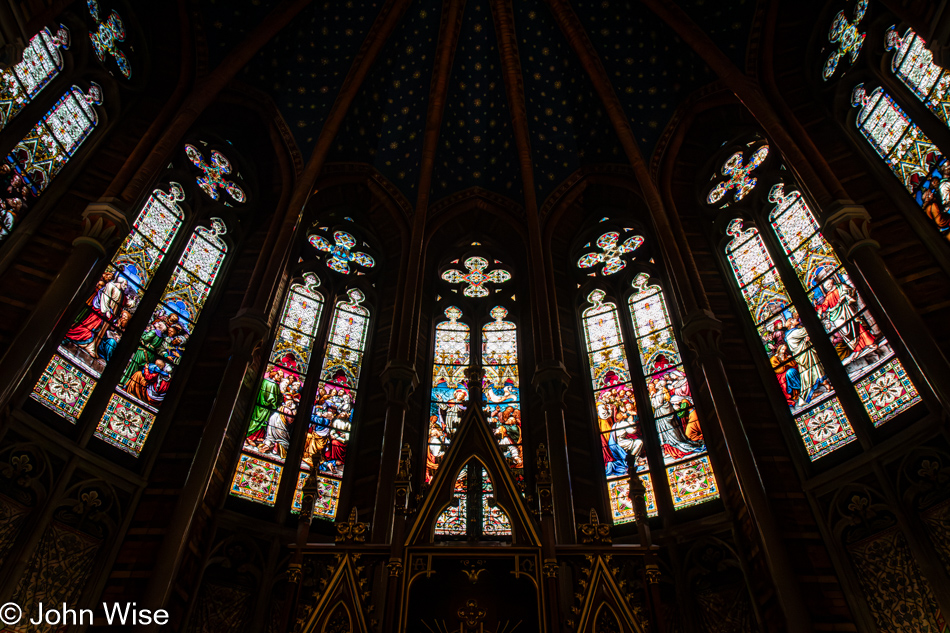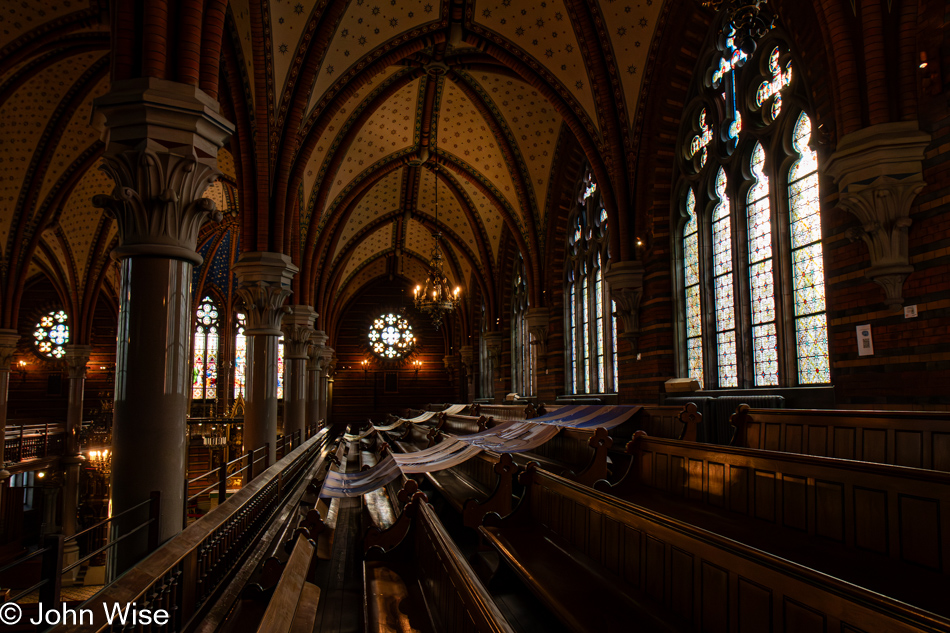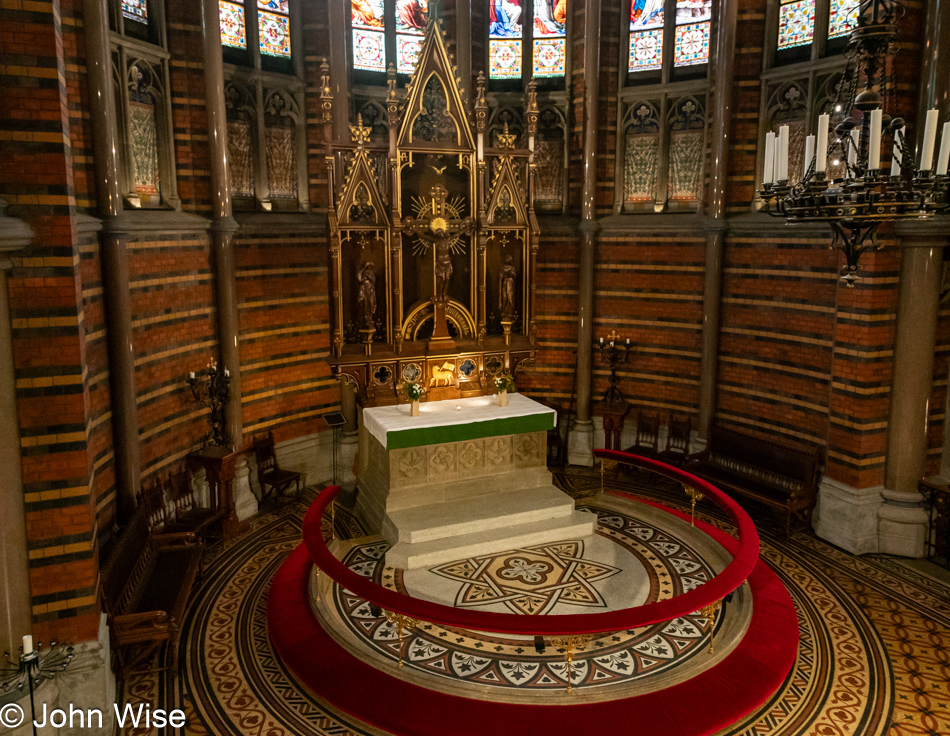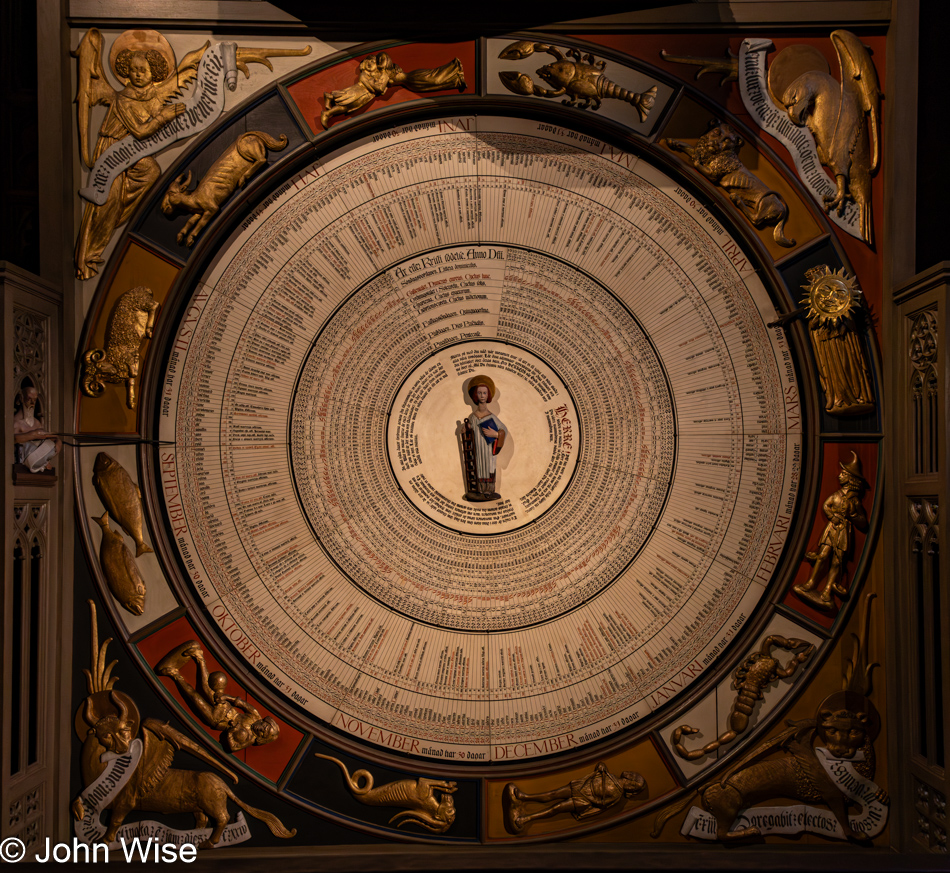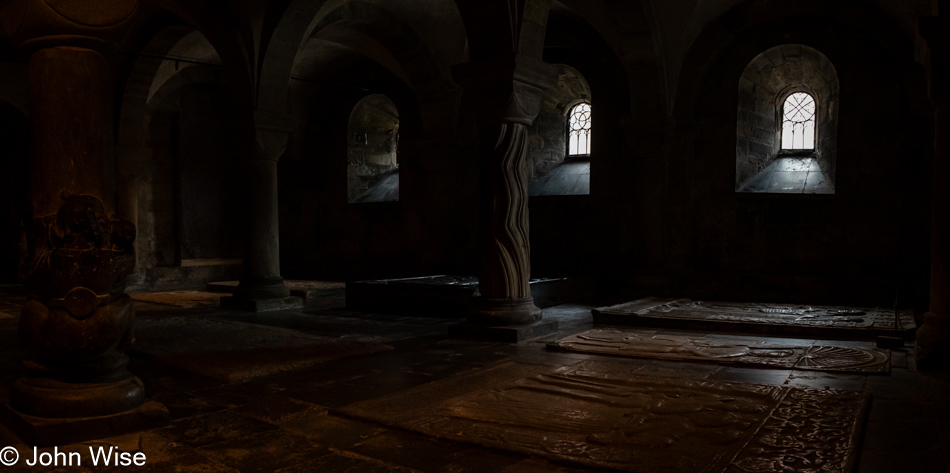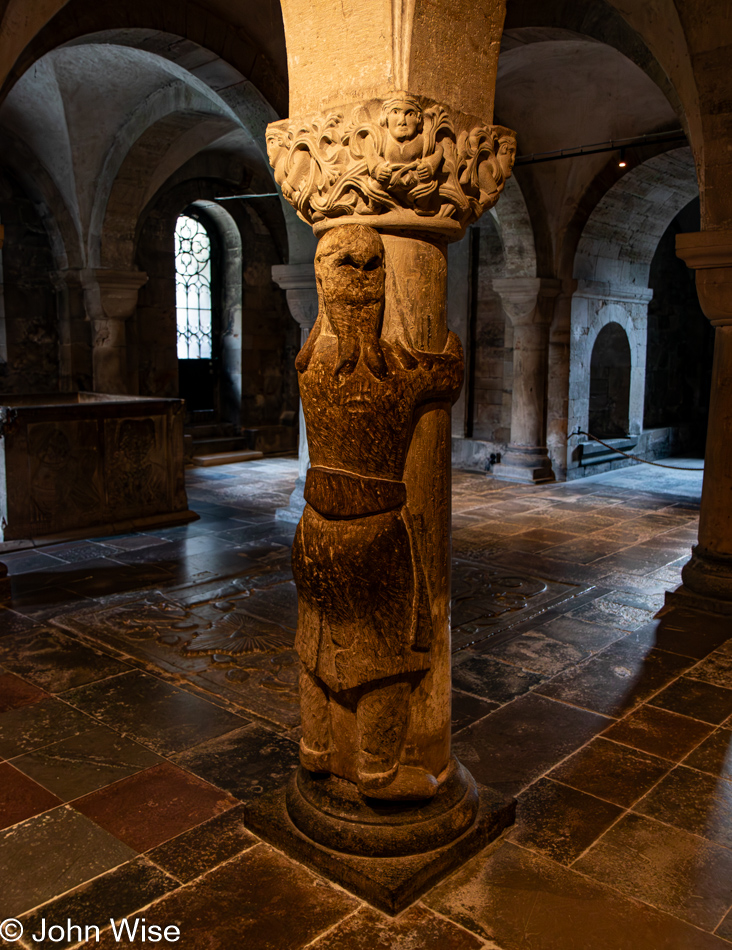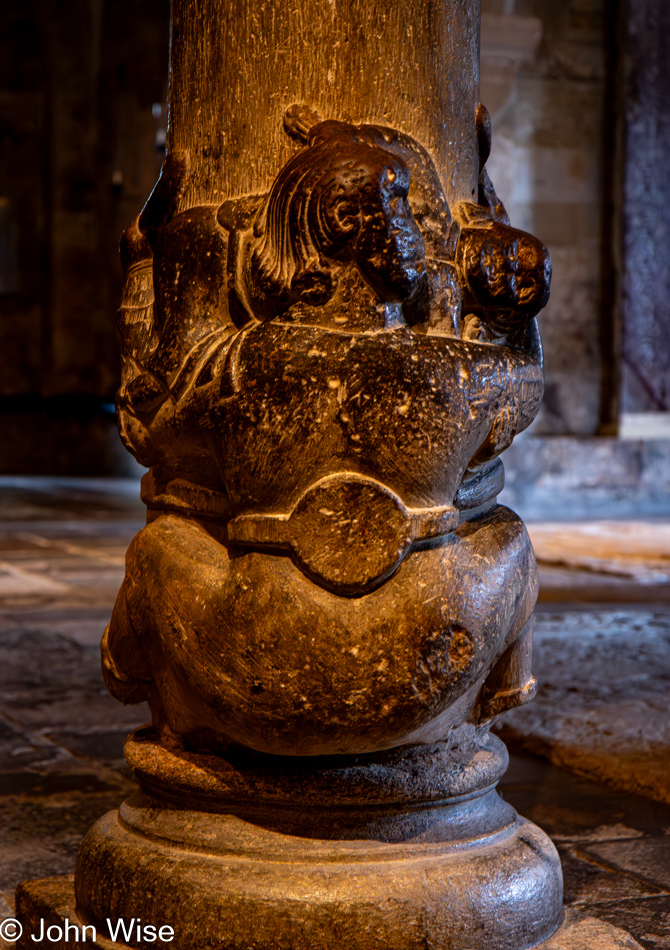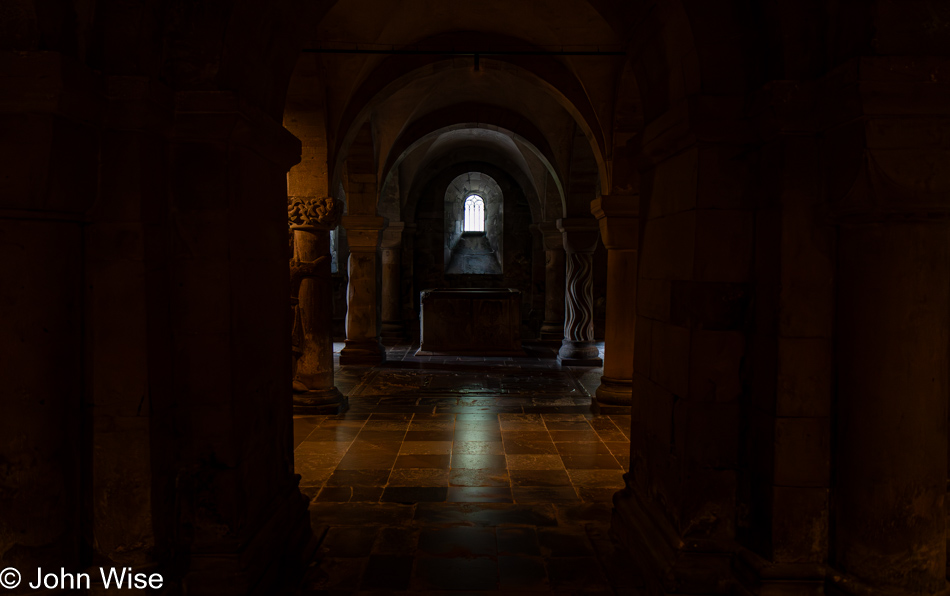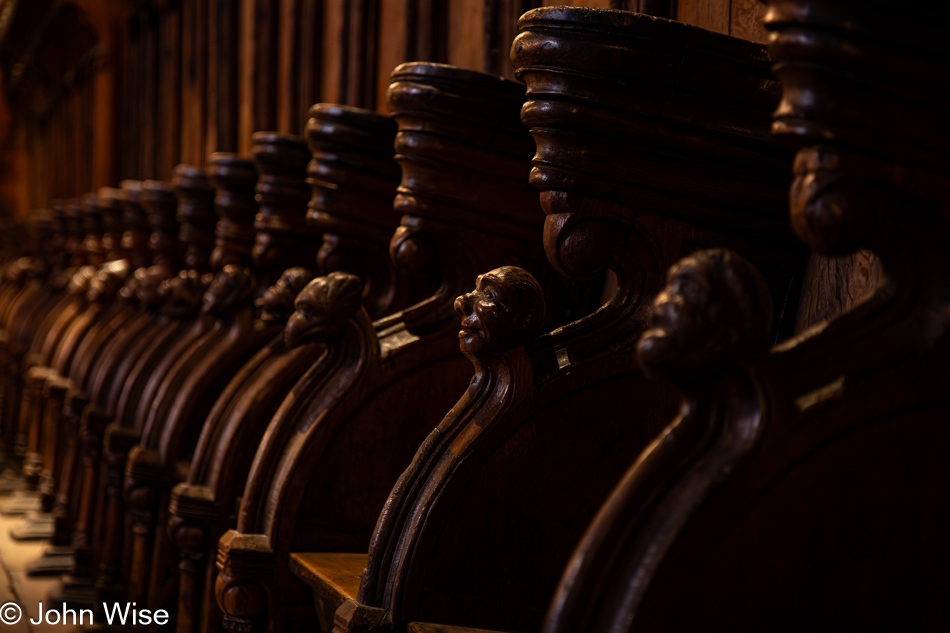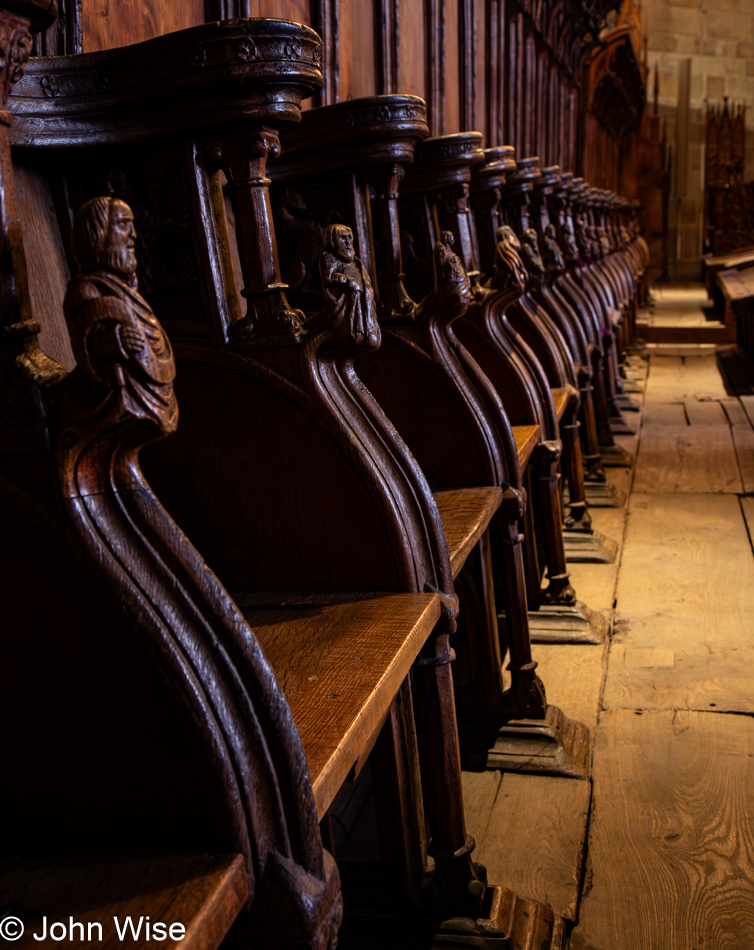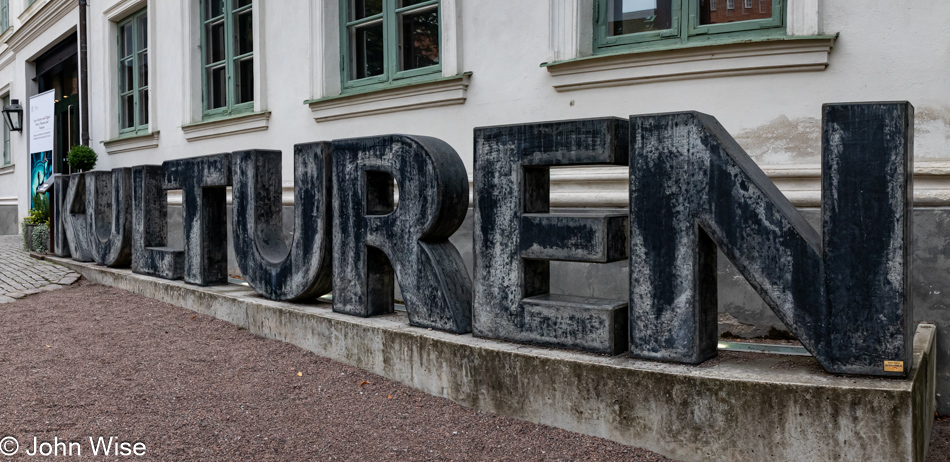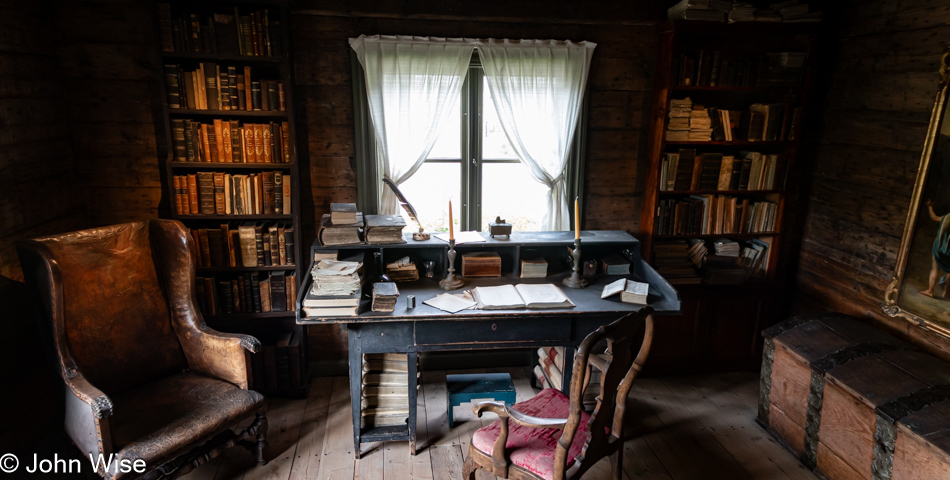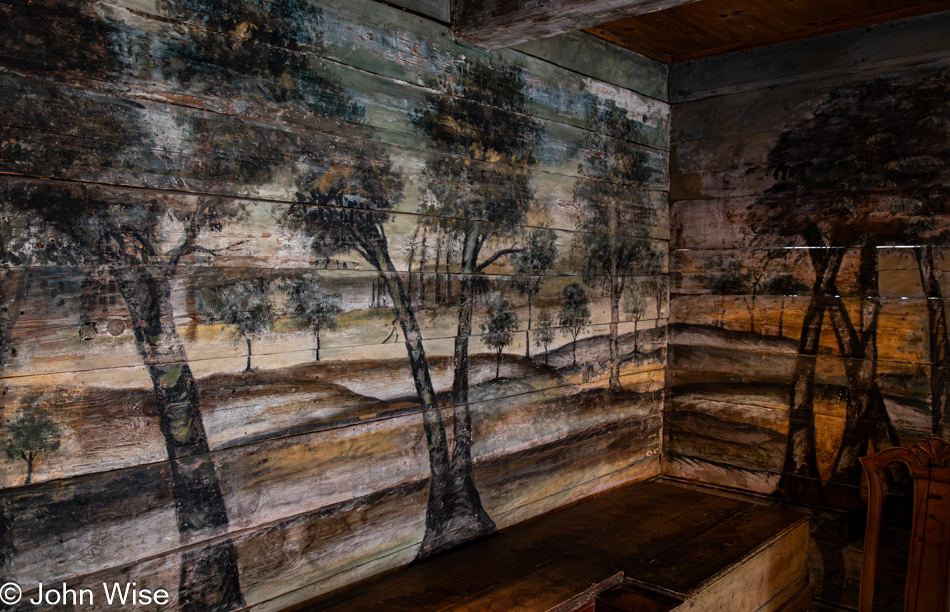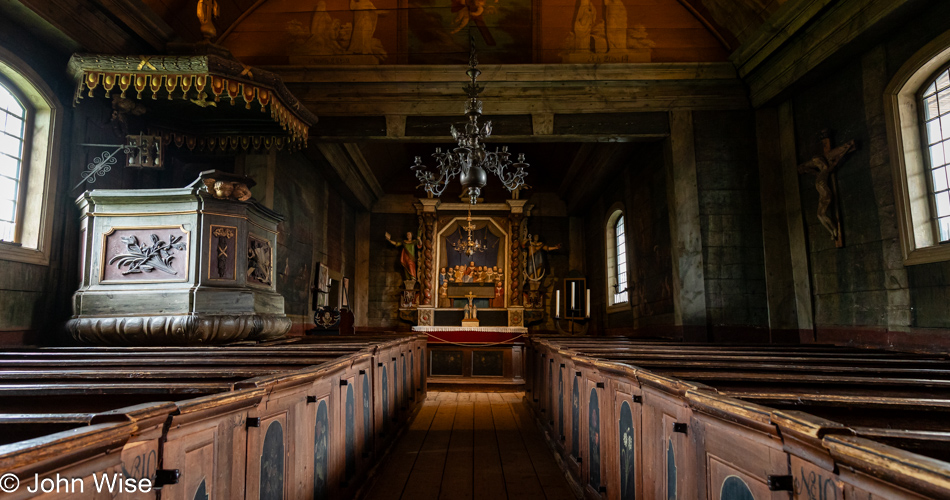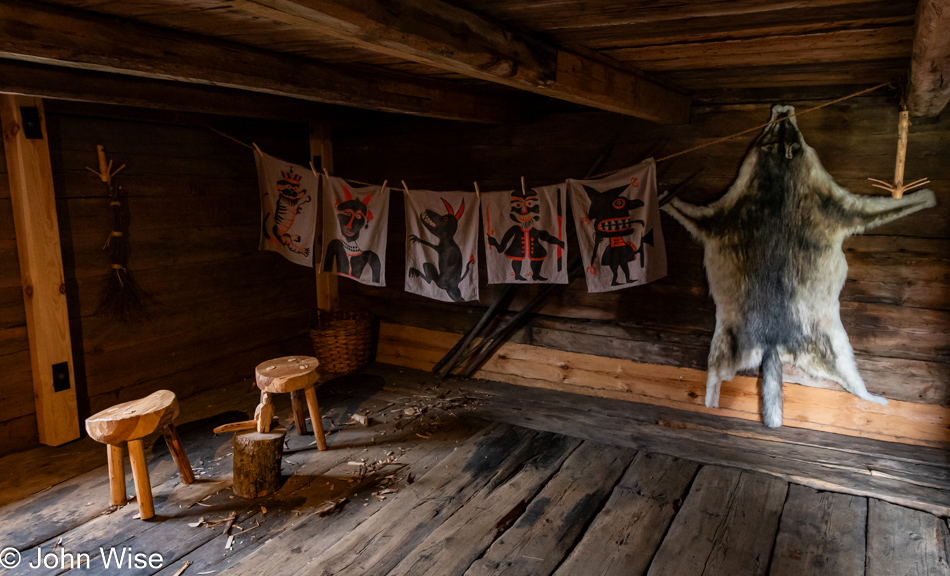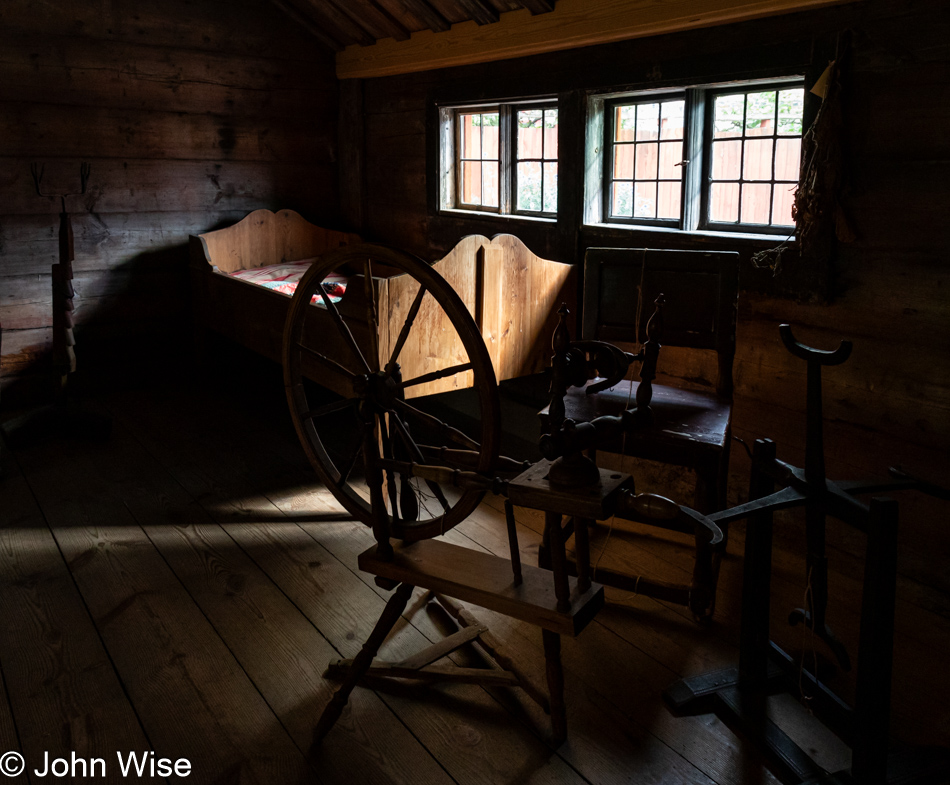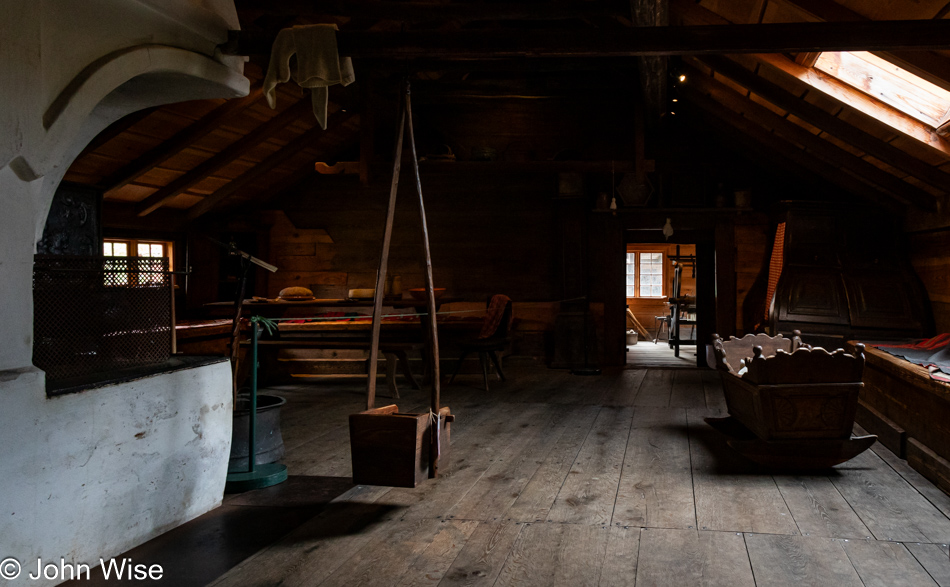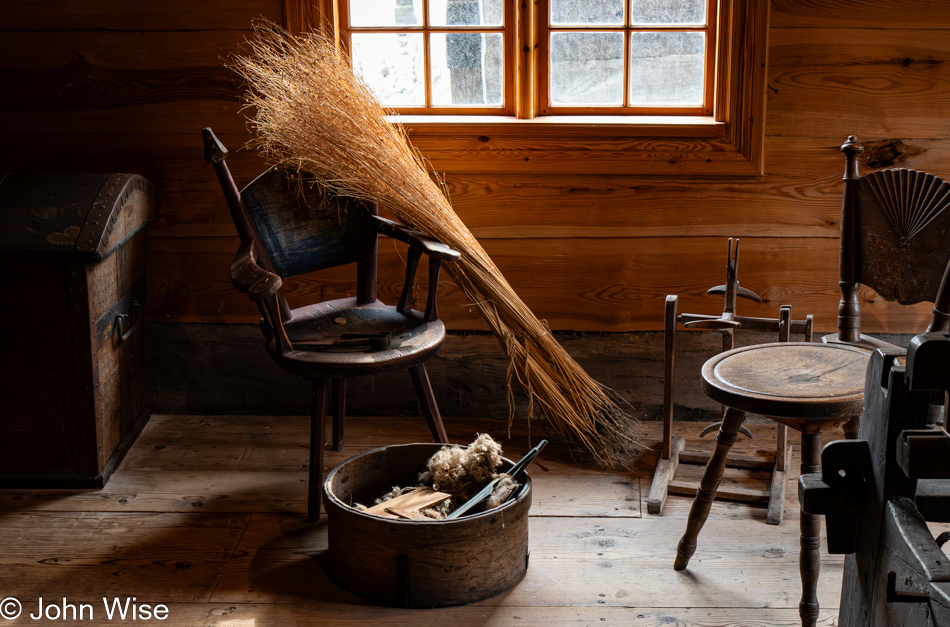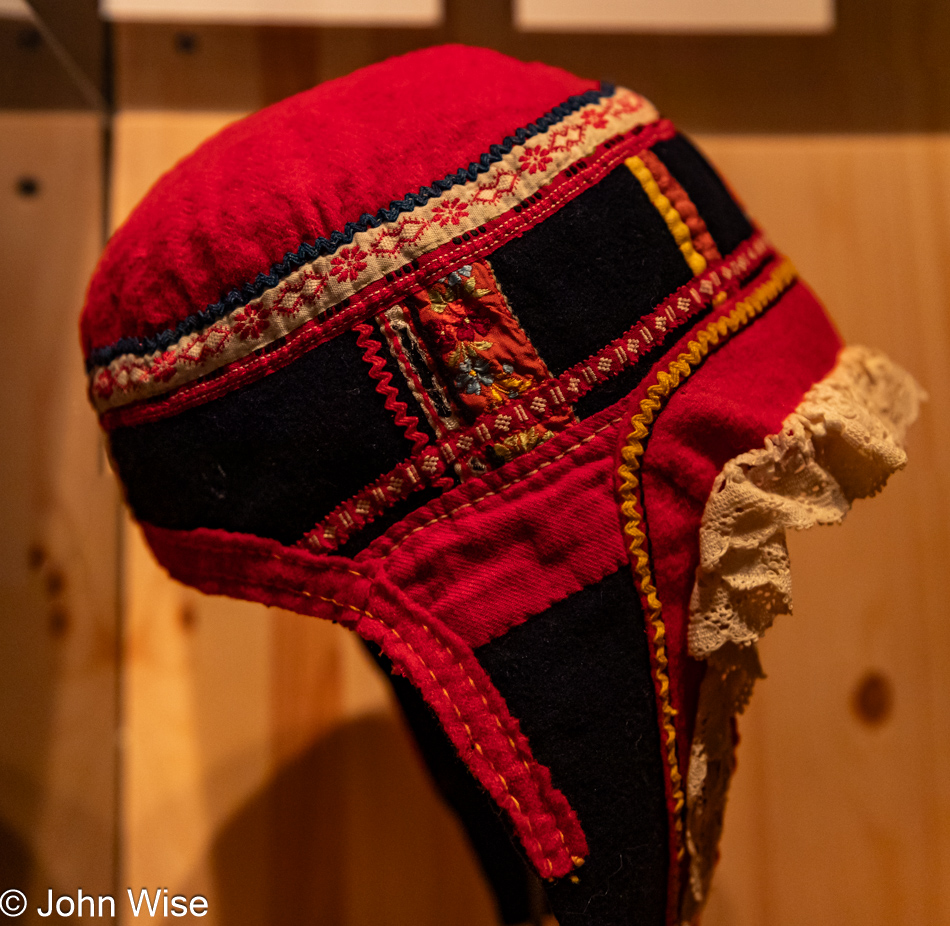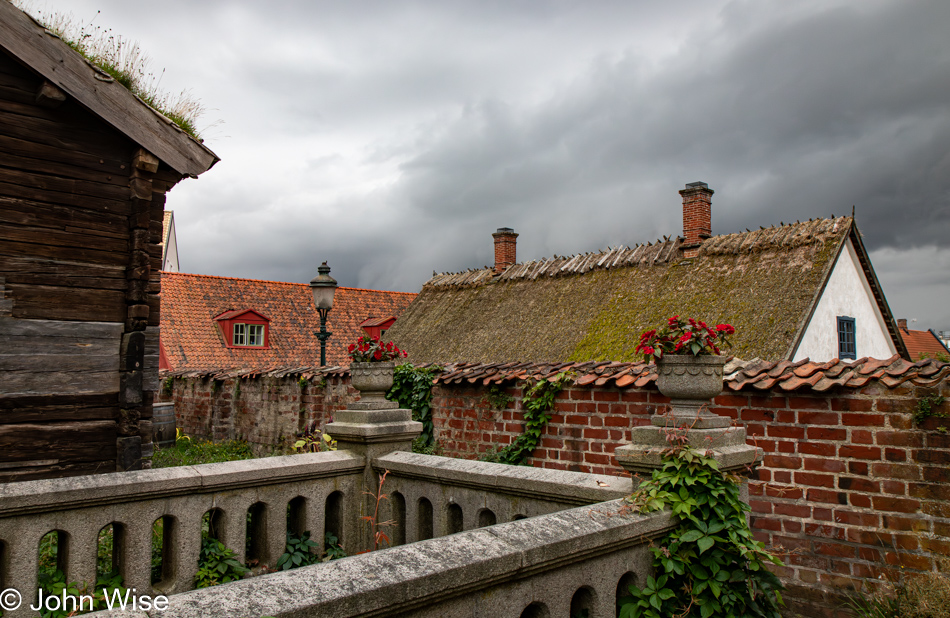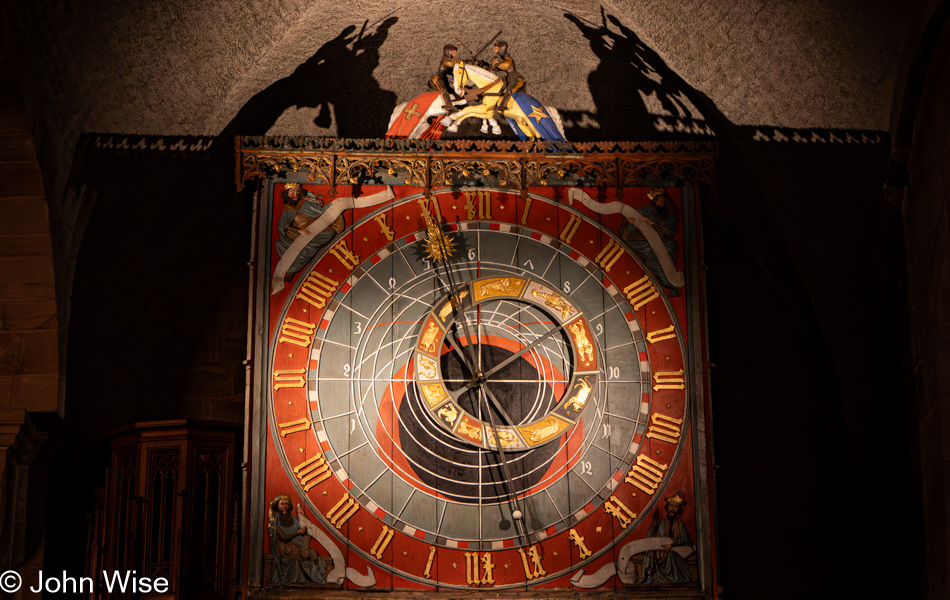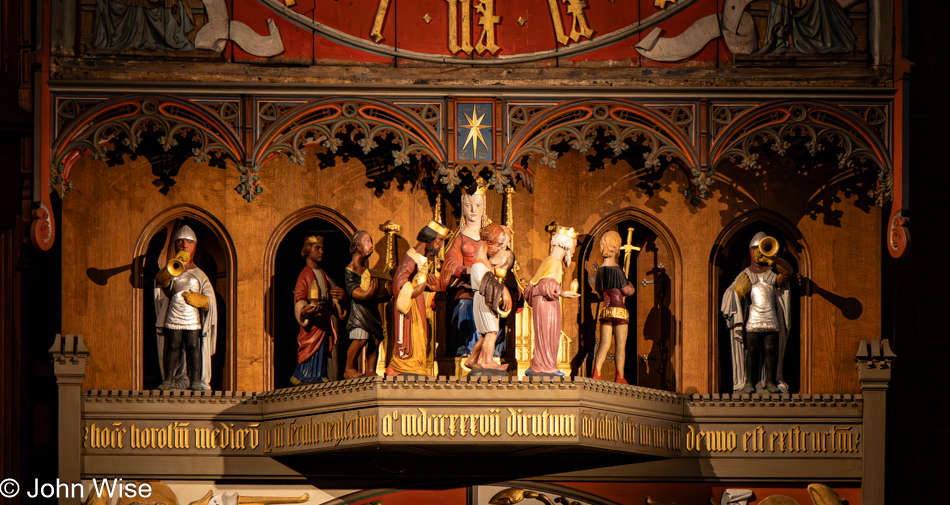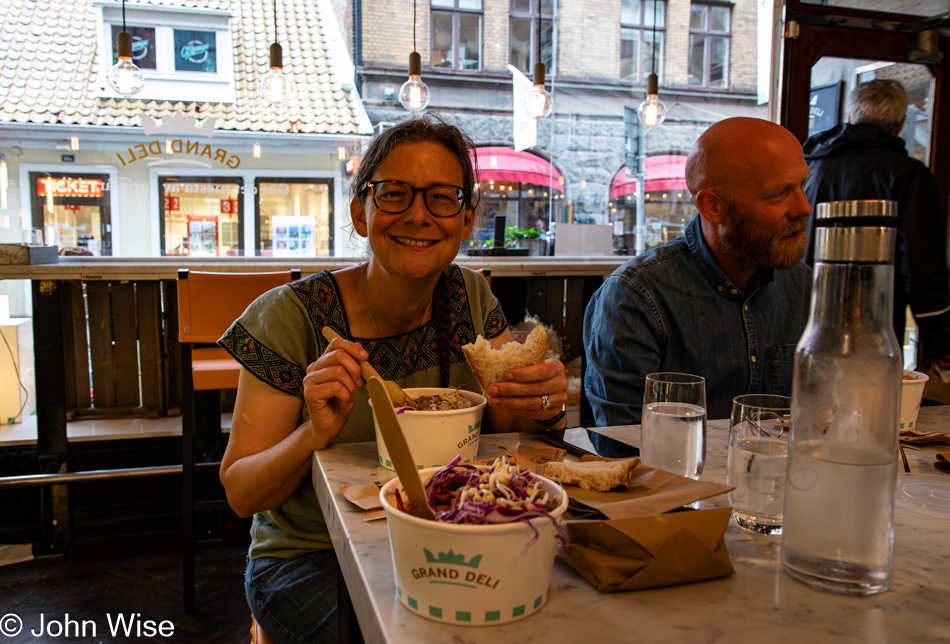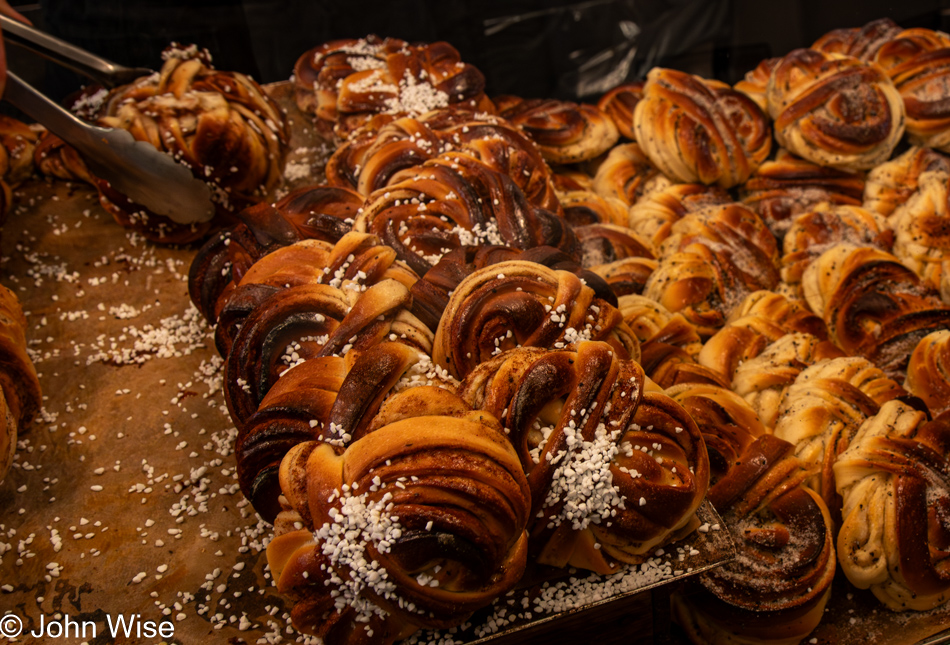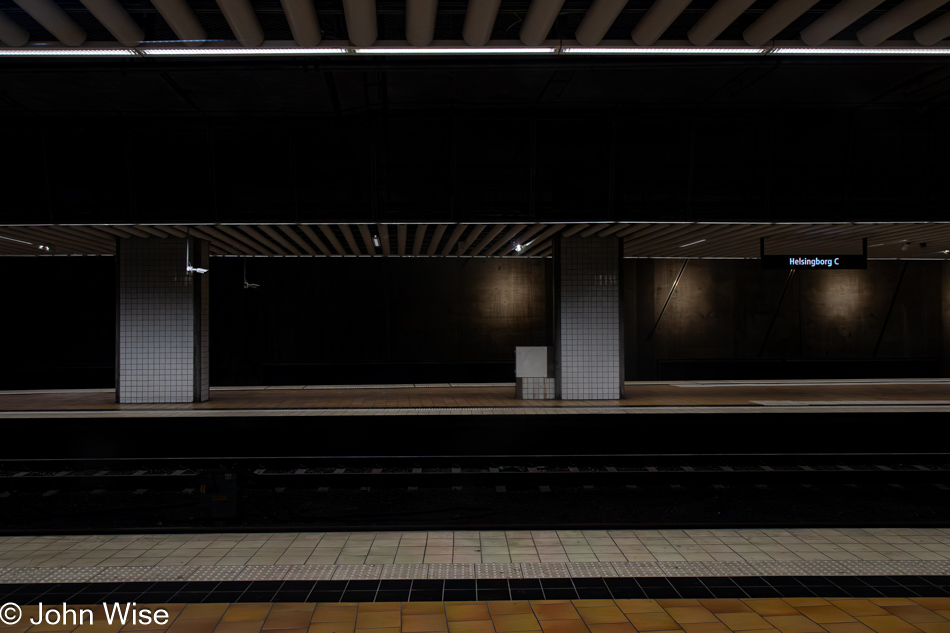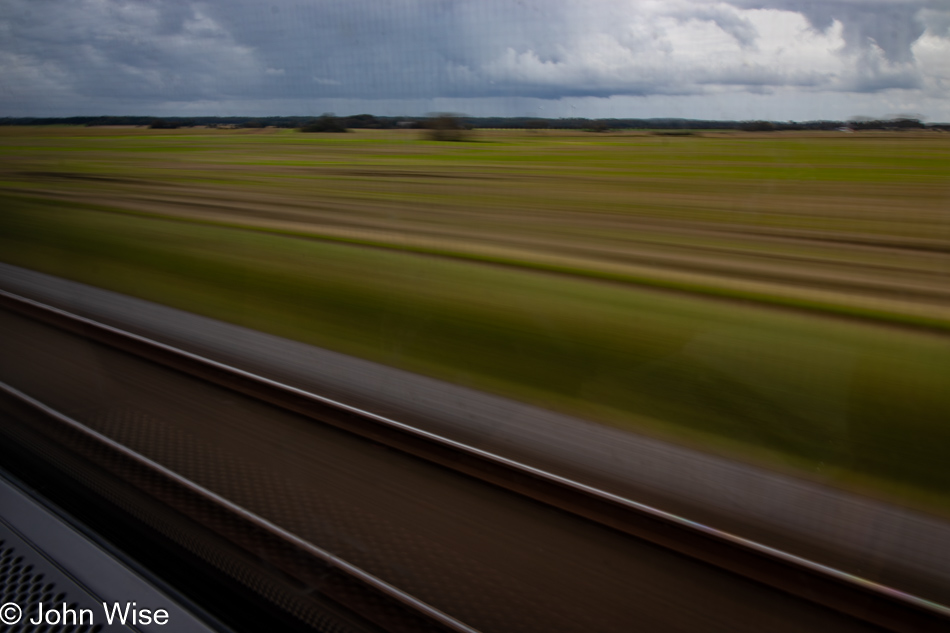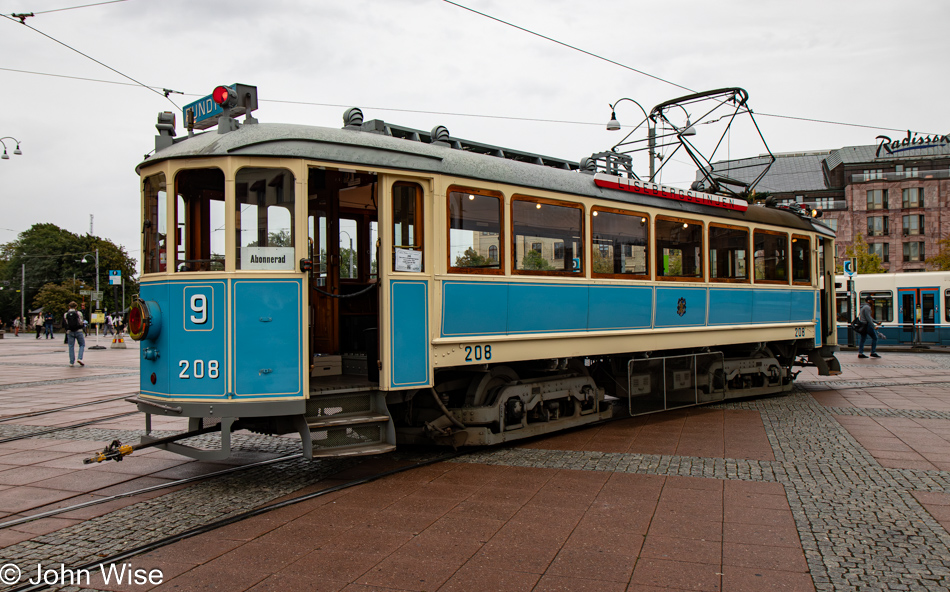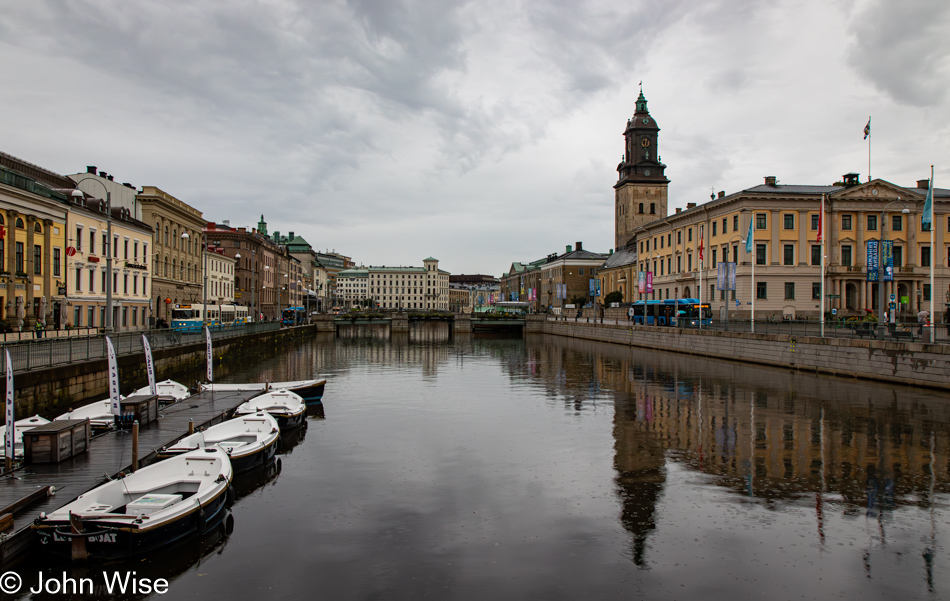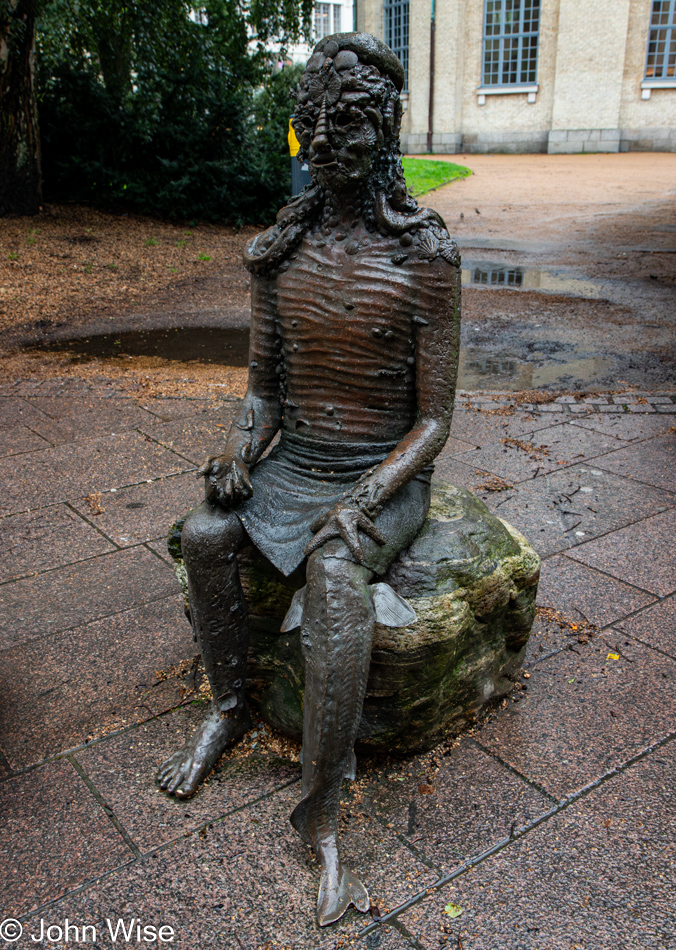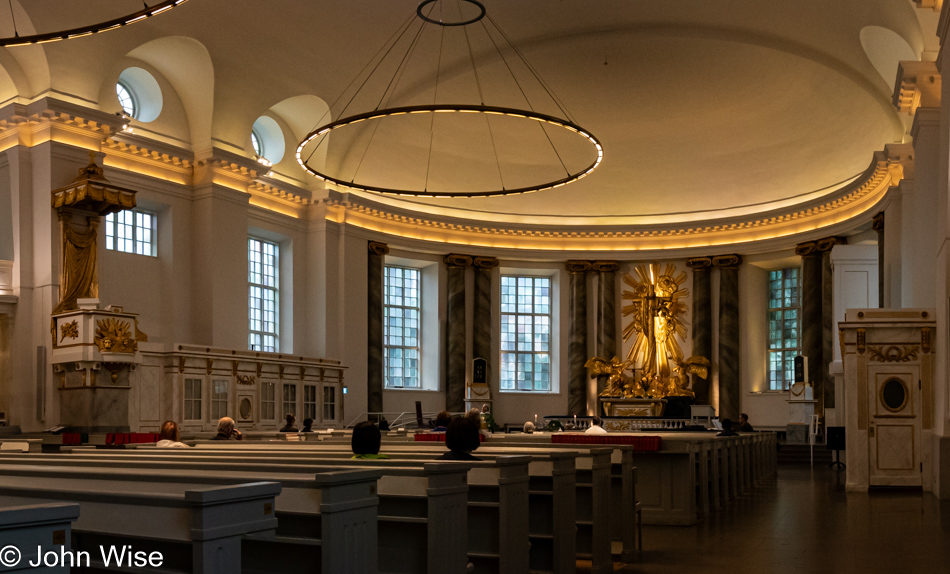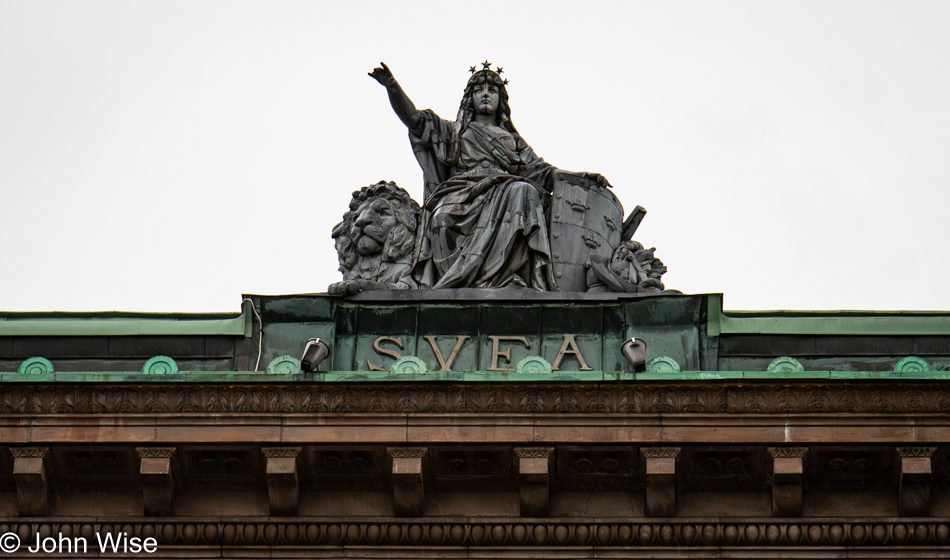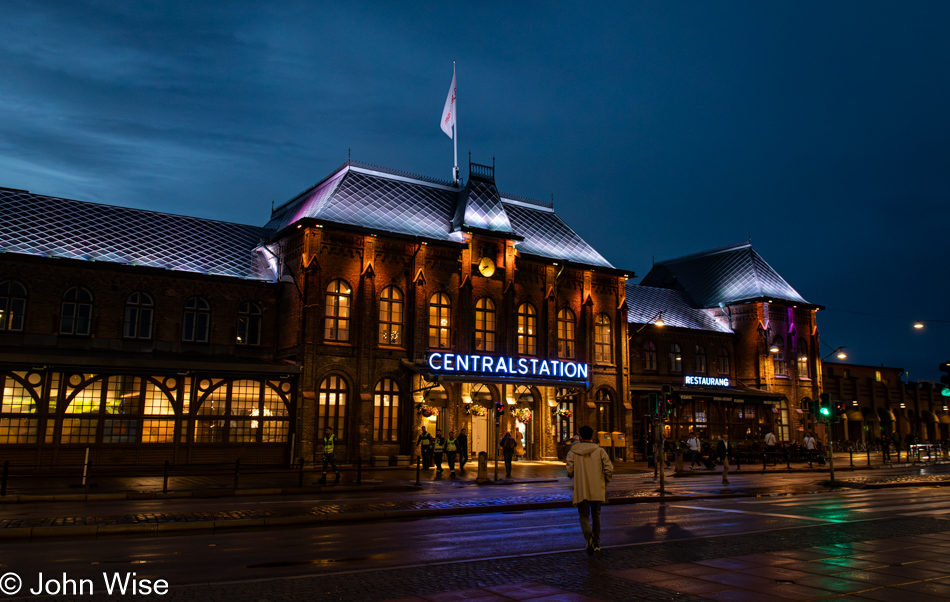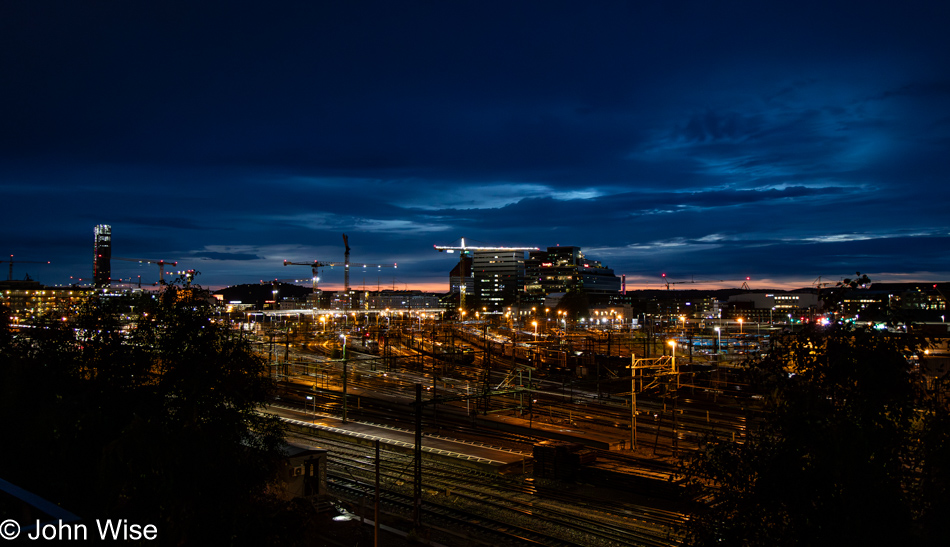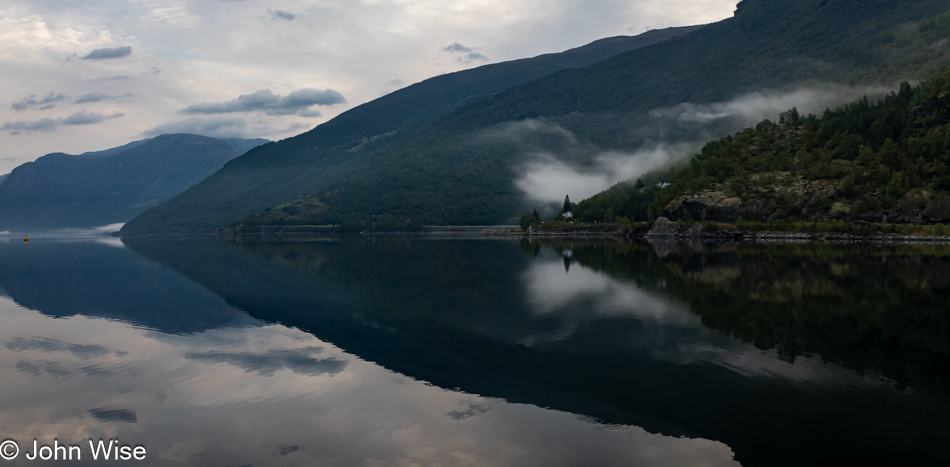
From our room at the Fretheim Hotel, we could see the fog hovering in the distance. Caroline insisted we get a better look, so before breakfast, we took a walk. I’m happy she made the suggestion because it offered us a mind cleansing before entering the circus of the buffet.
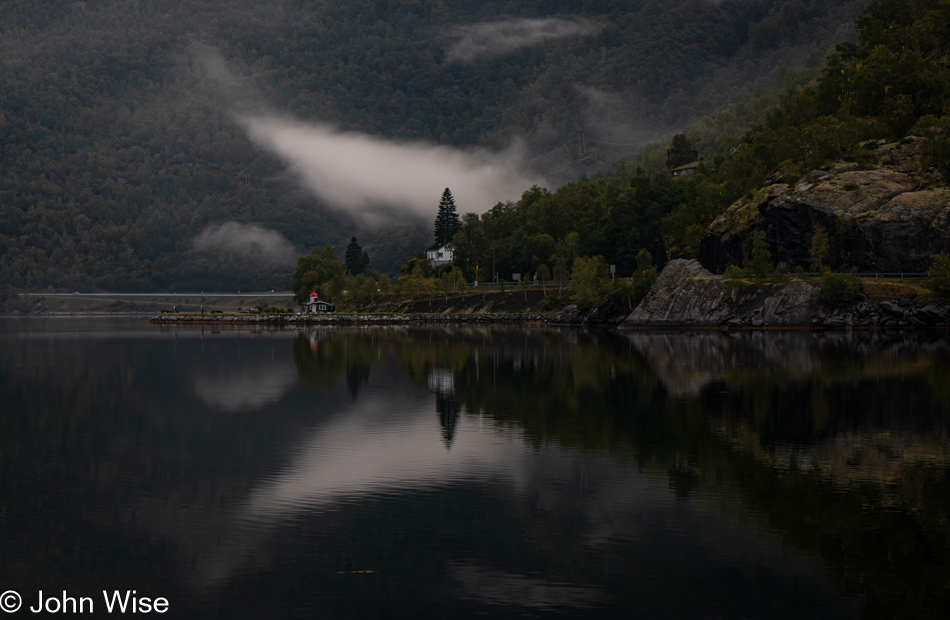
After we had gathered our morning meal, we were forced to witness the antics of the actors in this tragedy. An American couple hailing from Miami fetched their food in shifts as they must have feared something being stolen from their table. How did I verify they were from Miami? The first clue was the demonstration of fear, and the second was the show-it-all yoga pants. While I couldn’t hear them from where they sat, I did ask the husband, as he walked past, what state they were visiting from.
A pack of Germans descended, wearing their best Barbarian outfits representing the Neanderthal class. Did I say circus earlier? I might have meant the zoo.
An American man of proper Boomer age asked to sit at our table because the place was pretty full by this time. Before I could say no, Caroline said sure. Without skipping a beat, he showed his true colors when I warned him of our Statler and Waldorf routine of talking smack about those deserving of criticism, and he replied, “I’m right there with you, especially about our current President.” OMFG, our first obvious encounter with MAGA trash. At that moment, the hand of God must have nudged his wife to track her wayward husband down and told him to join her and some friends in another area of the dining room. No time for me to demand he GTFO and leave our table where we exercise the kind of bias we enjoy, not his uneducated brand of hate.
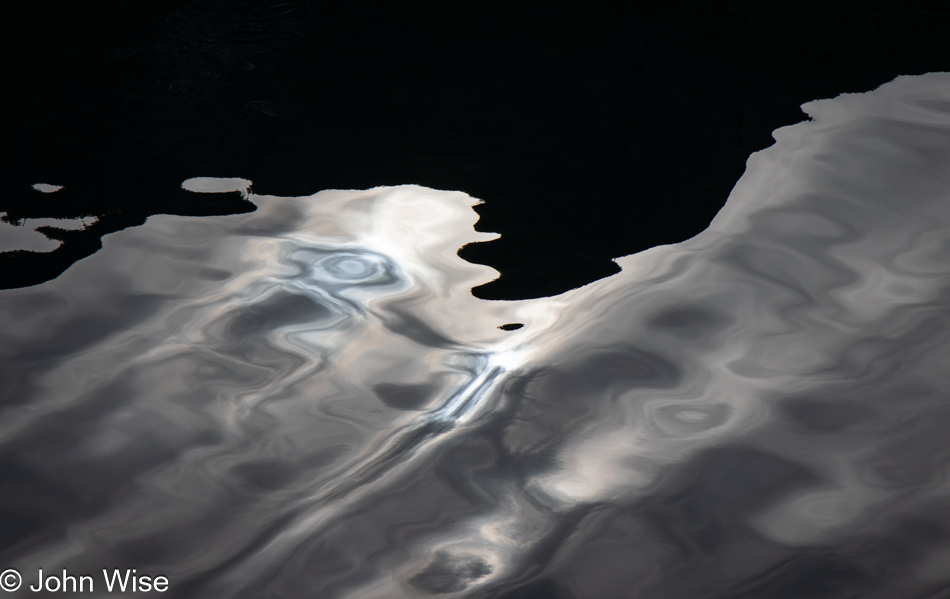
Back at the waterfront, we found peaceful tranquility made stunningly apparent as there was no cruise ship obscuring the view or the quiet. While I’ve written this already, I can’t help but reiterate that a village of 350 residents shouldn’t be required to deal with the onslaught of troglodytes falling out of a small floating city that excretes 6,000 chunks of refuse into an otherwise pristine environment. Obviously, there are not enough local Norwegians to handle the tourism traffic, so barracks have been built to house international workers from Argentina, Poland, Spain, Chile, Hungary, Slovakia, Italy, Brazil, and the United States.
If you should wonder why, while on vacation, I grind this axe instead of shielding my senses from witnessing declasse behavior and then vent such indignance time and again; it allows me to exorcise these bad impressions. I could choose to leave these reports out of my blog, seeing they’ve already been vented in my handwritten notebooks, but there’s a hope that someone might read a post and realize I’ve been writing about them and then might try to correct their boorish demeanor. My wish is for others not to disappear or cease to exist but to stop flaunting their contemptuous, entitled, and selfish oblivion that they are sharing space with others who are not interested in sharing their experience – just STFU or at least ratchet down the volume.

No one would fault me for taking in the scenery, history, and cultural attributes of a place, yet I feel that my observing the worst of humanity that are also able to afford to put themselves in these special places has me looking petty. But when an affront to the senses effectively lifts its tail and shits upon what should otherwise be a poetic moment, I can’t help but note this all too common personality characteristic that is spreading like an infectious disease.
Leaving these uglier impressions here is simply part of the experience I should continue to process, just as I do when I look at this image of Otternes Farmyard and explore my recollections of our time there a couple of days ago. My notes serve as pointers that fill gaps, bring back impressions, and feed a space where memories can be stored for future reference, the good and bad.
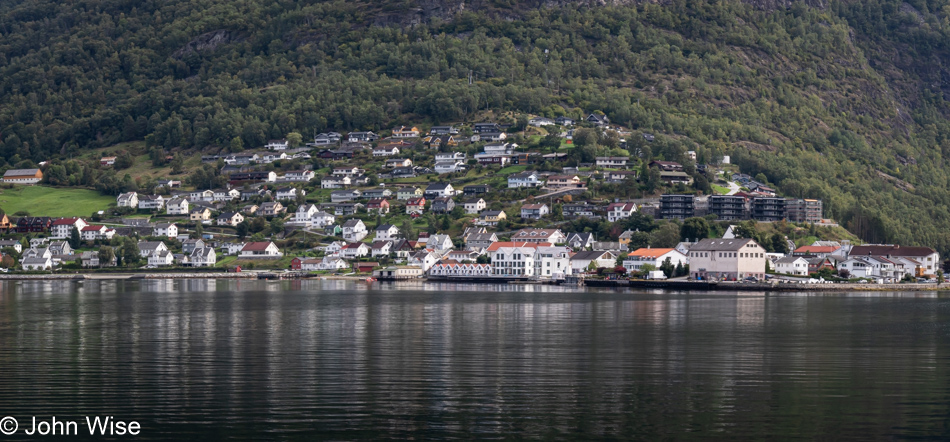
After so many days already out here in Europe, much has already blurred and would easily be forgotten if it were not for the knowledge that my daily writing exercises and thousands of photos are going to be put to work to solidify tenuous, fleeting impressions consumed by the intensity of so many experiences and the subsequent ones that are yet to be had. Those who fail in this exercise, I feel, fall into a kind of tragedy and, in the future, will struggle to recollect anything more than, “Do you remember that time we went to place x,y, or z?”
Dragging forward in great detail and vibrant imagery, what we experience over our waking days feels like an incredibly indulgent luxury. For those who might say they don’t have the time in their busy schedules, just look at what we shoved into a day, day after day. I’m also well aware that we are often out and about before everyone else and we are the last people on the streets before walking into our lodgings, yet at 60 years old, here I am, able to have my cake, savor it, save some for later, and offer myself and Caroline a morsel in the years to come via these detailed memories we get to revisit.
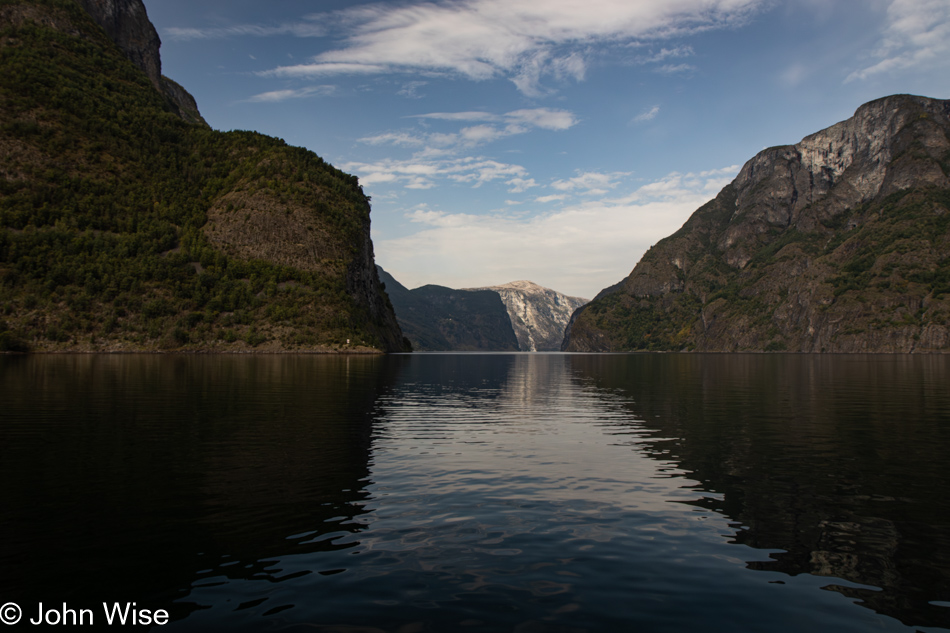
Cloudy with potentially heavy afternoon wind failed to materialize. Instead, we have sun and blue skies for the two-hour cruise on an electric boat to Gilligans Island, which in Norwegian is spelled Gudvangen. Do not pity us for our sunny passage on the Aurland and Nærøyfjord; we know full well how fortunate we are. And to top it off, our experience is being taken to exponential levels through the amazing hotdogs served on board. They are sprinkled with crispy onions that act as fairy dust because these pølser (Norwegian for sausages) are magic.
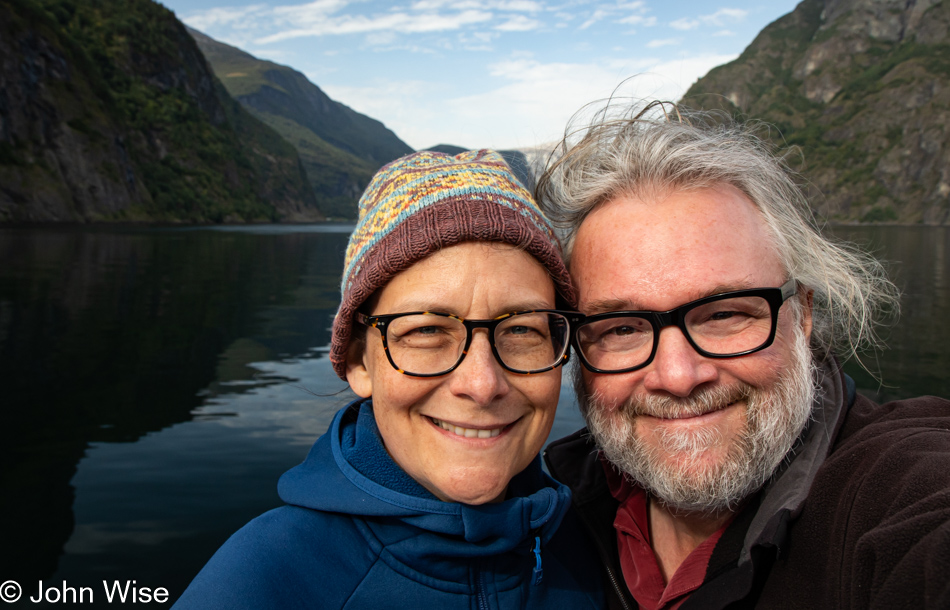
All I ask for is civility and quiet when it’s appropriate. Contrary to the sound of my grump, I do not hate humanity, but I do enjoy the 60-year-old version of “Get off of my lawn,” a thing I’ve been cultivating for the last twenty or thirty years.

That’s Undredal across the fjord with a road that allows residents to come and go, and I know that after looking at the map of the area and trying to find any Streetview images. There are but a few out here, but I did catch some 360-degree images someone took on a ship or ferry in the winter that was enticing enough that I could see the attraction of visiting on the cold, dark days of December or January.
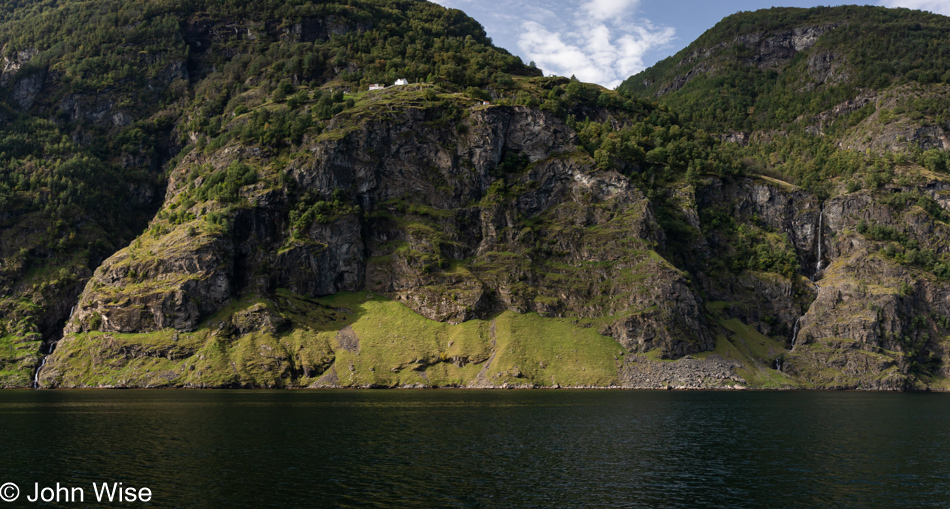
There are houses perched in what appears to be impossible places, and while some map searching might show a road just out of sight traveling between the mountains, that would kill the mystery, so I’ll just maintain my fantasy thoughts that a speedboat delivers visitors to the water’s edge, and they hike up the cliffside with their backpacks stuffed with food while their water is taken from one of the two waterfalls on their left and right.
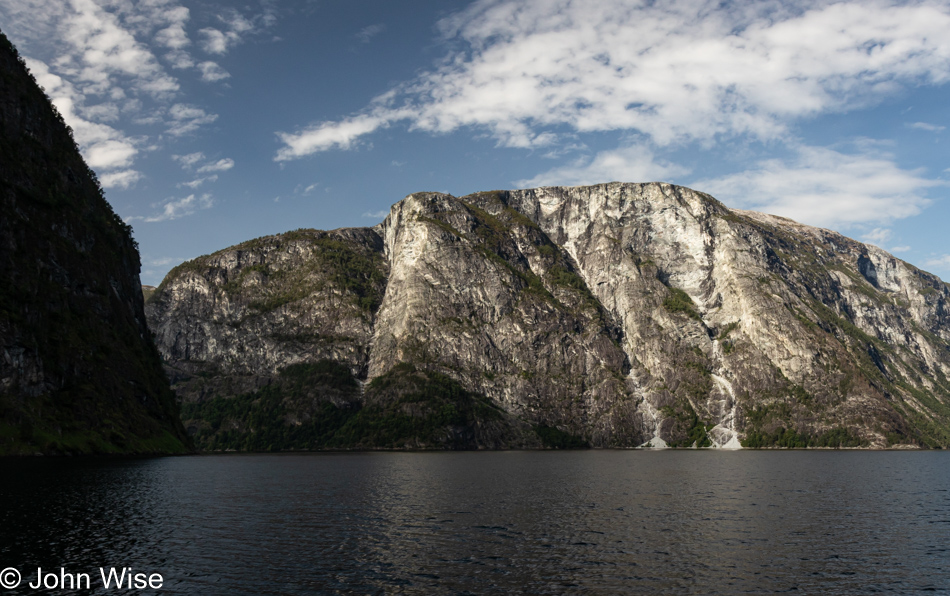
There’s some uncertainty here, but I think we are passing the point where the Sognefjord, Aurlandfjord, and the Nærøyfjord meet. Sognefjord is the main fjord and the longest in Norway, as I already pointed out in a previous post.

While I can’t swear to it, this view should be looking south to Gudvangen on the Nærøyfjord, which translates to Narrow Fjord and is the world’s narrowest fjord.

Leading up to prepping the photos for this day that had us spend a couple of hours in the quiet of the fjord on our way to our next destination, Caroline tried reassuring me that, compared to the lengthy blog posts so far in this trip, this one would undoubtedly be shorter. How many photos could there be worth sharing, considering we moved through a relatively short length of the landscape? I ended up with 20 photos chosen from the roughly 250 I shot between Flåm and Gudvangen, and upon asking her which ones she’d cut, well, here we are, and I’m struggling to write to them all.
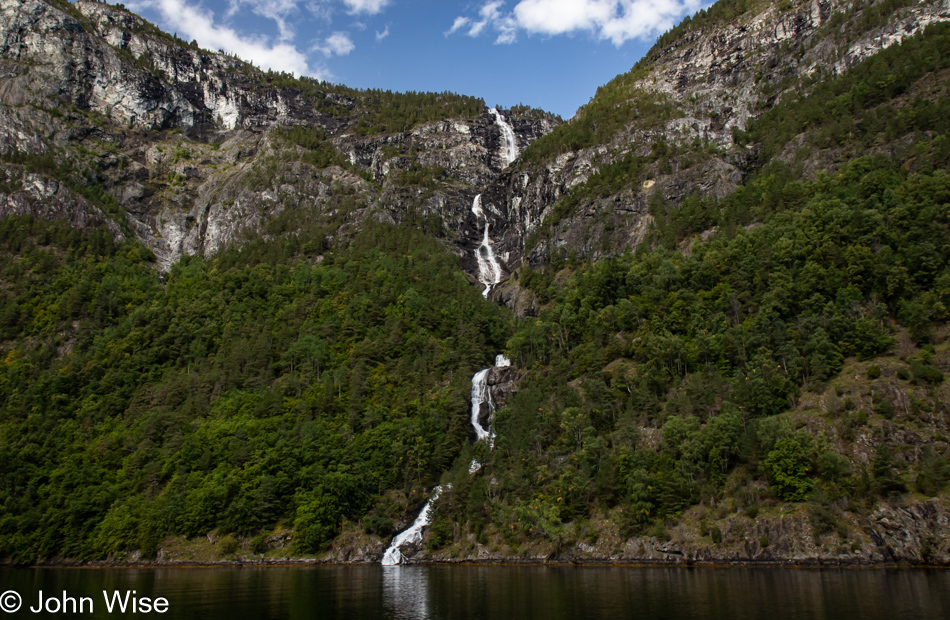
This is the 1,263rd waterfall we’ve seen in the past few days and not just any waterfall, it is the Laegdafossen.
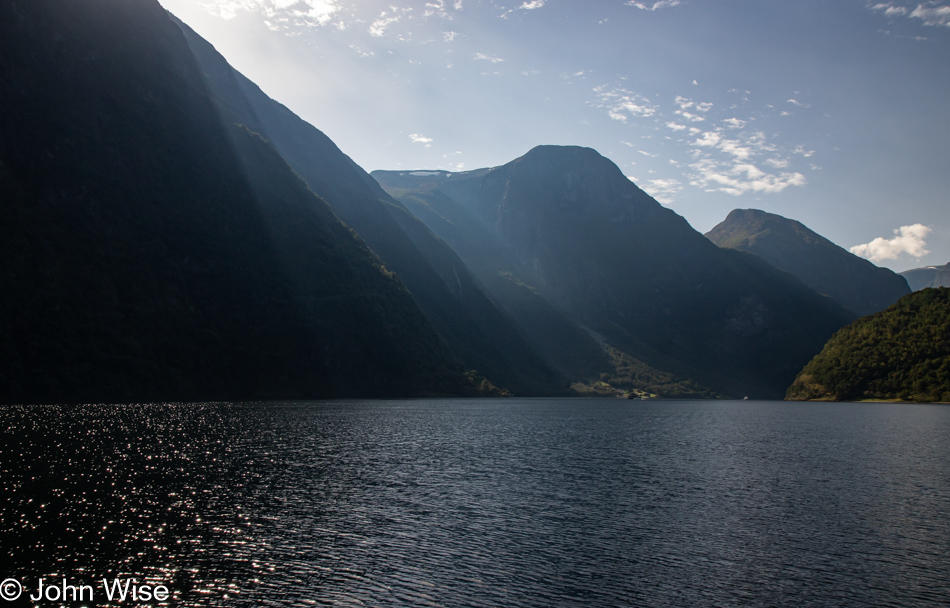
“Hey wife, you thinking what I am?” We were on the same channel; another pølse (hotdog) with crispy onion was on her mind, too, and even after sharing our second hotdog, we were “joking” that we could both see a third in our future. Who knew that Norway does hotdogs and does them perfectly?
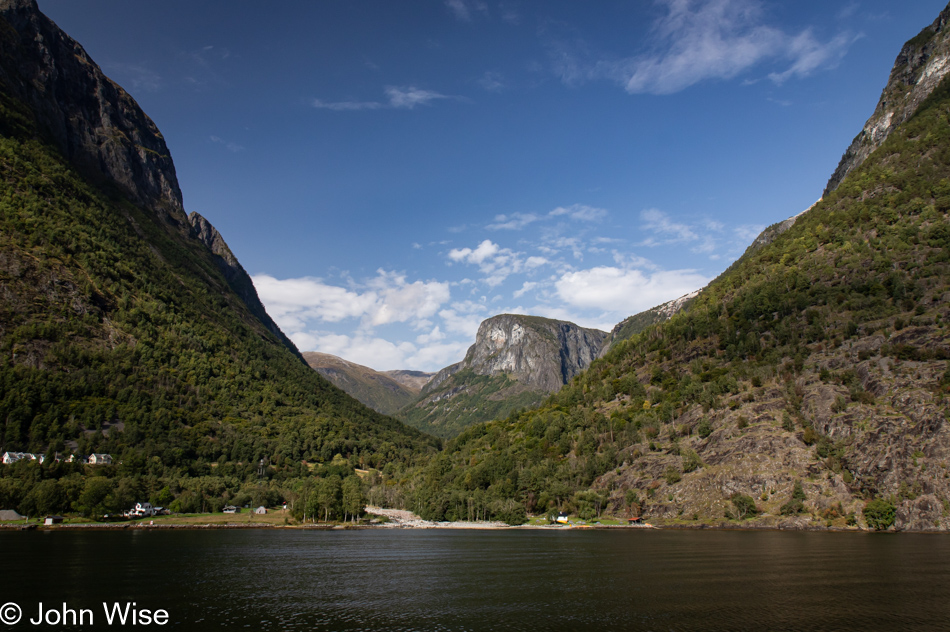
When God/Muhammad/Buddha made the earth, Half Dome was placed in Yosemite National Park in California and then, over in Norway, Half Dome 2.

Welcome to the idyllic hamlet of Dyrdal, which claims to have been around in some form for approximately 2,000 years. At one time, the area up the valley was being farmed; today, there are no longer any working farms, but the area is quite popular, judging from the number of people who got on board, including a larger group of young hikers.
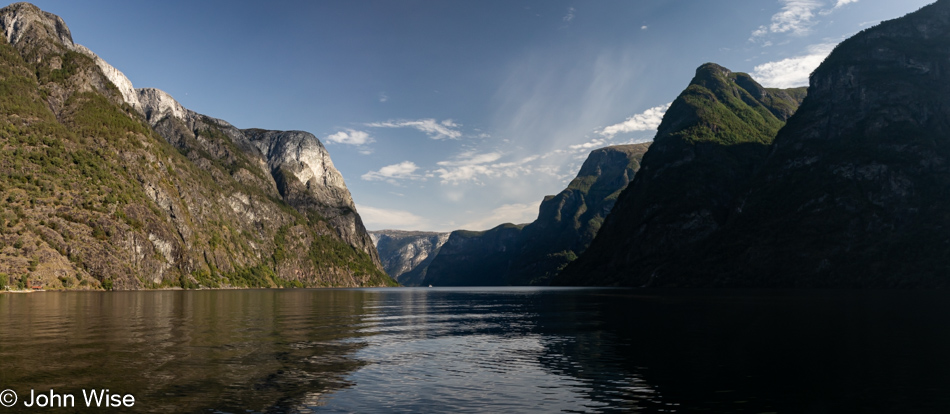
Our time moving through the Nærøyfjord World Heritage Park had a sad and tragic element that was only understood after we returned to Arizona, and that is we’ll likely never be back in this corner of our planet where there are dozens of things, places, and activities we’d enjoy experiencing.
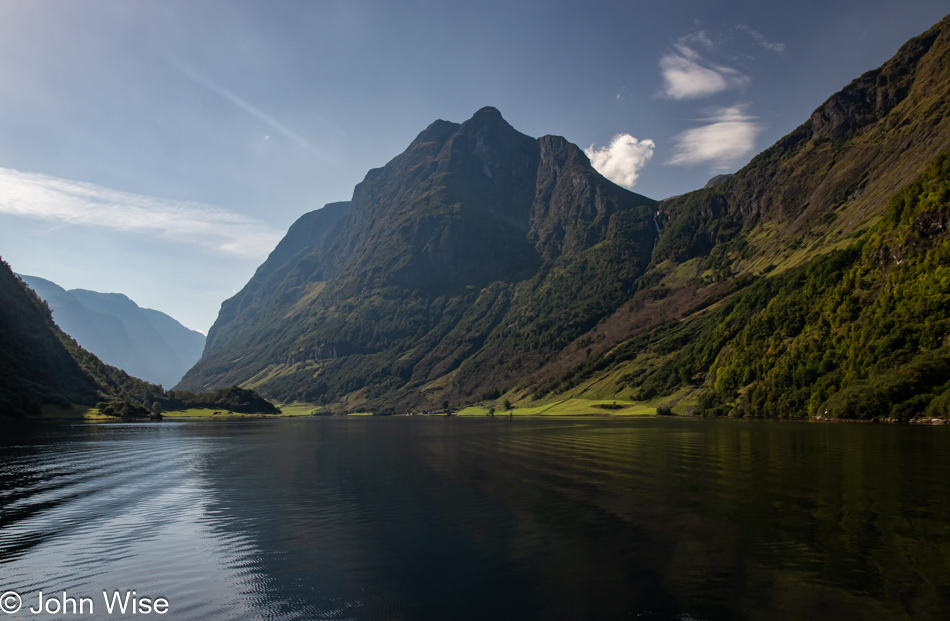
Is anyone else picking up on the Kauai, Hawaii vibe?
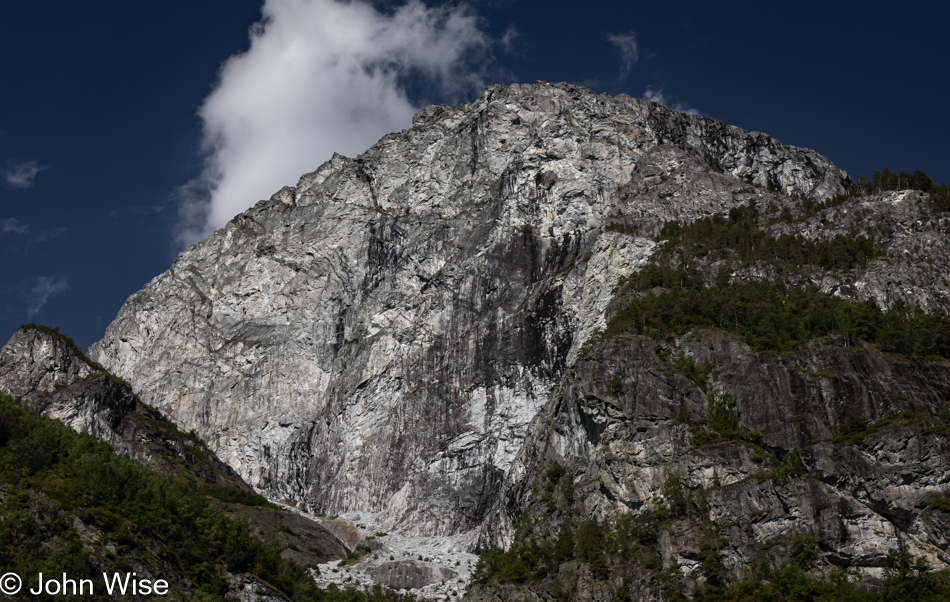
Remember that idea of sharing a third hotdog with crispy onions? I emphasize these onions because we are convinced that they are the secret sauce that elevates Norwegian pølse to the heights of yumminess we’ve not witnessed before. Anyway, if we are going to find time for this indulgence, we’d better act now as time is quickly running out because we are soon to arrive in Gudvangen.

The stuff we can learn if we are persistent can be serious fun, such as finally stumbling upon the history of Styvi (above) as a leg on Den Kongelege Postveg (The Royal Post Road) and how mail and farmers in the area moved from here down the fjord to the narrowest point at Bleiklindi (the pale linden tree a.k.a., the basswood in the U.S.) across from Bakka, the village we’d be walking out to from Gudvangen later. Kristin Ese is the author of the article I read, and a list of her writings can be found here should you be looking for information about the history of the area.
Attention Caroline: should you follow the link to https://encyclopedia.fylkesarkivet.no/, you will become lost for days and beg me that we should return to the Vestland of Norway. Don’t click on it; just don’t.

While of a dramatically different type of environment, I can’t help but have a sense of the Grand Canyon with the steep cliffsides reaching down to the water; obviously, there are significantly different shades of green, and the water is perfectly calm here on the fjord. This is the northern end of Bakka.
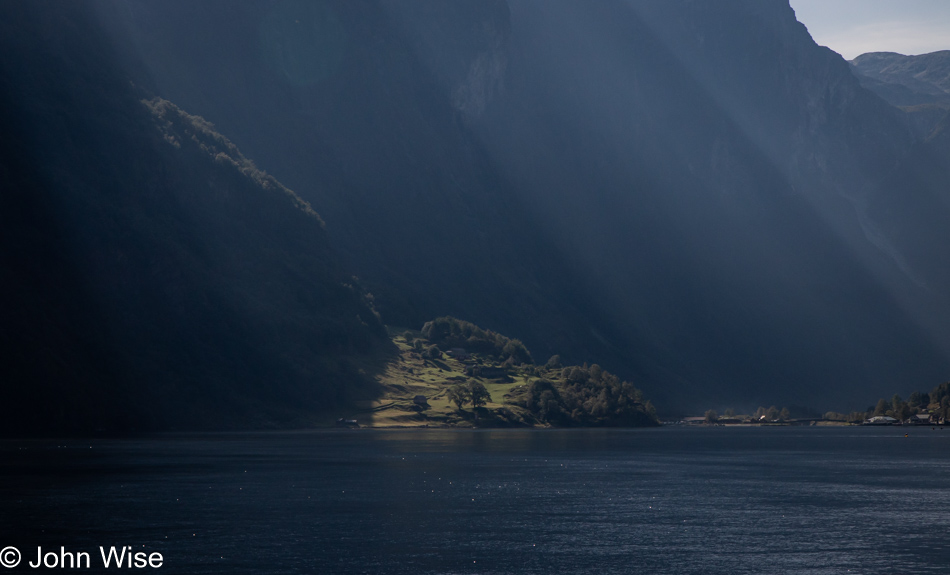
Had I only known everything, I might say I’d wish that we had invested more time exploring the area of Sognefjord and all of its arms, but the truth is, we’ve been enjoying every place we’ve visited, and I don’t think I’d change a thing. In any case, this immersion of learning yet more about where we’ve traveled certainly draws me in to explore firsthand the points between that there wasn’t enough time to visit on this trip.
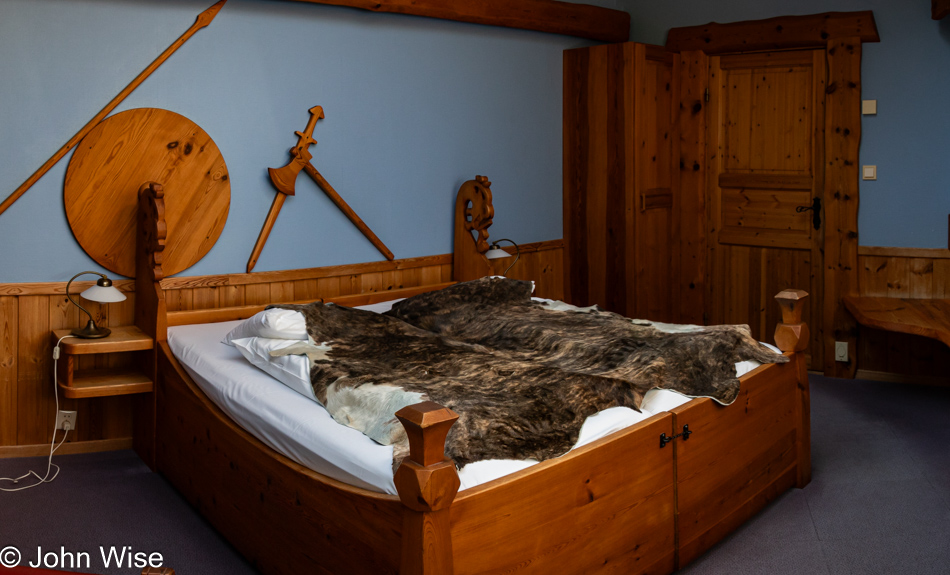
You can be certain that the upgrade to the Viking-themed room here at the Gudvangen Fjordtell wasn’t a gift because Oden or Thor were smiling upon us but because our bank was able to perform the proper currency exchange for us to pay for a night under animal skins.

Across from our lodging in the distance is the Kjerrskredsfossen. Mind you that I didn’t tell you that this is the Kjerrskredsfossen waterfall because “Fossen” is Norwegian for “waterfall,” and if I did call it that, it would be like saying “ATM machine,” which is a silly redundancy. Between us and that waterfall no one has ever been able to pronounce is a Viking Village that, this late in the season, looks too sad for us to spoil a day visiting, but there was a gas station where, on a mission to graze, we picked up a bratwurst sprinkled with the fairy dust crispy onions, but it sadly paled in comparison to the godhead level of pølse on the cruise over.
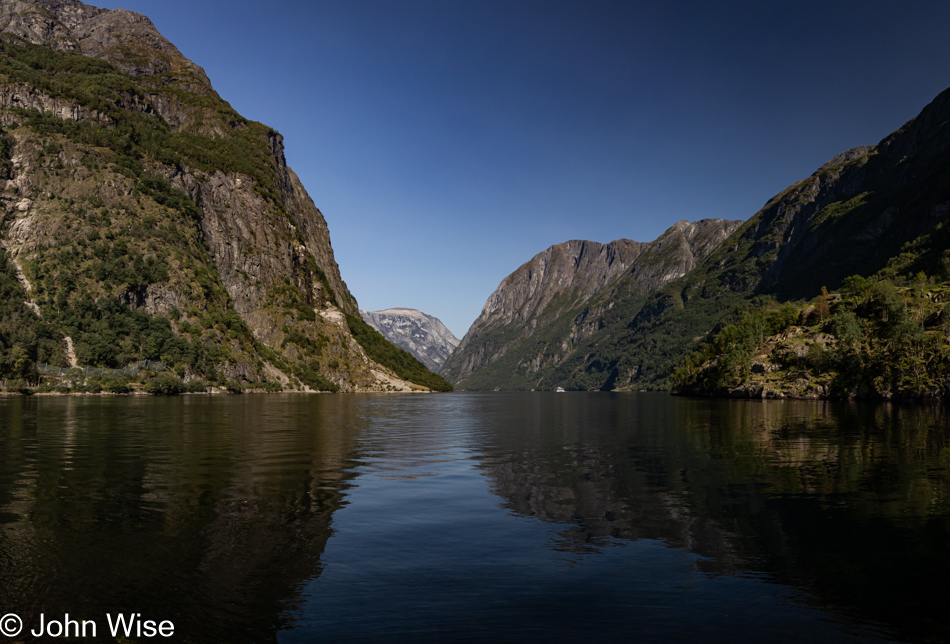
With our wiener, I mean brat, in hand, we sat down at a picnic table offering us this view right here. At 64 pleasant degrees (18 Celsius), we were at risk of becoming stuck and lying down right here for a quick nap. Just as we were beginning to struggle, a lady dressed in Viking attire approached our bench and struck up a conversation. She explained that there would be a feast at the Viking village later and that she hailed from Latvia. Her strong accent made it difficult to understand her intentions. Was she here to drag us over to the village, or was she just making small talk? At some point, she played a tune on a mouth harp, which made us wonder if we were supposed to tip. As she was getting the idea that we were not interested in the Viking Village (which may or may not be a tourist trap), our determination to seize all the moments won out, and we headed out on a walk to help close out the day.
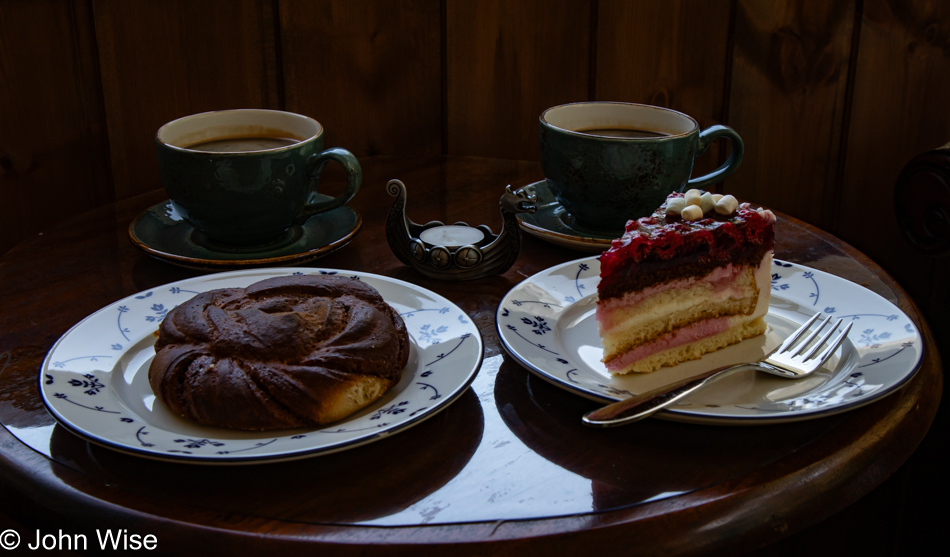
You know how your intention may direct you one way, but distraction pulls you in another? Well, you might think from this image you know what came next, but what actually happened was that Caroline wanted to visit the gift shop at our hotel, and good thing that we did because she found a souvenir for herself (that wasn’t made of yarn, mind you). It was a small Viking ship tea candle holder for her desk. Speaking of work, she also grabbed an axe-wielding Viking figurine for one of her bosses.
We were on our way when a cafe jumped into our path and whispered, “Hey, what about that nap you considered? I have the cure in a cup of coffee.” The proverbial one thing leading to another gripped us, and before we knew it, we were sitting down for a fika that included a cinnamon roll for me and a raspberry yogurt layer cake for Caroline. At the center of the setup, you might be able to make out the Viking ship candle holder. What the hell is wrong with me? A bucket of emotional fragility is spilling over me as the French hit Voyage Voyage from Desireless starts to play here in the cafe. It whipped me right back to 1986 when it was a #1 hit across Europe. Now I want to take a listen to Mylène Farmer’s – Désenchantée. When these songs came out, I wasn’t particularly enamored with them, but they were impossible to avoid due to their popularity. What strikes me hardest is the peculiarity that I’m so familiar with these songs as an American because this speaks to the incredibly unique opportunities I’ve been afforded.

After our experience with the menace that discharges from cruise ships, there’s a sense of wanting to leave in case a load descends on Gudvangen. Knowing that tourists are the least likely to venture from a chair, we feel safe taking an 8-kilometer (5 miles) roundtrip walk to an old church and the narrowest spot on the fjord.

While it’s not a big load of people coming into town, we’ll be well gone when they disembark and do whatever it is they intend to do. You have to admit that there is at least a passing similarity with the S.S. Minnow, right?
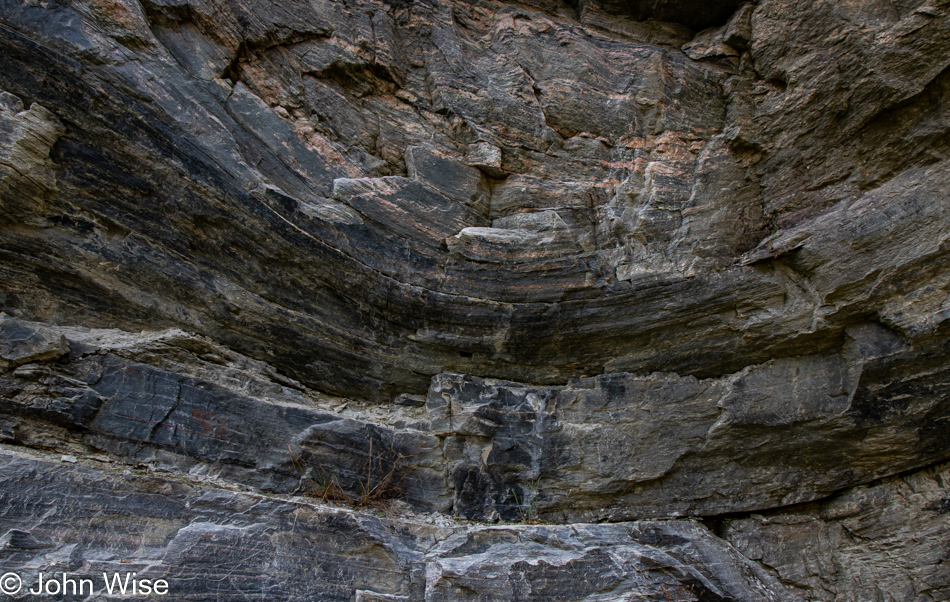
What deformation processes were at work in folding these? We cannot say, seeing we are not geologists, nor was there any signage that could have described what was going on with the strata. This is a shame because I’m certain that everyone must be as curious as we are.
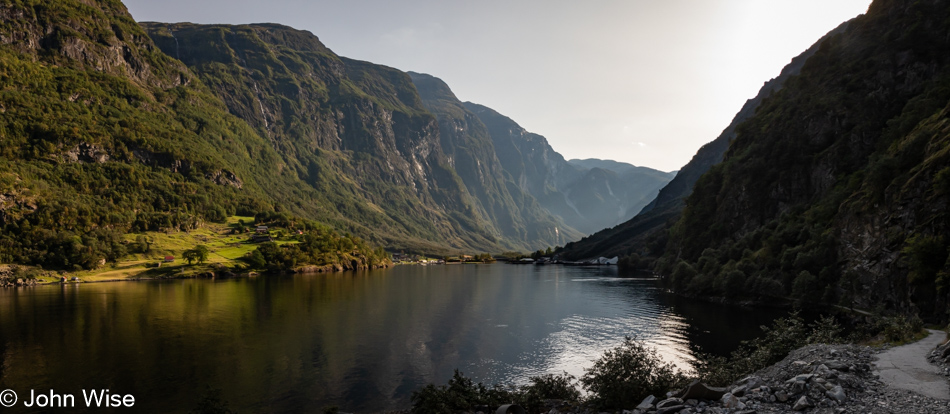
This is turning out to be one of the greatest walks along a fjord we’ve ever taken. True, it’s only our fourth walk next to a fjord, or maybe our fifth. Or could it even be the sixth?
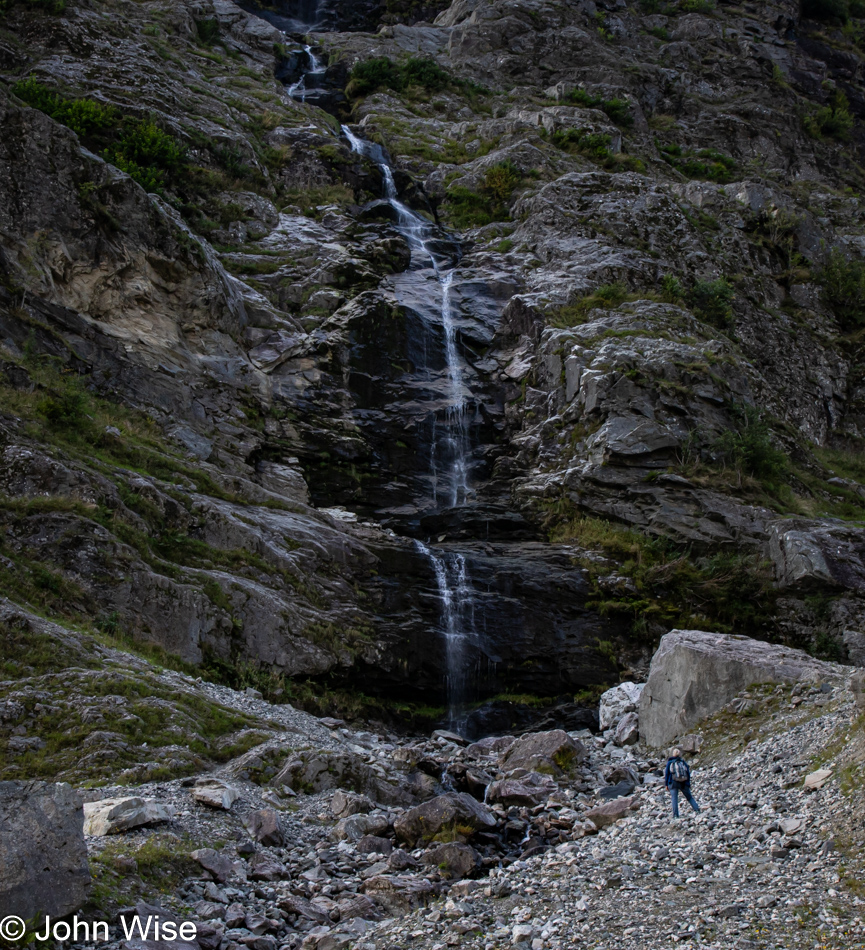
Unnamed waterfall next to the trail to Bakka with a blue banana on the right for scale. There was also a blue plastic giraffe nearby we left undisturbed, but the same can’t be said about the raspberries telepathically inviting us to carry them away, preferably in our tummies, which we obliged them with.
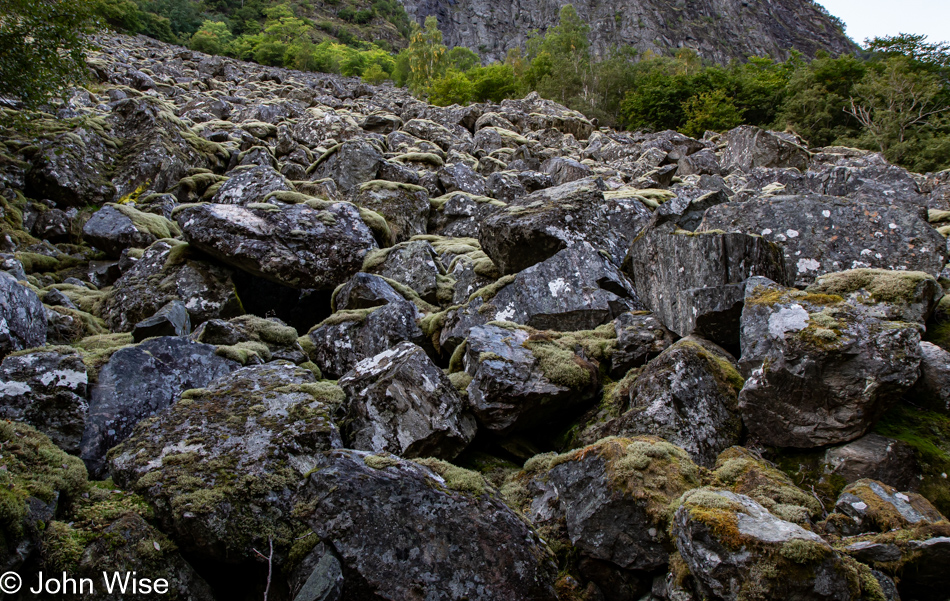
Who doesn’t love a moss-and-lichen-covered rock fall and dream of having one at home? Others might want a pool, jacuzzi, or BBQ island; I want this right here in our living room, minus whatever creepy crawlies might be nesting in cracks and crevices.
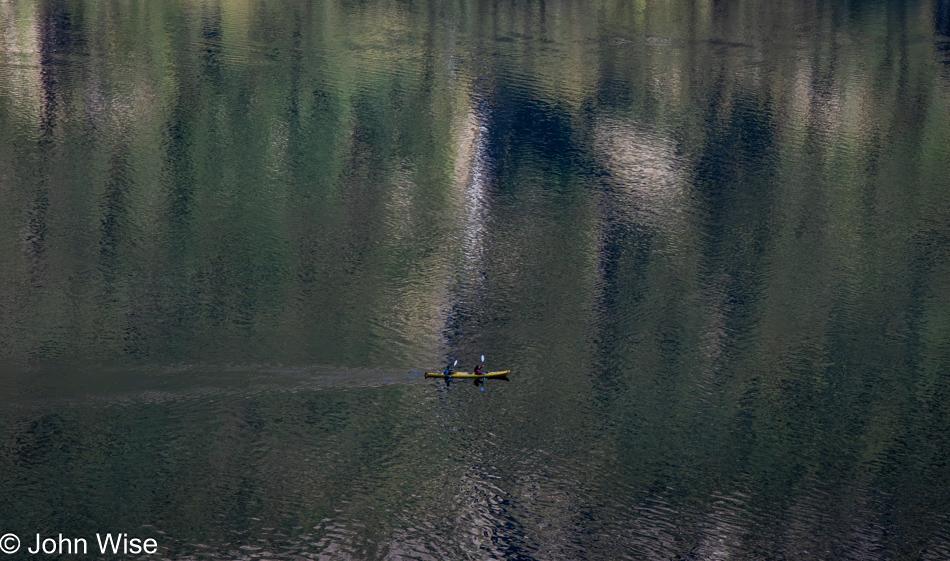
Can you see what you might not first notice when seeing this photo? Sure, there are two people in that kayak paddling on the calm waters of this beautiful fjord, but if you look in the shadows, you should see the reflection of a waterfall.
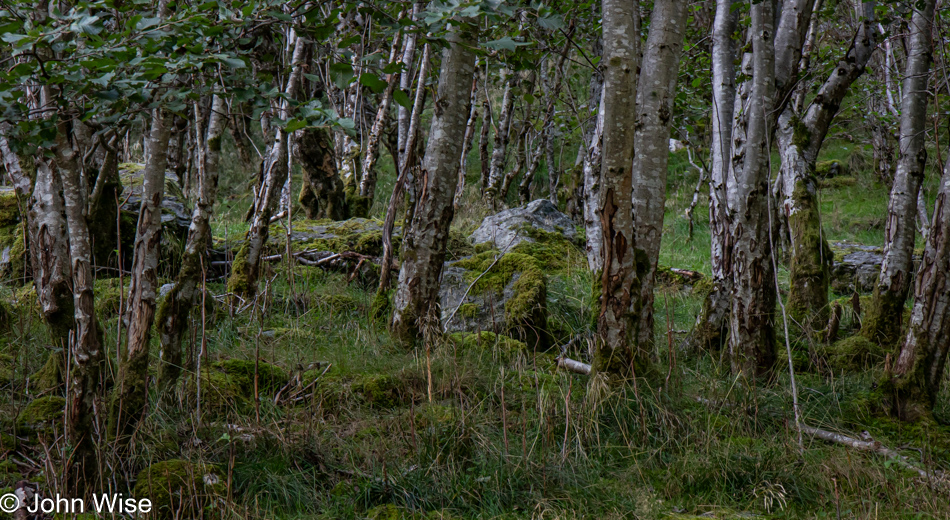
Trying to remember that the world is not only made of rocks, water, moss, and sappy French pop music, I must look past the trees to find the forest.
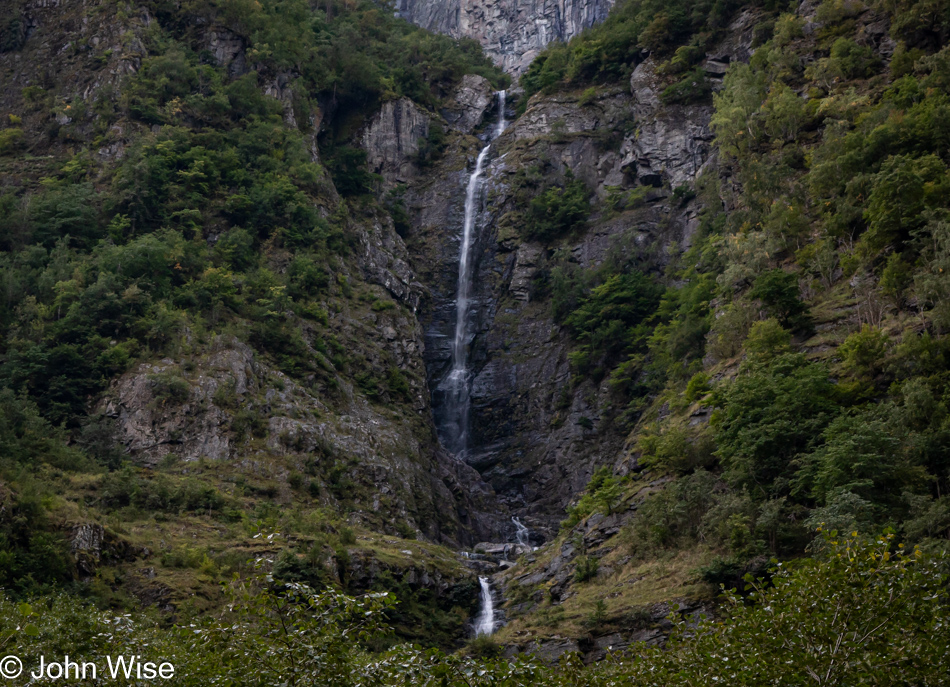
Okay, maybe it is mostly waterfalls and rocks here in this area of Norway.
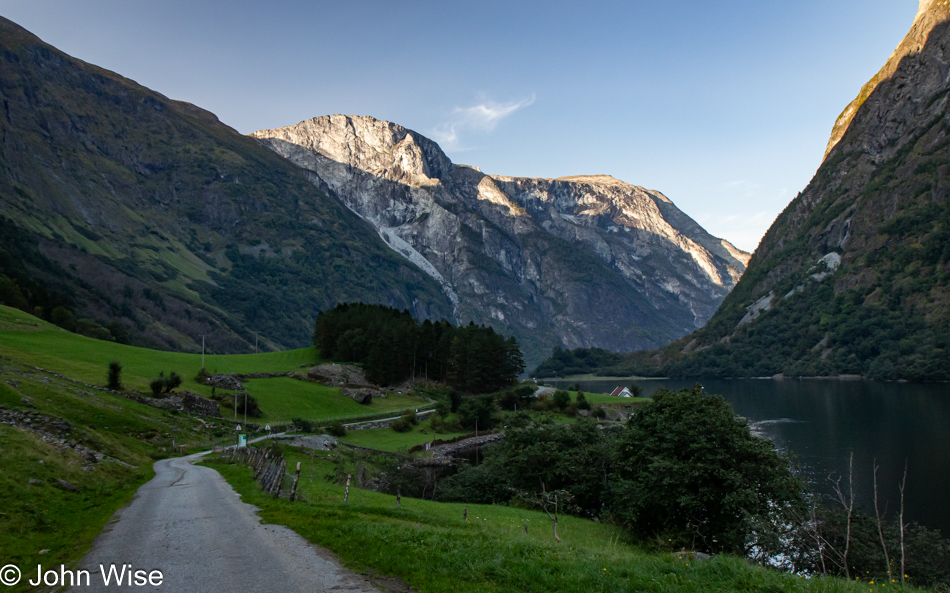
Better to have arrived in Bakka in shadow than to have never arrived at all.
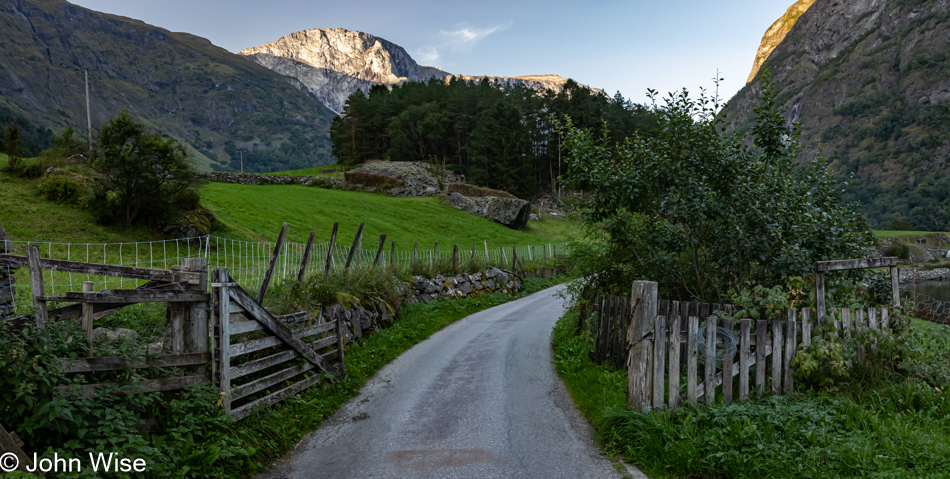
Seriously, how can a place be this idyllic? Is using the word idyllic twice in one post even allowed by the Governing Body of Blog Writers International?
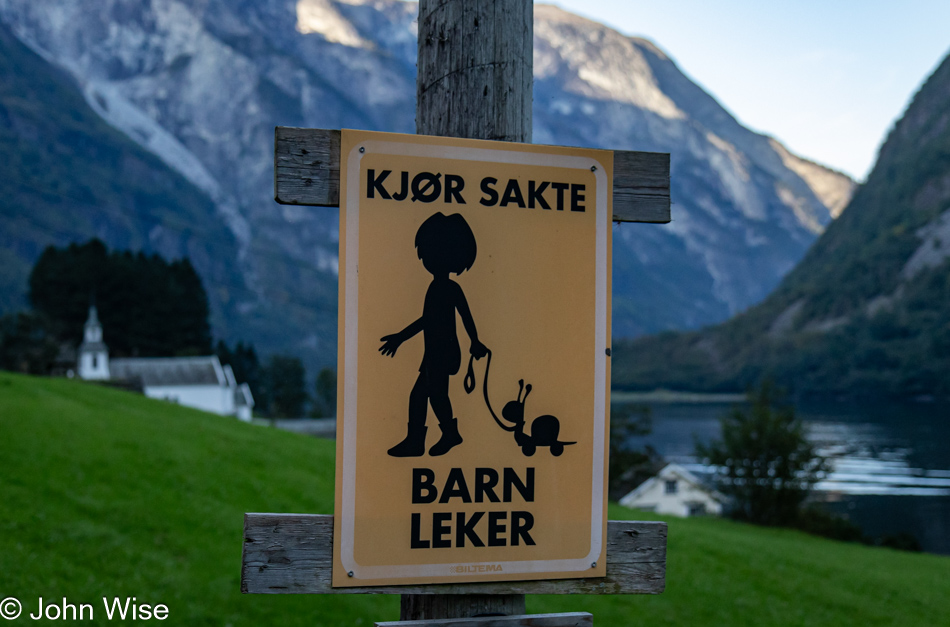
Drive Slow – Children Playing.
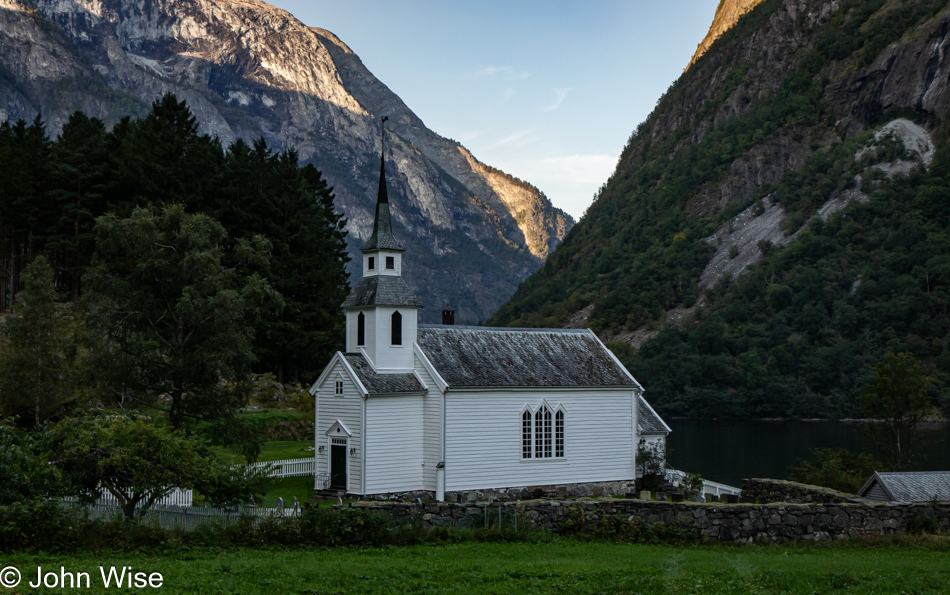
This is why we are in Bakka: to see the Bakka Church. It’s not especially old; there are no historical events of note to remember the place by; it didn’t replace a 1000-year-old stave church or a pagan site used by Vikings. It’s just a regular church – except this one is on Nærøyfjord.
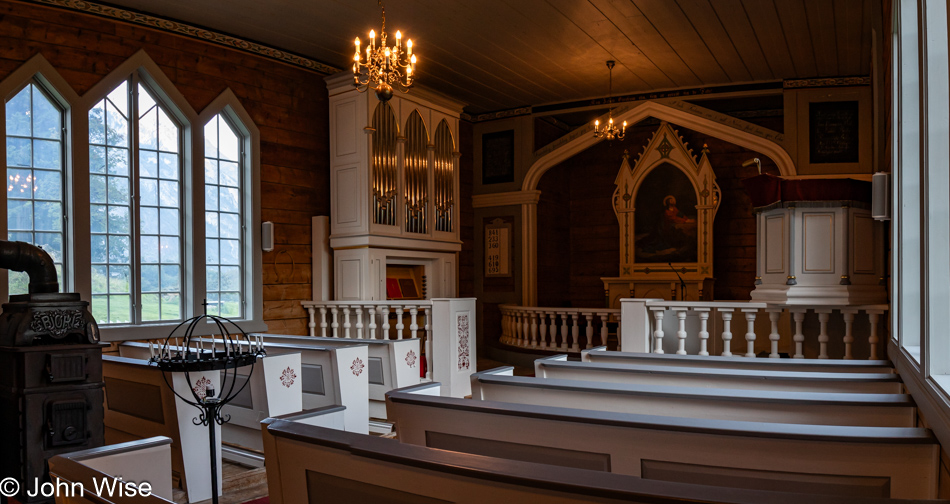
I was certain by this time that we’d be the only visitors, but when we started to enter the church grounds, a French couple drove up. Most of our hiking trail was the old, crumbling, somewhat precarious road between Gudvangen and Bakka, right by the water’s edge that car traffic bypasses in a tunnel, but after that tunnel, we were walking on that road along with a couple of cars that were coming or going. It took me a moment to find the light switch, but I’m not the one to be shy about making myself at home, though I refrained from playing the organ.
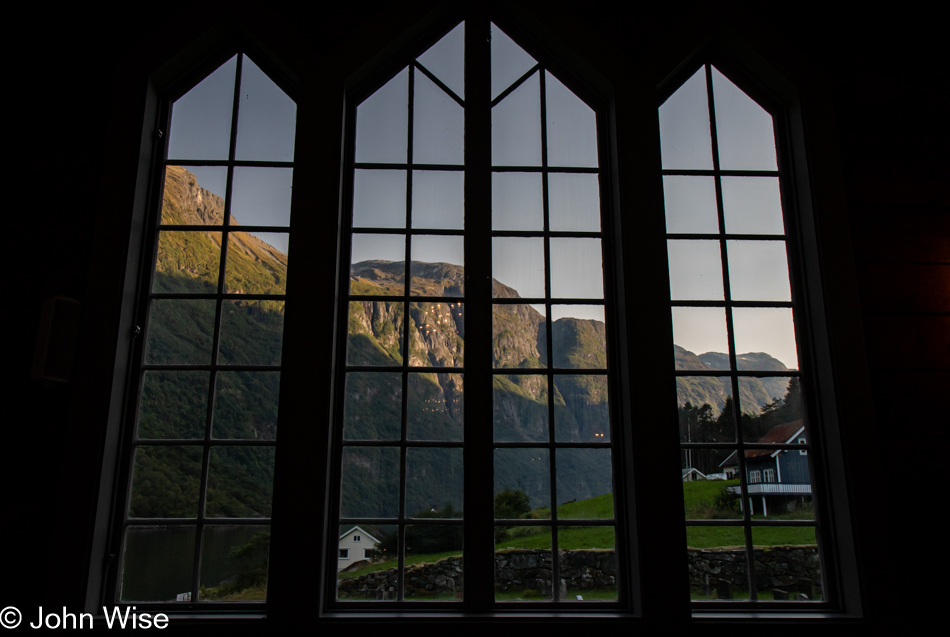
When one looks into the majestic from day to day, one often loses sight of the magnitude of what one should be seeing. We’ve known this behavior through many encounters during our travels and even have been part of the shortsightedness ourselves. We end up romanticizing what’s likely ordinary to those who live in such a place and imagine that if the environment is so intoxicating to us, this would be the perfect place to live, but how certain is that? I’m sure that for those who live in warzones, drug-addled neighborhoods, abject poverty, or incarceration, that would be true, but how long before we normalize a place, find the issues that drive others away, or begin to romanticize the next place on the map?
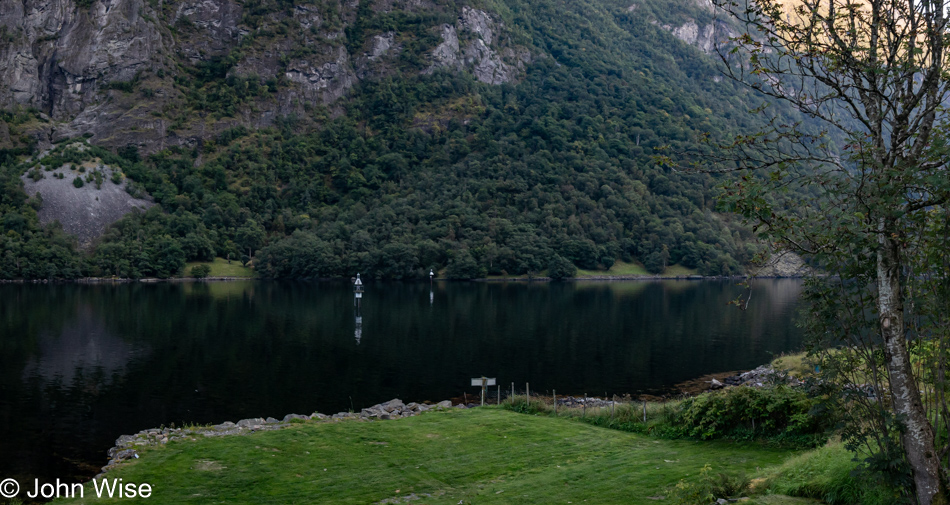
This is the point in Bakka where I believe the Bleiklindi (the pale linden tree) once stood, and people crossed the frozen fjord with their custom-made boats modified with sled rails to handle an icy, slushy, or watery crossing.
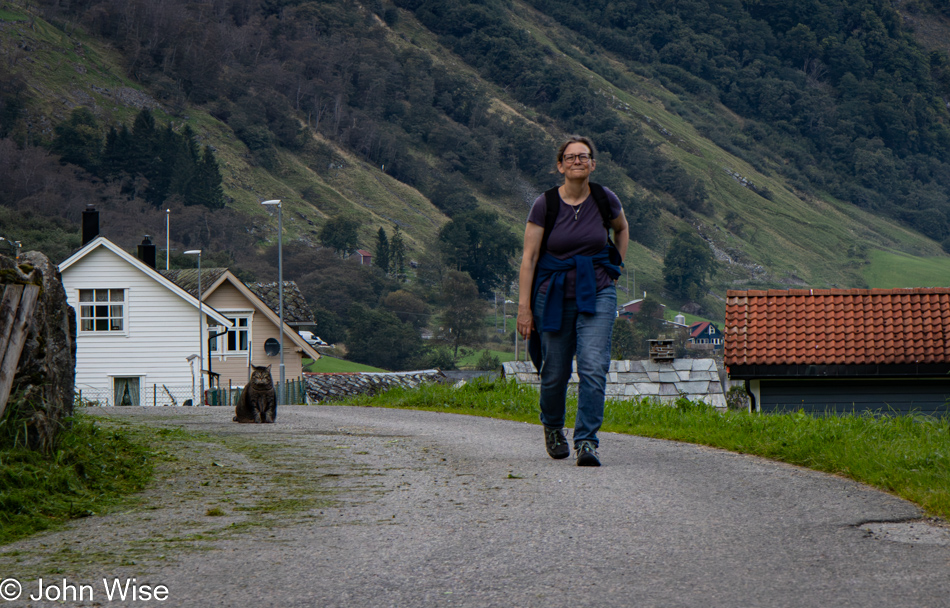
Guard Kitty, protector of Bakka, ensuring that those who visit don’t forget to leave, escorted us to the edge of town. He watched us a good long time to ensure we went on our way. At first encounter, he didn’t seem to have the best of humor, so we went in peace…after a few head scratches. Okay, I’ll come clean: there was nothing guard-like about this fluffy chunk of love. I wish we could have taken him with us as he seemed to want to come with us because he followed our every step from the white house in the background.
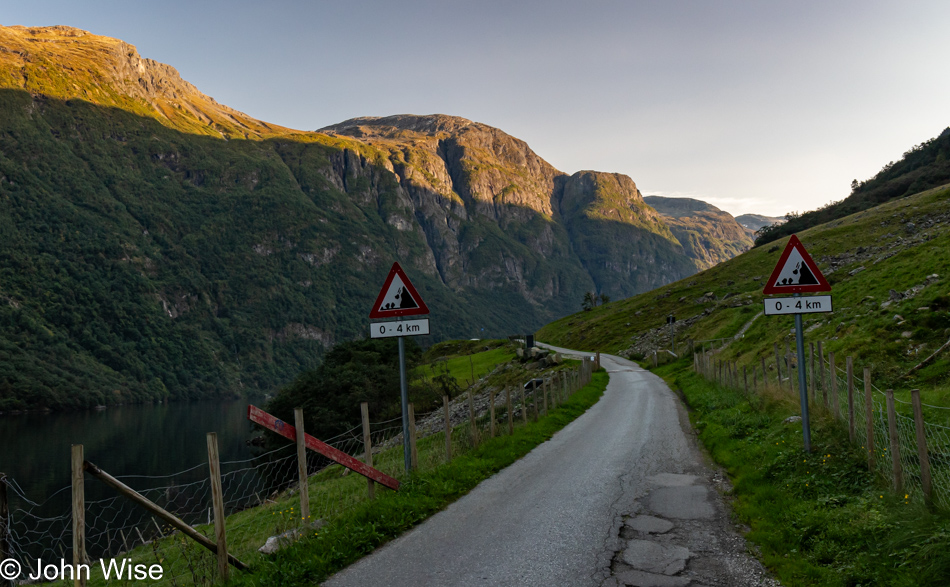
Like the yellow-brick road, except every direction delivers us to Oz.

Would you believe this is a furry unicorn sporting dual horizontal horns? Neither did Caroline, but not from a lack of trying to convince her, nor would she mount up after I insisted it was perfectly safe. Not included in this photo are the three cows from this guy’s harem that approached Caroline with curiosity, but at the moment one of them was about to get a head scratch and Caroline a sloppy licking, the girl got spooked and leaped away in the way only a cow can leap, which triggered my wife to also begin evasive maneuvers.
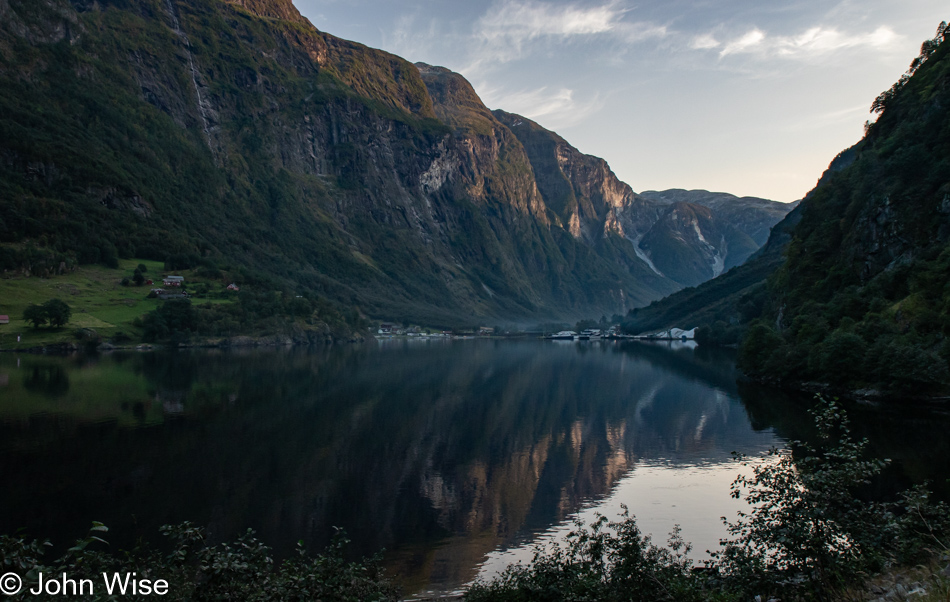
The window of infinite grace that shines brightly in the day is giving way to the world of the infinite dream, where darkness lures us to sleep and to the place where memories are collected, refined, or disposed of.
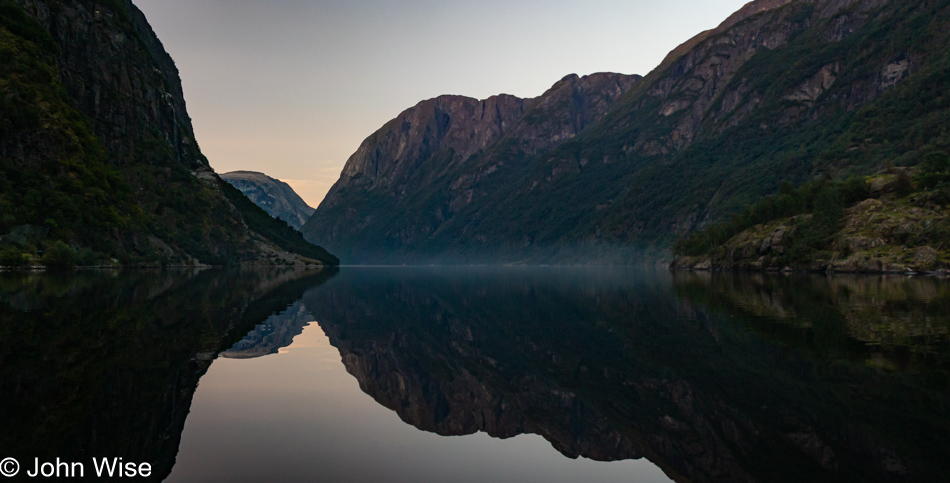
Dinner was an outdoor affair of fish, fjord, and the setting sun. Time to collect our impressions and head off for dreams of Vikings in our Viking room.
